Weather & Climate
Airports in Tuscany
Getting Around Tuscany
Top Things to Do
Best Chianti Hotels
Best Lucca Hotels
Castle Hotels in Tuscany
Top Destinations in Tuscany
Best Beaches
Siena Travel Guide
Montecatini Terme Travel Guide
Chianti Travel Guide
Pisa's Top Attractions
Things to Do in Lucca
Food to Try in Tuscany
Best Wineries
Best Time to Visit

The Best Time to Visit Tuscany
:max_bytes(150000):strip_icc():format(webp)/ElizabethHeath-Headshot-horiz-e7525e97616245958bf3d94e8db7f119.png)
Gary Yeowell / Getty Images
Tuscany is the second-most visited region in Italy after Veneto, the region of Venice. As a result, you can expect to find tourists there year-round. The terrain of Tuscany ranges from mountains to seasides to its famous rolling hills, meaning there are different weather systems throughout the region and different peak travel seasons depending on the location. But generally speaking, Tuscany is at its busiest from April through October—it's no coincidence that this is also when the weather is at its best. So while you'll have plenty of company, we recommend the months of April and May or September and October as the best times to visit Tuscany.
Weather in Tuscany
Weather-wise, there's not really a bad time to visit Tuscany—unless maybe you're planning a beach vacation in January. Fall through winter, most of Tuscany is rainy and mildly cold, though snow is unusual in all but the most northern parts of the region. Dreary fall and winter days may be offset by gloriously sunny and clear days, but there's no guarantee of either bad or good weather.
For the best weather, visitors to Tuscany favor late spring, summer, and early fall. The months of April and May are increasingly warm and sunny without being too hot. June, and especially July and August, see hot weather, especially in inland cities. Tuscany's beach resorts are packed in July and August and they may remain crowded into the first few weeks of September. By mid-September, family travel has dropped off as kids go back to school. But cities and towns will still be crowded with tourists—in fact, October is now one of the peak travel months in Florence, as visitors seek out cooler weather and still-sunny skies.
Portions of the Apennine Mountain chain runs through Tuscany, and there are a few ski resorts in the region. On years with sparse snowfall—increasingly regular as a result of climate change—resorts will either manufacture snow or open only during brief periods. January and February are the best months to visit if you want to find snow in the Tuscan Appenines.
Crowds in Tuscany
Will Tuscany be crowded when you visit? Probably. With the exceptions of January, February, and early March, most major cities in Tuscany, especially Florence, are crowded with tourists year-round. If crowds aren't your thing, then these winter months are a good time to visit, as long as you don't mind possibly cold, rainy, and cloudy weather. If you want pleasant weather and can put up with the crowds, then April to May and September to October are optimal months. If you visit Florence, Siena, Lucca, and other inland cities in July and August, you'll get crowds and hot, humid weather.
When visiting at any time of year, we strongly suggest you book ahead for any major museums and attractions you want to see. Most issue timed-entry tickets, meaning you'll have to plan your day around your entrance slot. But that's better than missing out on something you really want to see because you didn't buy your tickets in advance.
Tourist Attraction Availability
Tuscany is a year-round destination where you're unlikely to run into seasonal closures. Exceptions to this rule are at beach resorts and some smaller country hotels. Beach resorts are likely to close in October or November and reopen in May or June, and some smaller properties (mostly outside of cities) may opt to take a month or more off in January and February. Some city restaurants close down for a week or two in August, though this practice is less and less common.
Most museums and tourist attractions are open year-round, though they may close on Christmas, New Year's Day and Easter. Check their websites if you're planning to visit on one of these days.
January is one of the coldest months in Tuscany and the rest of Italy, daily temperatures are likely to be between 35 and 55 degrees F (2 and 13 degrees C), colder in higher altitude areas where snow might be a possibility. It will be even colder at night, so bundle up if you plan an evening stroll.
Events to check out:
- New Year's Day is quiet across the region. Most stores and tourist attractions will be closed, as will many restaurants.
- La Befana , or Epiphany, on Jan. 6 marks the end of the Christmas holiday season, though most stores and attractions will be open.
Tuscany in February won't feel much different than Tuscany in January. It's a cold month, though sunny days are possible—although snow is as well.
- Carnivale may fall in February, depending on the date of Easter. In Viareggio , on Tuscany's northern coast, a series of Carnivale parades are world-famous and often satirize current events. If you plan to visit Viareggio at Carnivale, book your hotel well in advance.
- In Florence, the Fiero Del Cioccolato (chocolate fair) takes place over 10 days in early February. It's held at Piazza Santa Croce.
March is a fickle month in Tuscany and all of Italy, with weather ranging from crisp, sunny spring days to torrential rains to late winter storms. If you visit in March, pack layers so that you can bundle up or strip down as the weather dictates.
- If Carnevale didn't fall in February, it will take place in March.
- Holy Week, the week leading up to Easter, will see masses and processions in Tuscany's larger cities. Smaller towns won't hold as many events, but many restaurants, museums, and stores will close on Easter Sunday and possibly Pasquetta, the day after Easter.
- In Florence, the Scoppio del Carro, one of the city's most important events, takes place in front of the Duomo on Easter Sunday.
April looks a lot more like spring than March did, so your chances of pleasant weather increase a great deal. Still, pack for a late spring storm or chilly nights.
- Easter and Holy Week, if not in March, will be celebrated in April.
- Festa della Liberazione, or Liberation Day, on April 25 is a national holiday marking the end of World War II.
May is one of the best months to visit Tuscany, especially if you plan on hiking or biking. Temperatures are warm but not too hot, and crowds haven't hit their peak. Pack a light sweater or jacket for cool evenings.
- In Florence, the Maggio Musicale Fiorentino , a classical music festival, takes place throughout the month and stretches into June.
June can be quite hot in most parts of Tuscany, though mountainous areas may still experience pleasantly cool weather. If you're thinking of a beach vacation, June is a good time to plan it—beach resorts won't hit peak crowds and pricing until July and August.
- Several big events in Pisa happen in June including the Battle of the Bridge, the Luminari, and the Regatta of San Ranieri.
- In Florence, the Calco Storico is a historic soccer match that takes place on June 24 and a big fireworks show follows.
July & August
The months of July and August in Tuscany are hot, humid, and crowded. Even in air-conditioned museums, retro-fitted cooling systems can't stand up to the summer crowds and heat. Rural areas and hilltowns might be slightly cooler, but you might find it most comfortable to rest in our hotel during the hottest afternoon hours, then set out again after things start to cool down in the evening.
- July is peak sunflower-viewing month in Tuscany. Get your cameras ready!
- The Palio of Siena , the famous bareback horserace, takes place in July and August. If you plan to attend, reserve your hotel room or vacation rental at least a year in advance.
- The Pistoia Blues Festival takes place in the northern Tuscan town of the same name.
- Ferragosto, Aug. 15, marks the quasi-official end to the summer holidays. Some towns may present concerts or evening fireworks.
It's an open secret that the weather in Tuscany is better in September than it is in August. As a result, lots of visitors have caught on. So while you'll still find crowds across most of Tuscany, at least it will be slightly cooler. At beach resorts, seawater should be comfortable for swimming until mid-September.
- The Giostra del Saraceno is a medieval jousting event in Arezzo on the first Sunday of September.
- Across Tuscany, the vendemmia, or grape harvest, takes place in September. If you're touring Tuscany's vineyards, this is a great time to witness the early phases of the winemaking process.
October in Tuscany is still crowded, but glorious fall weather makes up for that. This is a popular time to visit the region, so don't expect many hotel bargains.
- October is a great month for seasonal food festivals in Tuscany. Chestnuts and porcini mushrooms are in season, and the opening of hunting season means that wild boar (cinghiale), shows up on many fall restaurant menus.
November is cool and rainy, but less crowded than preceding months. Pack for wet weather and be extra grateful for the bright sunny days that may pop out.
- Nov. 1 is All Saints' Day, a public holiday.
- The olive harvest takes place all over the region, and restaurants and shops will be offering olio nuovo (new oil)—the freshly pressed, bright green extra virgin olive oil made from just-picked olives.
Cold, cloudy and rainy, dreary December in Tuscany is easily offset by the festive air that takes hold after the Feast of the Immaculate Conception on Dec. 8. Christmas decorations, lights, and nativity scenes pop up in cities and towns large and small.
- In Florence, a German-style Christmas Market takes place on Piazza Santa Croce.
- Temporary ice-skating rinks, such as FirenzeWinterpark , open in larger towns across the region.
- If you're planning to be in Tuscany for New Year's Eve, make sure you reserve a restaurant in which to have New Year's Eve dinner. It will last well past midnight and culminate with the eating of lentils and cotecchino (a pork sausage).
Tuscany attracts tourists year-round, but is busiest from April to October when the weather is best. The best time to visit for the fewest crowds is in the shoulder season in either April and May or September and October.
Tuscany has great weather all throughout the year with warm and sunny summers and just mild rain and slightly colder temperatures in the fall and winter. Spring is a great season as well, with consistently sunny days that are never too hot.
August is usually the hottest month in Tuscany with average high temperatures hovering between 80 and 90 degrees Fahrenheit (27 and 32 degrees Celsius).
The Best Time to Visit Spain
The Best Time to Visit Boston
The Best Time to Visit Disney World
The Best Time to Visit Johannesburg
The Best Time to Visit Naples, Italy
The Best Time to Visit the Dominican Republic
The Best Time to Visit Japan
The Best Time to Visit the Maldives
The Best Time to Visit the Great Barrier Reef
The Best Time to Visit Florence
The Best Time to Visit the Bahamas
The Best Time to Visit Milan
The Best Time to Visit Cape Town
Weather in Italy: Climate, Seasons, and Average Monthly Temperature
The Best Time to Visit Munich
The Best Time to Visit Mexico

BEST TIMES TO VISIT TUSCANY: Month-by-Month
When is the best time to visit Tuscany? Here’s my month to month guide to help you decide which month matches your interests and priorities.
There are highlights for each month, important events, and general weather guidelines.
I’ve included all the public Italian holidays , so you won’t be caught off guard by closed stores and restaurants.
You’ll also find my top 3 places in Tuscany to visit every month.
You may also be interested in the Best Times to Visit Italy: Month-by-Month and Months in Italian .
Table of Contents
JANUARY IN TUSCANY: GENNAIO
Public holidays in january to watch out for.
January 1: Capodanno ( New Year’s Day ) January 6: Befana ( Epiphany )
January in a Nutshell
The Christmas holiday season in Italy doesn’t end until after the Epiphany , or Befana , on January 6. That means kids are still on winter vacation through the first week of the month. In January, Tuscans are recovering from weeks of feasting and hanging out with their relatives . Relative calm returns to the cities.
January Weather
Even though Tuscany is not very big, its diverse topography (mountains, coast, valleys) means that the weather varies throughout the region. That said, January is Tuscany’s coldest month.
At night the temperature dips quite a bit. Low temperatures are about 3.5°C to 5.5°C inland (that translates to 38 to 42°F). Temperatures along the Tuscan coast are usually a few degrees Celsius warmer. Head for the mountains for snow and skiing. Despite the colder temperatures, there are usually a good number of sunny days to enjoy.
The weather in Tuscany and all over Italy has become much more unpredictable in recent years. There have also been more extreme weather events, like heat waves, droughts, and flooding.
Top 3 Places to Visit in January
Abetone for skiing Florence Arezzo

FEBRUARY IN TUSCANY: FEBBRAIO
February 14: Valentine’s Day (not a public holiday) Carnival period
February in a Nutshell
February is Carnival time. The major Carnival celebration in Tuscany is in Viareggio, on the sea. However, carnival is celebrated everywhere, mostly by children wearing costumes and throwing paper confetti.
My favorite part of Carnival is the incredible sweets. You can only taste them at this time of year! Not only that, different cities and towns have their own traditional carnival sweets that you can only find there. In Florence, make sure you try the schiacciata alla Fiorentina , a spiced yellow cake topped with powdered sugar.
Tuscans who work in tourist destinations like the beach or the Chianti countryside, where summer is high season, often have to take their vacation during this “dead” time of year. Double check if you’re set on going to a certain restaurant or small town. For example, islands like the Giglio and Elba empty out. Many of my favorite restaurants close for a few weeks in January or February.
February Weather
In February the weather is generally on par with January.
Top 3 Places to Visit in February
Viareggio for Carnival Florence San Gimignano to take advantage of low season
MARCH IN TUSCANY: MARZO
March 8: International Women’s Day March 19: San Giuseppe : Father’s Day in Italy
March in a Nutshell
Some trees are starting to flower, and you’ll notice yellow mimosas (the Italian flower of choice for Women’s Day) blooming. Foreign tourists start invading the major cities like Florence and Siena.
March is marked by Lent, but it is also the month of Italian Father’s Day ( San Giuseppe ) on March 19, when Italians enjoy delicious regional fried sweets. In Tuscany, there are frittelle di San Giuseppe , delicious, sweet fried rice balls– and the best ones are at a small stand in Siena’s Piazza del Campo. You can also find fresh fava beans and wild asparagus on Tuscan menus.
March Weather
March is the start of the transition out of winter to spring, and in most of Tuscany it’s light jacket weather by the end of the month. Be prepared for rain, however. March can be fickle, flipflopping between rain and gorgeous sunny days.
Top 3 Places to Visit in March
Montelupo Fiorentino for hand painted ceramics Siena to eat frittelle di San Giuseppe up until March 19 Montepulciano and Montalcino
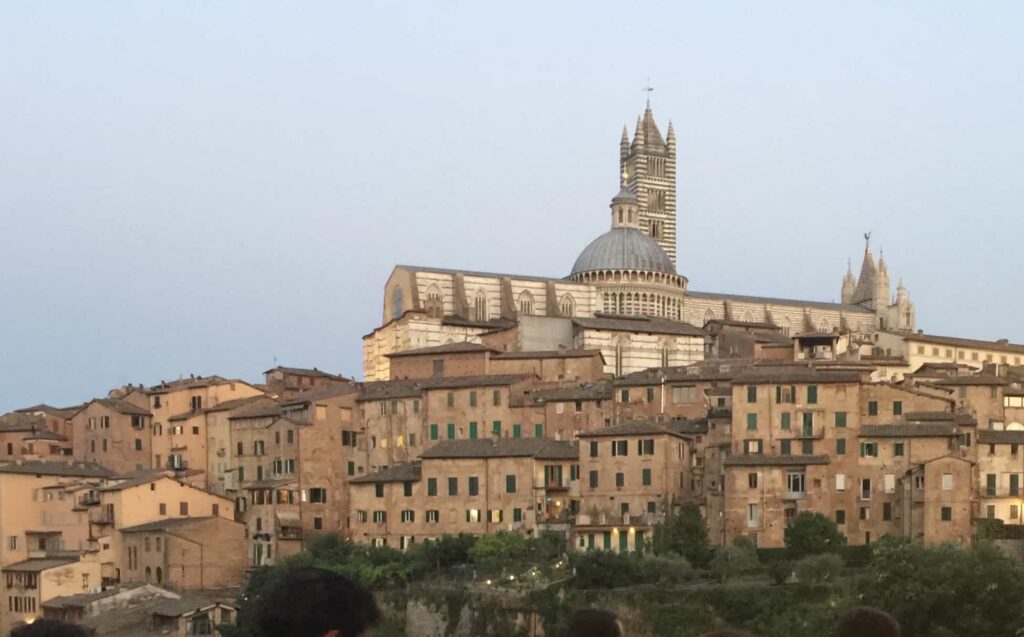
APRIL IN TUSCANY: APRILE
Public holidays in april to watch out for.
Between March 22 and April 25: Easter Sunday (falls on the Sunday following the first full moon after the spring equinox) The day after Easter Sunday: Easter Monday April 25: Festa della Liberazione ( Liberation Day )
April at a Glance
April is host to many lovely spring holidays in Italy, and flowers are in bloom. School children have about a week of spring holidays around Easter , and parents panic every year when they realize how many days off their children have.
April is a time for picnics in the countryside and day trips to the beach, which are a tradition on Easter Monday and April 25: if you’re on the road look out for traffic heading back into Florence on the evening after these holidays, and on Sundays.
April Weather
The weather is highly variable, with showers and clouds, as well as bright sunny days.
Top 3 Places to Visit in April
Florence for the scoppio del carro on Easter Monte Oliveto Maggiore monastery and the Val d’Orcia Lucca
MAY IN TUSCANY: MAGGIO
Public holidays in may to watch out for.
May 1: Festa del Lavoro ( Labor Day )
May at a Glance
May is the time of blooming flowers, street fairs and food festivals, called sagre . It’s a great time to head to the countryside and explore small country towns.
May Weather
May is technically spring, but in Tuscany it’s usually already quite hot . . . when the sun shines. Don’t count on May to be sunny every day though: rain often comes along.
Top 3 Places to Visit in May
Pitigliano and Saturnia Volterra Chianti countryside between Florence and Siena
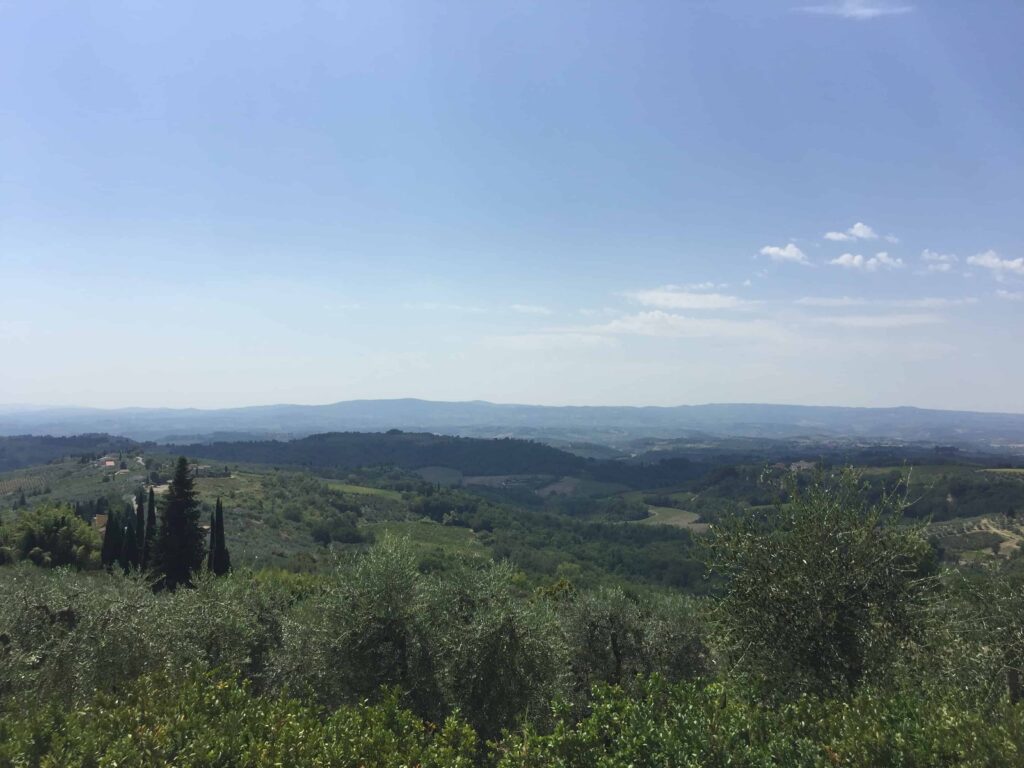
JUNE IN TUSCANY: GIUGNO
Public holidays in june to watch out for.
June 2: Festa della Repubblica ( Republic Day )
June at a Glance
June counts as summer in Italy: school gets out about 10 ten days into the month. It’s a great time to go to the beach, because it’s hot but there aren’t crowds or high season prices yet. June is also host to important local events like the calcio storico , Florence’s own high contact sport, with the final match on San Giovanni , or Saint John’s patron saint day , June 24.
June Weather
June is generally nice and hot, with little rainfall.
Top 3 Places to Visit in June
Florence , for the calcio storico and San Giovanni celebrations Giglio Island Elba Island
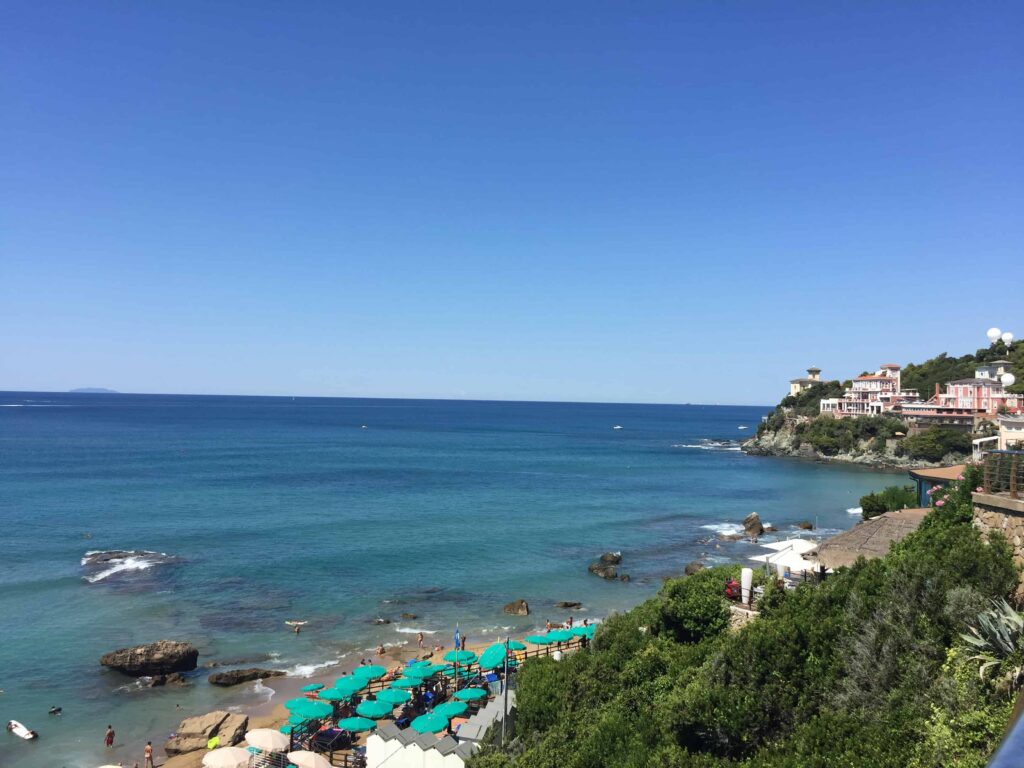
JULY IN TUSCANY: LUGLIO
July at a glance.
In July, the Tuscan summer is in full swing. If you like the heat, this is a good time to visit, but don’t say we didn’t warn you! There are a lot of people, and did I mention it’s hot? Places where you can cool off, like the beach and countryside, are your best bet in July. The cities are swelteringly hot and Italians don’t use air conditioning to the extent that Americans do.
There are also wonderful local festivals, like the Palio di Siena horse race on July 2, and the Mercantia street arts festival in Certaldo.
July Weather
Hot. Hot. Hot. and Dry. The average high temperature is 30 °C.
Top 3 Places to Visit in July
Siena for the Palio on July 2 Certaldo for the Mercantia street arts festival in July Poppi and the Casentino
AUGUST IN TUSCANY: AGOSTO
Public holidays in august to watch out for.
August 15: Ferragosto ( Assumption Day )
August Summary
August is the highpoint of the Tuscan summer. Not only that, most Italians take their summer vacation in August, taking off the entire week, if not two or three, around Ferragosto . Cities clear out because it’s so hot, and it’s not unusual for small towns to shut down too. Tuscans head to the beach or the mountains, which are crowded and abuzz. Only come to Tuscany in August if you like very hot weather.
August Weather
So hot. The average high temperature is still 30 °C.
Top 3 Places to Visit in August
Siena for the Palio on August 16 Poppi and the Casentino, Tuscany If you like the beach and crowds: Cecina , Forte dei Marmi , Castiglioncello
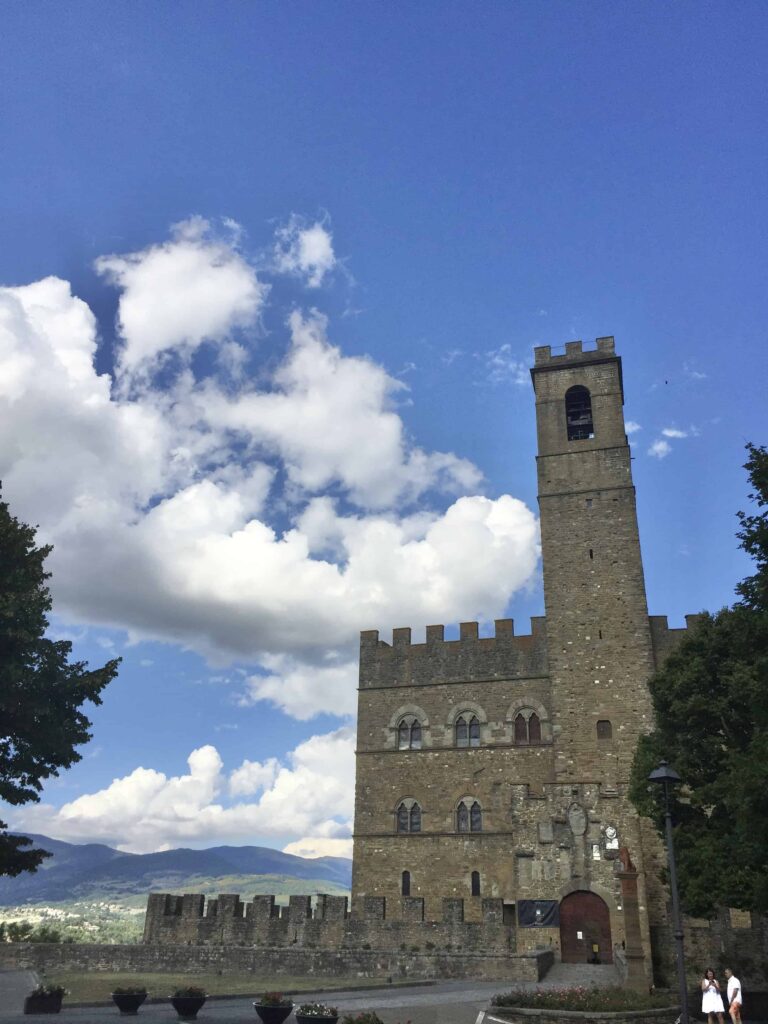
SEPTEMBER IN TUSCANY: SETTEMBRE
September summary.
The summer isn’t officially over yet for Italian school children until about September 15, when schools open again. September is a wonderful time to visit if you’re interested in wine, since it’s time for the grape harvest , or vendemmia . Since it’s still hot, it’s a great time to visit beach destinations now that the summer hordes have gone home.
September Weather
It’s usually still quite hot and dry for most of the month. The average high and low temps are 2-3 degrees Celsius cooler than August.
Top 3 Places to Visit in September
Elba Island Giglio Island Chianti countryside between Florence and Siena
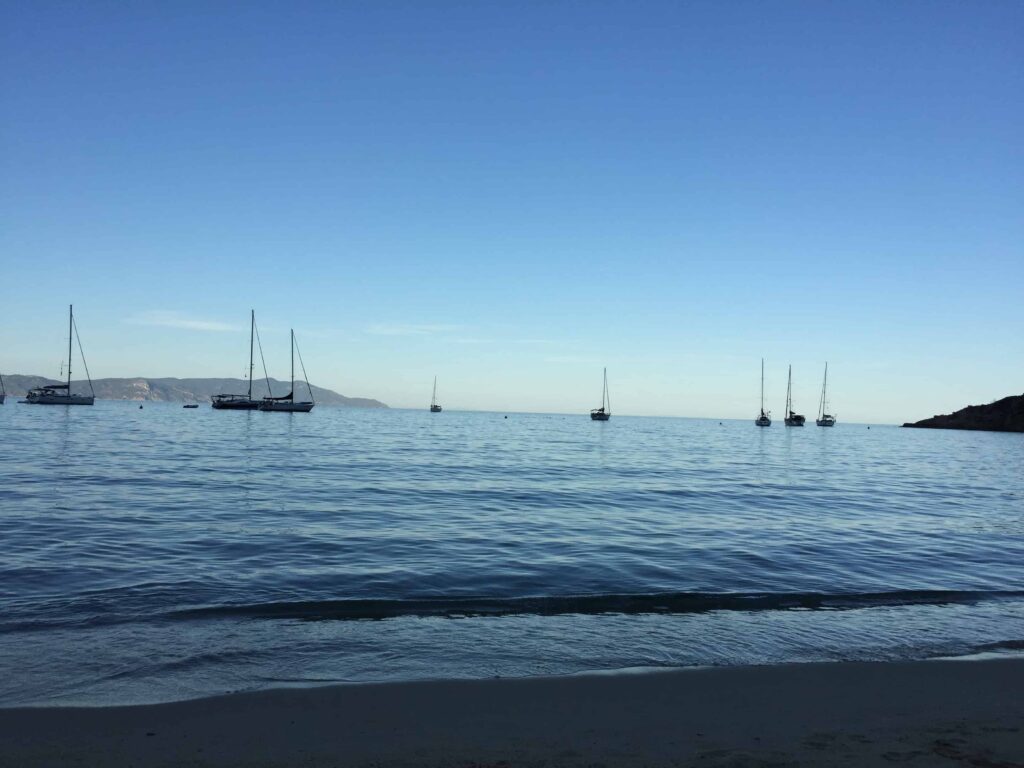
OCTOBER IN TUSCANY: OTTOBRE
October summary.
October is a lovely time to visit Tuscany, especially if you like chestnuts ( castagne ) and mushrooms ( funghi ), which are in season. Parts of Tuscany have already started harvesting their olives for olive oil, so keep an eye out for freshly milled extra virgin oil ( olio nuovo ), which is exquisite.
Though Halloween is not as widely celebrated as it is in the US and England, it has become more and more popular in recent years.
October Weather
Temperatures are cooling off (the average high temperature is 22 °C, with the average lows at 11 °C) but it’s still very comfortable and warm in much of Tuscany.
Even with the weather so unpredictable in recent years, we have noticed a trend: October seems to be getting hotter. So hot that my father-in-law was able to take an October swim in the sea last year (2022). My kids almost never have to wear a jacket on Halloween.
Top 3 Places to Visit in October
Chianti between Florence and Siena Val d’Orcia San Galgano
NOVEMBER IN TUSCANY: NOVEMBRE
Public holidays in november to watch out for.
November 1: All Saint’s Day
November in a Nutshell
November means three things to me: truffles ( tartufi ), chestnuts ( castagne ) and olive oil ( olio di olive ). It’s an incredible month for eating. Tasting freshly pressed olive oil ( olio nuovo ) is a must: when it is fresh it is the extraordinary color of ectoplasm.
November Weather
November is Tuscany’s rainiest month. Though the weather is colder and rainer, but there are usually plenty of warm, clear days.
Top 3 Places to Visit in November
San Miniato , Tuscany for the White Truffle Market Fair Pisa and Lucca Val d’Orcia
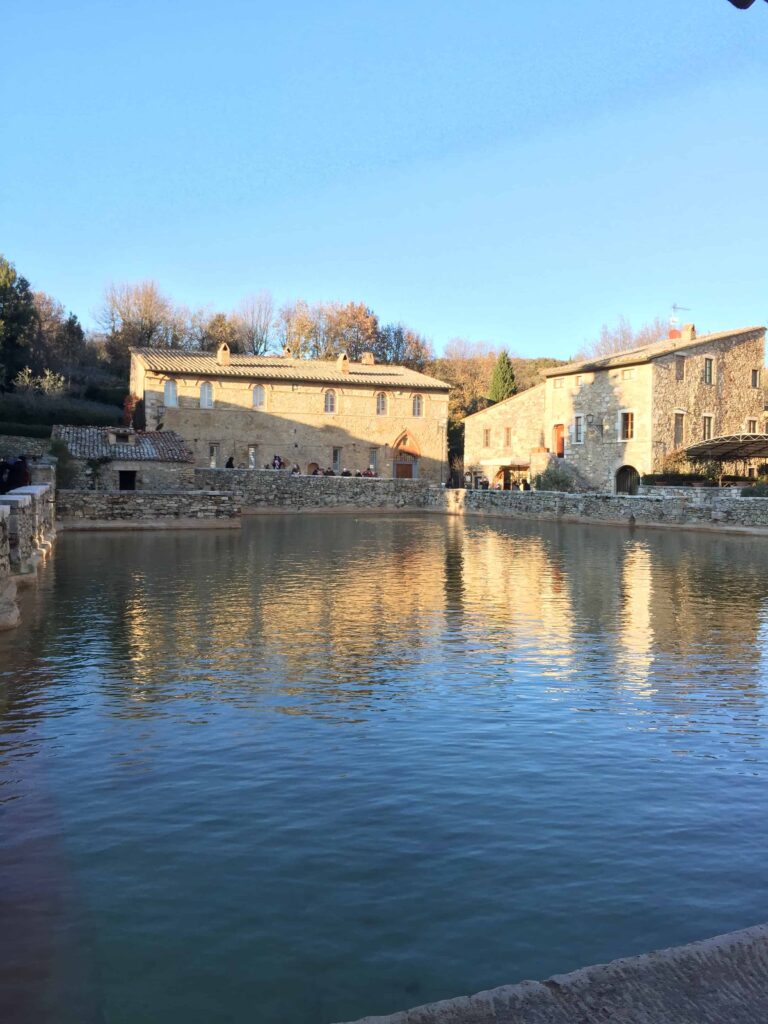
DECEMBER IN TUSCANY: DICEMBRE
Public holidays in december to watch out for.
December 8: Immacolata ( Feast of the Immaculate Conception ) December 25: Natale ( Christmas ) December 26: Santo Stefano ( St. Stephen’s Day ) December 31, New Year’s Eve, is not a public holiday but most shops close early.
December in a Nutshell
The festive mood of the Italian Christmas holiday season ( le feste ) livens up most of December. Cities set up elaborate light displays and decorations, and churches put up nativity scenes ( presepi ). Italian schools close for the Christmas holidays for two weeks starting at Christmas. The closer to Christmas, the more crowded cities become, with holiday shoppers and local Italians admiring the dazzling Christmas decorations.
December Weather
Average temperatures range from a low of 4° C to a high of 12 ° C in December. Not exactly cold compared to what a lot of Americans are used to in the winter!
Top 3 Places to Visit in December
Florence Siena Abetone for skiing
Privacy Overview
Tuscany, Italy Travel Guide
Courtesy of Peter Zelei Images | Getty Images

Best Times To Visit Tuscany, Italy
The best times to visit Tuscany are between late September and October and between April and May. During these months, travelers will find comfortable temperatures and fewer crowds at the major sights. As expected, summer ushers in high temperatures and heavy crowds. If you want Tuscany all to yourself, visit during the winter low season, but expect the cold and lots of rain.
Find Flight and Hotel Deals
Navigate forward to interact with the calendar and select a date. Press the question mark key to get the keyboard shortcuts for changing dates.
Navigate backward to interact with the calendar and select a date. Press the question mark key to get the keyboard shortcuts for changing dates.
Explore More of Tuscany, Italy

Things To Do

Best Hotels

You might also like

# 1 in Best Places to Visit in October 2024

# 6 in Best Beaches in France

Napa Valley
# 3 in Best Romantic Getaways in the U.S. for 2024
If you make a purchase from our site, we may earn a commission. This does not affect the quality or independence of our editorial content.
Recommended
The 28 Best Water Parks in the U.S. for 2024
Holly Johnson|Timothy J. Forster May 8, 2024

The 18 Best Napa Valley Wineries to Visit in 2024
Lyn Mettler|Sharael Kolberg April 23, 2024

The 25 Best Beaches on the East Coast for 2024
Timothy J. Forster|Sharael Kolberg April 19, 2024

The 50 Best Hotels in the USA 2024
Christina Maggitas February 6, 2024

The 32 Most Famous Landmarks in the World
Gwen Pratesi|Timothy J. Forster February 1, 2024

9 Top All-Inclusive Resorts in Florida for 2024
Gwen Pratesi|Amanda Norcross January 5, 2024

24 Top All-Inclusive Resorts in the U.S. for 2024
Erin Evans January 4, 2024

26 Top Adults-Only All-Inclusive Resorts for 2024
Zach Watson December 28, 2023

Solo Vacations: The 36 Best Places to Travel Alone in 2024
Lyn Mettler|Erin Vasta December 22, 2023

26 Cheap Beach Vacations for Travelers on a Budget
Kyle McCarthy|Sharael Kolberg December 4, 2023

Best time to visit Tuscany
Tuscany has a Mediterranean climate, with hot dry summers balanced by cold winters. The southern coast has the milder climate, while the mountainous north is the cooler. The best time to visit Tuscany is in the Spring, and September to late October.
Spring is one of the best times to visit Tuscany
Spring is a perfect season to visit Tuscany. By the end of March days are starting to get longer and the temperature is mild and pleasant (18°- 20ºC max), with the occasional shower. The trees are in blossom and the countryside is alive with birds and activity. Discover what’s great about Tuscany in Spring !
TIP! Keep in mind the Easter Holidays are a popular time for Italians to travel to Tuscany, and main cities like Florence and Siena get pretty busy during the Easter weekend. Other Spring bank holidays are the 25th of April and the 1st of May .
Things to do during Easter in Florence .
Check out top events in March in Tuscany , and April in Tuscany, weather and events .
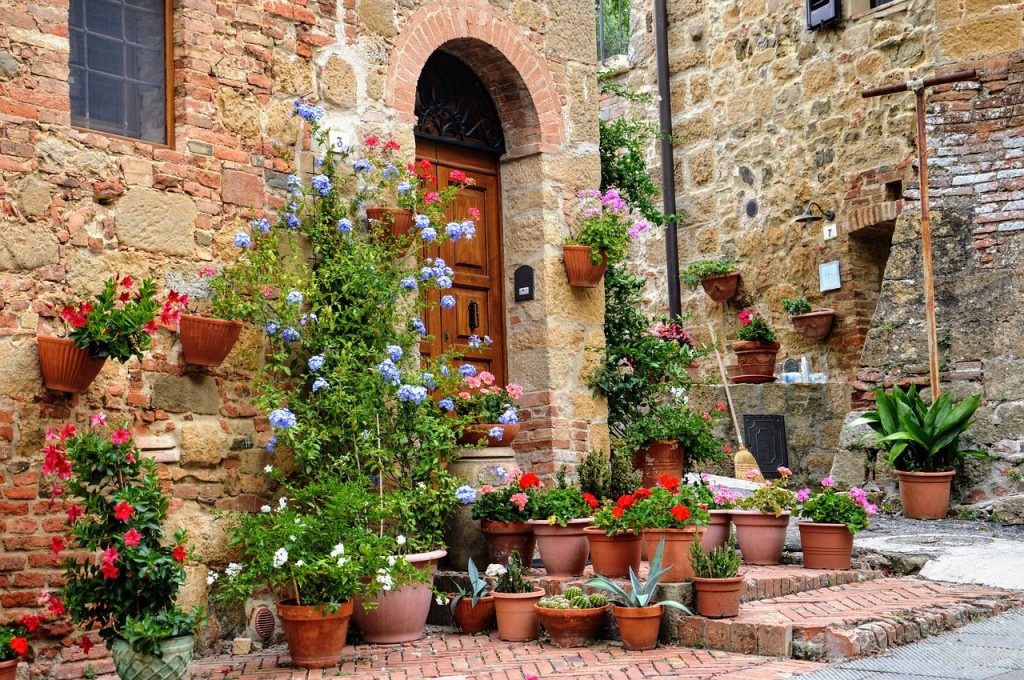
May and the beginning of June is a perfect time to visit Tuscany. Temperatures hover around 25 °C, and the countryside is at its most colourful . It’s a good time to go to the coast as there are fewer people around (Italian school holidays last from 15 June to the first week of September). You’ll enjoy half empty beaches, and the sea in June is usually warm enough for a swim. It’s a good time to visit the cities as the temperature is still pleasant , but bear in mind that the peak season starts in mid-June and ends at the end of August.
Find out the best destinations to enjoy Springtime in Tuscany . And everything that’s special about Florence in May and all events in Florence in June . And best events and some trip ideas if you’re visiting Tuscany in May .
=> Tuscany in June: best events and traditional festivals
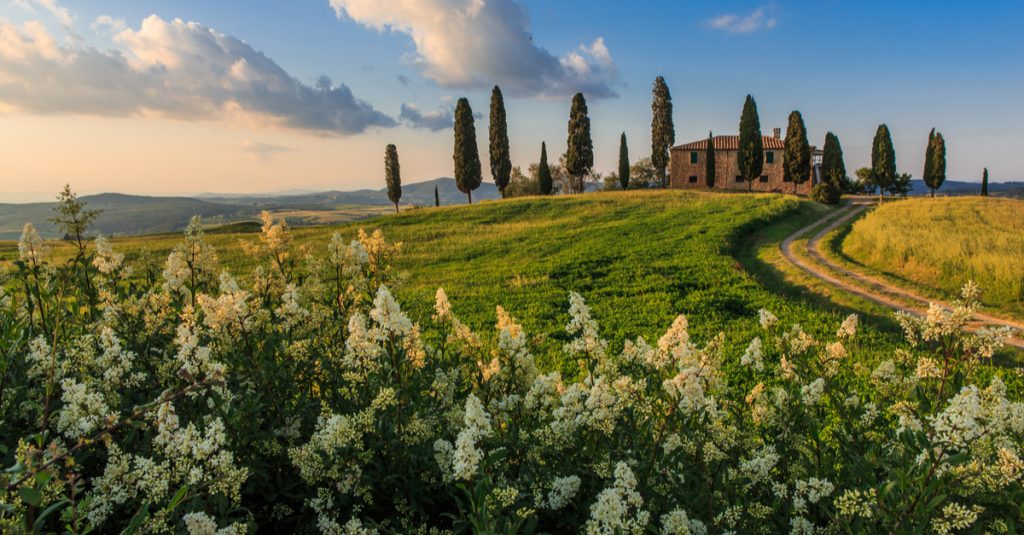
Summer is perfect for a country stay or a beach holiday
Summer is hot and busy, but it’s a good option if you’re planning a stay in the countryside or in the cooler areas. But it’s not the best time for sightseeing . July and the first half of August is the hottest time , with temperatures occasionally reaching 35°C, making it quite uncomfortable particularly in Florence (that is why prices of hotels go down in August). But it’s pleasant in the hills and on the coast, where the breeze helps and the evenings are cooler.
If you’re planning a beach holiday remember that from the end of July to the end of August, it’s peak season for Italian tourism, and beaches get packed with families. The beaches in the southern Maremma are your best bet in these months. And July , everywhere, is less crowded than August.
Discover the best way to enjoy your summer holiday in Tuscany and why September is a special time to visit this part of the world.
⇒ Trip ideas for your Summer holiday in Tuscany.

Autumn is a delight in Tuscany
Autumn is a perfect time to visit Tuscany . Temperatures are still pleasant in late September (26°C max) and October (20°C max), cities aren’t too crowded and the vineyards and forests turn every shade of yellow and red. You can still enjoy the beach in September , as there are fewer people and agreeable temperatures. In October it’s still mild, with the occasional rain shower as the only drawback. November is a good month to visit Florence , as it is less busy.
Find out some of the best destinations for an autumn trip to Tuscany . And our favourite small towns for an autumn trip , like scenic Radda in Chianti or Barga in the Garfagnana.
⇒ What to do in October in Tuscany , best events and food festivals.
⇒ Find out What to Wear in Tuscany in Autumn .

Enjoy the cities’ attractions in Winter
Winter: January and February can get quite cold (average 7°C). While snow in Florence is rare, it can snow in the countryside and always in the mountains. Rainfall is low. => see more details about Winter Weather in Tuscany .
November to February is low season , making it a very good time to visit the main cities like Florence and Siena , but also San Gimignano or Cortona . Fewer crowds means that you can better enjoy the sights. In December the towns are twinkly with Christmas atmosphere . In the winter smaller centres in more remote areas become very quiet, and that can also be a blessing.
Discover all the delights of December in Florence, December events in Tuscany , and why Winter is a very special time to visit Tuscany .
=> Why Winter is the best time to visit Florence .
When does it rain the most?
Spring and autumn get more rain. April and November are the wettest months. March also usually gets a good amount of rain.
=> March in Tuscany: best events and weather
When can I swim?
From late May/early June to September. The southern coast is warmer all year round, with mild winters.
Do I need a heavy coat?
Yes, from November to March. Bear in mind that in spring and autumn temperatures vary a lot from day to night, especially in the hills and mountains. So while you can wear a t-shirt during the day you might need a jumper or heavier layer in the evening.
When is the best time for outdoor activities in Tuscany?
For walking in the countryside and hiking in the mountains or the coastal areas, the best time is Spring and September , the time of the grape harvest. October is also a delightful month with mellow colours in the vineyards and forests, while the days are still long enough and the temperature mild enough to enjoy the outdoors and all the delicious smells of mushrooms and new wine.
For a beach holiday , think end of May to June, and September. If you don’t mind the heat, July is less crowded than August. Avoid August if you can, it’s when everybody in Italy heads for the coast. The last week of August starts to get less crowded but it’s usually rainy.
⇒ What to pack for your trip to Tuscany .
Italian holidays
Official state holidays include January 1, January 6 (Epiphany), Easter Sunday and Monday, April 25 (Liberation Day), May 1 (Labor Day), June 2 (Republic Day), August 15 ( Ferragosto, Assumption Day), November 1 (All Saints’ Day), December 8 (Day of the Immaculate Conception), December 25, and December 26 (Santo Stefano). Florence honours its patron, St. John the Baptist, on June 24.
Your friendly online guide to Florence and Tuscany. Get our insider travel tips delivered to your mailbox every month.
Email address:
Read Our Popular posts
- 3 Scenic Drives in Tuscany, Italy 895 views
- Best coastal towns in Tuscany 583 views
- My secret Florence – Hidden gems in the city of the Renaissance 422 views
- Val d’Orcia itinerary – A day driving around Val d’Orcia 399 views
- Chianti Road Trip – A scenic drive on the Chiantigiana Road 280 views
- 10 Non-touristy things to do in Florence 216 views
- 10 Best Chianti Towns to visit 215 views
- 12 Amazing hilltop towns in Tuscany 187 views
- 8 Famous Statues in Florence you have to see 169 views
- Val d’Orcia, 5 Picturesque small towns to visit 163 views
Recommended Reading
Getting around tuscany.
Getting around in Tuscany is relatively easy, even without a car. Chances are there's a bus...
Cities in Tuscany
A brief introduction to the main cities in Tuscany and their attractions. Florence is the...
Top Sights in Tuscany
Here's a list of some of the top sights in Tuscany. See the views, paintings, and...
Getting to and from Florence and Pisa airports
Everything you need to know about getting to and from Florence and Pisa airports in the region...

The Best Time to Visit Tuscany: A Monthly Breakdown
Home > Blog > The Best Time to Visit Tuscany: A Monthly Breakdown

Tuscany: the glorious heart of the Italian countryside, the home of the Renaissance, and a region that’s overflowing with delectable wine and delicious cuisines. From the bustling, medieval streets of Florence to the serene peace of the Tuscan Hills, there’s so much waiting to be discovered in Tuscany.
But when is the best time to visit Tuscany? Well, that depends on how many other tourists you want to share the attractions with and what kind of temperatures you prefer. Tuscany is busiest in summer, just like the rest of Italy, and between June and August, it’s not only swelteringly hot but outrageously crowded in the most popular areas.
Outside of this, the shoulder seasons of spring and fall are both marvelous times to visit, with pleasant weather and far fewer tourists around to spoil your pictures. To help you plan your next Italian getaway, here’s our monthly breakdown of the best time to visit Tuscany.
January is the coldest month to visit Tuscany, and it’s never really seen as the best time to visit Italy unless you’re looking to ski in the mountains. Luckily though, Tuscany does have its share of ski resorts, and compared to more popular winter sports locations such as the Dolomites further north, these resorts can be much quieter.
Temperatures are low, averaging from 37 to 50 degrees Fahrenheit, depending on where you travel. It’s colder inland and higher up, so if you’re after warmer weather, then head to the Mediterranean coastline. The provincial capital, Florence, is always a good place to visit in January with few other tourists around, and plenty of good food and an intriguing culture to soak up when it’s cold outside.
If you’re in Tuscany in January, then make sure that you:
Celebrate New Year’s Day: New Year’s Day is a national holiday in Italy, and you can celebrate in style across Tuscany.
Celebrate Epiphany: Held on the 6 January each year, Epiphany marks the end of Christmas, and you can watch the grand parade that’s held in Florence.
February is still a cold month to be in Tuscany, but it’s a great time to escape the crowds that are waiting for summer. You can expect rain showers and low temperatures, but again, head to the coast for a little bit of warmth.
Visit the cities of Florence or Siena, and take advantage of the ski season in places like Abetone or Zum Zeri, or anywhere else in the mountains. When you’re in Tuscany, be sure to:
Celebrate Carnival: This huge Italian tradition is different in every town, village or city across the country, but in Tuscany, the celebrations are usually held in February (although the exact date can vary).
Get Romantic: The Tuscan Hills are the land of romance and love, and few other places in the world are so perfectly romantic as here. For Valentines Day, take your date into rural Tuscany for wine, food and an escape from the world.
Visit Arezzo: This charming small town in the hills of Tuscany hosts a unique antique fair at the start of February, which can claim to be one of the oldest such markets in Italy.
March is the start of spring in Tuscany and the weather is definitely starting to improve. In the mountains, this is the last chance to enjoy a spot of winter sports, as the snow begins to melt as the temperatures rise. Along the coast, you can enjoy the Mediterranean as the sun begins to shine.
Tuscany is quiet in March still, so take advantage of the lack of tourists and visit famous destinations such as Pisa, Florence or Siena before the high season begins. In March, make sure you check out the following events and places:
Mark the Second New Year: Unusually, many people in Tuscany – and particularly in Pisa – celebrate a second New Year, on March 25. This dates back to when Pisa and the surrounds used a totally separate calendar to the one in place now, and many locals today want a second chance to have a party.
Visit Viareggio: The coastal commune of Viareggio is known for its colorful parades and carnival celebrations, which are often held in March.
Women’s Day and Father’s Day: March 8 is Women’s Day in Italy, while March 19 is Father’s Day.

April is a real shoulder season for travel in Tuscany because as the spring weather brings warmers climes, more tourists are starting to arrive. It’s a lovely time to visit Tuscany because the weather is wonderfully pleasant and the crowds are still thin.
Get Religious: April is a religious month in Italy because this is when Easter is generally celebrated. Lent comes to a close and there are different festivities across the province.
Exploding Carts in Florence: Visit the Tuscan capital for an unusual Easter celebration, whereby every Easter Sunday, a cart loaded with fireworks is quite literally exploded in the city.
Enjoy Spring: Springtime means warm temperatures and beautiful countryside, so head into the Tuscan hills and enjoy local homestays or tours of the wineries as nature blooms around you.
It’s not quite peak season in Tuscany yet, but things are getting that way and this is a month that’s getting busier and busier. Temperatures are on the rise, and you can expect highs reaching up to 86 degrees Fahrenheit on a hot day.
Visit Pisa, Florence or Siena before they become far too busy in June, or take a trip to the coast to enjoy the beaches of Tuscany before the high season begins. In May, make sure you:
Drink Wine: The tradition of Open Wine Cellars, or Cantine Aperte, is held across Tuscany in May, offering you the chance to try free wine at many of the region’s best wineries and wine cellars.
Flower Festivals: There are flower festivals held in small villages and towns across Florence to celebrate color and nature.
Wine Tours: Take advantage of the lovely weather and visit Tuscany’s best wineries in the countryside.
June is the start of the summer high season across Europe, as temperatures rise as high as 90 degrees Fahrenheit – and Tuscany is no exception. The crowds begin to get busier, but they aren’t as busy as July or August.
If you’re in Tuscany in June, then enjoy the following:
Beaches: Head to the Tuscan coastline to make the most of the clear skies and soaring temperatures. Take a beach holiday along the Tyrrhenian coast, and enjoy sun, sea, and sand.
Wineries: Visit the countryside and call into spectacular wine destinations such as Chianti in Greve, or San Gimignano.
Road Trip: Take a road trip into Tuscany, to explore the lesser-known medieval villages of the region, in the glorious sunshine.
July is well and truly peak season in Tuscany. Not only are the temperatures uncomfortably hot, but the crowds are uncomfortably large too. Stay away from the most popular destinations such as Pisa or Florence, and try to get off the beaten track.
In July, take the time to:
Visit Siena: While Siena is busy and bustling in peak season, July is also when the infamous Palio di Siena takes place. This historic tradition sees riders racing horses through the medieval streets of the city on 2 July.
Have a Beach Getaway: With soaring temperatures, there’s nothing better than sitting out on the sand along the Tuscan coastline, and taking a dip in the Tyrrhenian Sea when it gets too hot.
Wineries: Get out of the cities and into the cooler countryside, and enjoy refreshing tastings of fantastic wine at the many Tuscan wineries.

August is still peak season in Tuscany, and you can expect the crowds to be just as large as July. This is high season across Italy and Europe because, for many, it’s the school holidays and the only chance that families get to travel.
In August, when you’re visiting Tuscany you’ll want to:
Visit Siena (again): If you missed it in July or if you want to see more, then Siena hosts a second round of horse racing through the medieval streets on 16 August. This is the second event of the Palio di Siena, and it’s just as chaotic and mad as the first.
Have a Beach Getaway (again): August is the perfect time for lazing around on the coast, just like in July. Enjoy the sun, sea, and sand of the Tuscan beaches.
Hire a Vespa: The best way to escape the crowds in August is to go on a road trip. Hire a classic Vespa scooter and enjoy the great weather as you cruise through the countryside.
Things quieten down in September after the rush of the school holidays is over, and it’s a great time to visit Tuscany if you want excellent weather and smaller crowds. This is when the harvest season begins, and you’ll find that Tuscany is gourmet heaven in September.
In Tuscany in September, you can enjoy:
Arezzo: At the start of September, the city of Arezzo hosts an excellent medieval-themed festival celebrating history and heritage. You can watch horsemen jousting in the streets and many more quirky events too.
Florence: In Florence, the crowds are thinning out, so you can enjoy the Renaissance city in more comfort. Florence hosts plenty of great festivals in September too, including a Lantern Festival and a Grape Festival.
Wine: With the grape harvests coming in, Tuscany is a whirl of wine tourism in September, and you can visit wineries and enjoy wine and grape festivals across the region.
Visitor numbers continue to fall in October, but the weather remains remarkably pleasant in Tuscany. This is a great month for shoulder season travel, as you’ll get excellent prices and deals and can avoid the summer crowds. October is fall, and Tuscany is resplendent in autumnal colors.
In October, Tuscany is great for:
Fall Scenes: Travel into the famed Tuscan Hills and visit the vineyards and wineries, where you can enjoy the golden glow of fall, as the scenery changes from green to red, brown and gold, amongst many more shades of color.
Visit Impruneta: In the town of Impruneta, October sees one of the oldest cattle markets in Italy taking place. Farmers arrive from the countryside, and all kinds of quirky traditions and events are held in the town.
Visit Volterra: The town of Volterra, a historic, medieval hilltop settlement, hosts a fantastic truffle festival in late October, where you can enjoy plenty of local truffles and plenty more local foods too.

The weather takes a turn for the worse in November, and the mountainous regions in the north of Tuscany will even begin to see snowfall, while the coast and the countryside see falling temperatures and rainfall. This is the offseason, so take advantage of the small crowds and low costs.
In November, Tuscany is great for:
Low Season Deals: Prices are low in November, as the summer crowds are long gone.
Sightseeing: Head to Pisa to see the Leaning Tower without too many fellow tourists, or take the time to visit Florence’s museums and palaces, again without the tourists.
December is low season too, but over the festive period, visitor numbers can increase in Tuscany, or at least in the cities. The coast is cold and rainy, but in the mountains, there’s snow and the ski season begins.
In December, visit Tuscany for:
A City Break: Take a city break in Florence or Pisa, or even in Siena, where you can enjoy indoor attractions if the rain falls, and where you can find Christmas markets in abundance.
Christmas Celebrations: Christmas is big in Italy, of course, and you can celebrate all through the festive period and right up until Epiphany on 6 January.
Italy is the most romantic destination to visit in Europe. Full of stunning cities, divine food and wine, and glorious scenery, few other places in the world can pull at the heartstrings quite as much as Italy can. So what are you waiting for? Start planning your dream, romantic getaway with Italy4Real today!
About the Author

Rem Malloy started Italy4real back in 1995 with his mother, Deborah de Maio.
He specialises in Italian tours as well as customised tours to France, England, Ireland, Germany, Switzerland, Greece and Spain. He was also featured in the Travel Channel show Mysteries at The Museum in 2016.
Rem has family in Italy and his mothers home town is Cava di Terrani, near the Amalfi Coast. The family has a street named after them in Sorrento, Via Luigi de Maio; a relative who was mayor of Sorrento.
Other Blog Posts You Might Like

Where to Stay in Venice: The Best Areas and Neighborhoods

When is the Best Time to Visit Florence?

When is the Best Time to Visit Venice?

What to Do in Florence for 3 Days

The Best Foods in Sicily That You Need to Try

The 5 Best Day Trips from Florence
You are using an outdated browser. Please upgrade your browser to improve your experience.
Fall in love with Tuscany!
Discover Tuscany Newsletter
Ask the Tuscany Experts on our Forum
- Book your Hotel
- Rentals by Owners
- Museums & Tours
Get the lowest rate for your Hotel in Tuscany through Booking.com
Get the best deal direct from the owners on TuscanyAccommodation.com
Book your unique Tuscan Experience
Book your Tour
Book your Tickets ahead & Skip the line!
Buy Museum Tickets
- Tourist Info
- Tuscany: When to go
Weather in Tuscany: the Best Time to Visit Tuscany
When is the best time to go to Tuscany?
The climate in Tuscany is generally mild with differences depending on the geography of each area. The coast and valleys tend to have hotter summers than the hills or mountains although the coast benefits from breezes off the sea for cooler temperatures even in those warmer months.
Taking the weather into consideration, we would say Tuscany's best travel months (which are also its busiest and most expensive) are April , May , June , September , and October . These months combine the convenience of peak season with pleasant weather . T hey have sunny days , with some rainy days as well.

Winter offers many sunny, mild days but nights are cold, particularly in hill areas. Just dress in layers , be prepared for shifts between daytime and evening.
The coolest months are January and February , with January being a bit cooler. Temperatures tend to be about 45°F (7°C) along the coast and from 38 to 42°F (3.5°C to 5.5°C) inland. Temperatures in the mountains are below freezing, where snowfall attracts skiers , perfect for a winter holiday on the slopes! Interested in skiing or enjoying other winter activities ? Make sure to read our tips on where to go!
On average, November is the month with the most precipitation but October, December, March and April also generally get a good amount of rain without being super wet. Every year is different so these are just to give you an idea of what to expect.
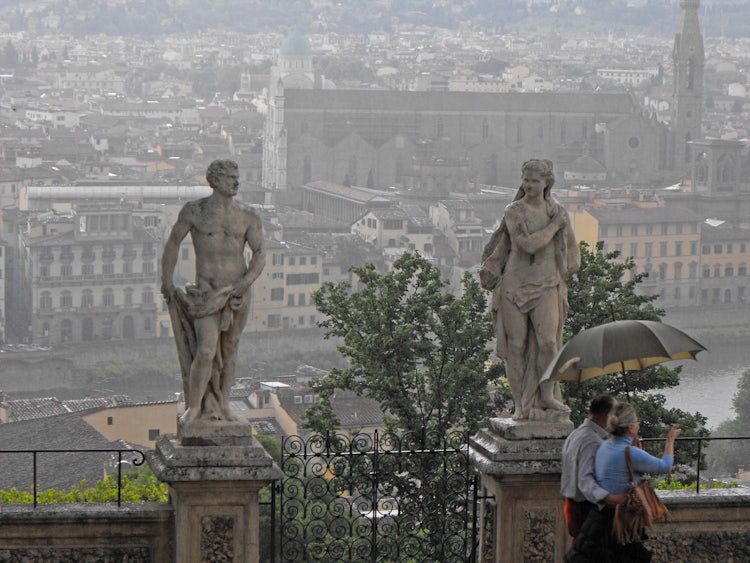
The best months to visit
Interested in florence.
Check out when it's the best time to visit Florence !
It is important to remember that the tourism season in Tuscany stretches from mid-April to the end of September with July and August being peak months . The best time to visit Tuscany is really in the quieter part of the season, from April to June and from September to October when weather is usually good, prices a bit lower (often called the mid season) and there are "fewer" tourists to crowd the main sights. This means lines are shorter at the main museums, with a bit less crowds inside the museums and also shorter wait times to be seated at popular restaurants (where reservations are recommended in any case).
For this reason, many have discovered the advantages of visiting during the " low season " (winter and early spring) as rates are lower and the reduced number of tourists is visible. Read all of the pros of visiting Tuscany in the low season here .
The periods around Easter and Christmas are also peak tourism dates as many locals join in to go on vacation (as is the case in August , when many have vacation time). For this reason, expect higher prices during these times and from July through August for both accommodation and many services.
How important is it to have air-conditioning in the summer?
Many places (as far as lodging is concerned) might not offer air conditioning : if they haven't needed it in the past, it is likely it really isn't needed. Many farmhouses and villas are strategically located at the tops of hills with trees/woods around and enjoy cooling breezes that make it really pleasant to be there. Many also have really thick stone walls that help the house stay cool in summer, and warmer in winter. Many accommodations in any case are adapting to guest requests and adding air conditioning as an additional service (read conditions as its use and costs might be extra and not included in rental cost).
Hope you're enjoying planning your vacation to Tuscany.
Got questions about your itinerary? Post on our Forum !
Related Sections
- Chianti Weather
Top Experiences in Tuscany

Author: Lourdes Flores
I'm from California but have called Florence my home for over a decade. I love to explore Italy; it is a lot of fun to try to see everything like I'm seeing it for the first time, keeping you, our readers, always in mind. I enjoy sharing what I know and helping others as they make their travel plans for Tuscany through our Forum . If you have itinerary-related questions, please post them there!
Questions? The right place to ask is our Forum *
* Questions posted on Comments above will no longer receive replies: please ask on our Forum !
Our Travel Guides
The Best Time to Visit Tuscany
SD › Italy › Best Time to Visit Tuscany Updated: April 21, 2022 By Santorini Dave
- Best Agriturismos in Tuscany
When is the best time to visit Tuscany, Italy?
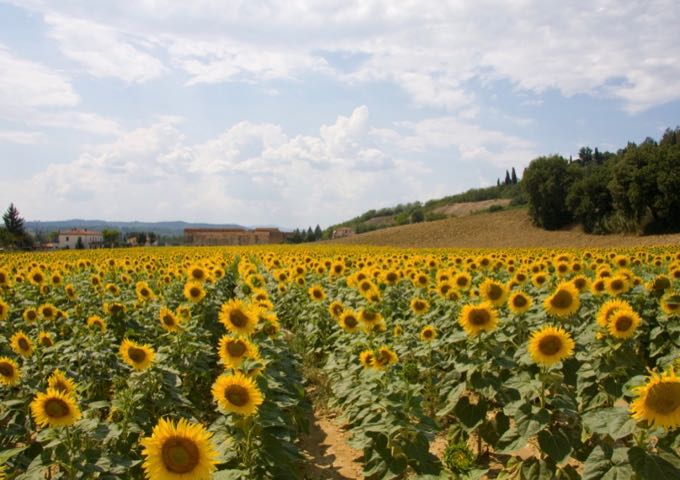
A sunflower field in Tuscany. The best time to visit Tuscany to see sunflowers in bloom is late June to early July.
- The Best Time to Visit Tuscany for Good Weather : The best time to visit Tuscany for good weather, with temperatures warm but not too hot and chances for rain fairly minimal, is from mid-April to mid-May. The next best time for weather is mid-September to mid-October, temperatures in early fall are similar to late spring, but there is a greater chance for rain.
- Best Time for Sightseeing : Spring, particularly April and May, is ideal for sightseeing in Tuscany, a time when wildflowers are in bloom and the weather is warm but not too hot. Note that the region is likely to be very busy around the Easter holidays, a popular time for Italians to travel to Tuscany. When visiting big cities like Siena and Florence , it’s best to arrive at sights early in the morning or late in the day to avoid the longest lines.
- Best Time for Wine Tours, Tasting and Harvest Festivals : Autumn is the time to visit Tuscany for a wine-focused escape, particularly mid-September through early October. The days will be warm, nights cool, and just about every town seems to have a harvest festival; if not for grapes, it’s olives. In this region, where cooler valleys tend to see early frosts, grape and olive harvests begin as early as late September.
- Best Time for Viewing Sunflowers : You’ve probably seen photographs of the endless fields of sunflowers in Tuscany. If you hope to view that in person, with the most fields in full bloom, plan your trip around late June to early July.
- Best Time to Visit to Experience Major City Attractions : If the main focus of your visit is to experience major city attractions like Michelangelo’s “David” sculpture at Florence’s Galleria dell’Accademia, you may want to go in the low season, between December and February, outside of the Christmas holidays. Lines will be shorter, and you’ll be able to take your time enjoying what each has to offer with little interruption.
Tuscany Travel Seasons
- High Season (June through mid-September) : Summer is the high season in Tuscany, a time when the weather is the warmest of the year with temperatures reaching 30°C and above. Attractions will be crowded and lines long, while accommodation rates are at their highest. Note that in August, many hotels, shops, and restaurants are closed to tourists as locals take their two-week annual holiday, but Tuscany still draws lots of tourists during this time.
- Shoulder Season (March through May, except Easter; mid-September through November) : The shoulder season may be the very best time to visit this region, with comfortable weather and fewer tourist crowds. The spring brings wildflowers to the fields while autumn brings beautiful foliage, grape, and olive harvests.
- Low Season (December through February, with the exception of Carnival) : Winter is the low season in Tuscany. Cold weather brings the best chance for lower airfares and discounted accommodations, and few worries about crowds or long lines. While it may be chilly, snow is unlikely, just plan to bundle up and plan your itineraries around shorter days.
Tuscany Weather by Month
- Tuscany Weather in January : While the weather varies somewhat depending on the particular area, January is the coldest month of the year throughout Tuscany, with average high temperatures ranging from 9°C to 12°C. Snow is rare and when it does fall, it usually melts quickly. If you visit the region now be sure to bring a warm winter coat, hat, and gloves. There isn’t much in the way of precipitation, only around 63mm on average over 8 days in January, but a waterproof jacket could come in handy. The most important thing to keep in mind is that the days will be short, as the sun doesn’t rise until just before 8 a.m. and sets before 5 p.m. early in the month. (Average Max Temperature: 11°C. Average Precipitation: 63mm.)
- Tuscany Weather in February : February in Tuscany is almost identical to January in Tuscany, although by the end of the month temperatures will begin to warm. Afternoon highs remain the same for the first half, with the mercury climbing to 11°C, but the latter half of the month occasionally sees days as warm as 16°C. Late nights will be quite chilly, with the average low temperature at 4°C. Rainfall is about the same as last month, not much of a concern, which means the most important thing is to pack clothing that can be layered to keep you warm. (Average Max Temperature: 11°C. Average Precipitation: 67mm.)
- Tuscany Weather in March : While March is anything but predictable, the weather is warming now with the average afternoon temperature reaching closer to 15°C, meaning there’s little if any chance for snowfall. Precipitation increases just a bit, raising the odds of needing a waterproof jacket, but as it won’t be as cold; you may want to bring a mix of clothing, wearing layers that can easily be removed when it gets warm or added when it gets too chilly. The days are becoming increasingly longer, bringing more daylight for seeing the sights with over 12 hours by the end of the month. (Average Max Temperature: 15°C. Average Precipitation: 69mm.)
- Tuscany Weather in April : April brings wonderfully warm and longer days, with long stretches of dry weather in between rain – an average of 78mm falls over 13 days this month. The countryside will be lush and green with lots of flowers and fruit trees in bloom. The average high temperature has increased quite a bit now to 19°C, which means you’ll need clothing for warmer weather along with some items for cooler days and a light waterproof jacket to stay dry when rain arrives. Evenings are a bit brisk with the low temperature at 9°C, so be sure to bundle up for any late nights out. (Average Max Temperature: 19°C. Average Precipitation: 78mm.)
- Tuscany Weather in May : One of the most popular months to be in Tuscany, May is characterized by increasingly warm temperatures that can reach 24°C or more in some places. The odds of sunshine are good now, with typically more bright sunny days than cloudy ones, and precipitation decreases a little too. With sunrise at 5:36 a.m. and sunset at 8:48 p.m. on May 31st, you’ll have plenty of daylight for enjoying the outdoors. You’ll need mostly clothing for warmer weather now, like short-sleeved shirts, shorts, and dresses, but also bring long-sleeve shirts, long pants, and a jacket for cooler days, early mornings, and evenings. (Average Max Temperature: 24°C. Average Precipitation: 72mm.)
- Tuscany Weather in June : With June ushering summer in, plan for warm weather in Tuscany, with afternoon temperatures climbing up to 28°C – and occasionally into the 30s. It’s typically quite dry now, seeing an average rainfall of just 50mm over 8 days, so there’s really no need for rain gear. This is the time to think about protection from the sun, bringing sunscreen and wide-brimmed hats along with lightweight clothing. You may want to bring a bathing suit too. Sweaters and jackets just add bulk; with the low temperature at 17°C, even the evenings are relatively warm. (Average Max Temperature: 28°C. Average Precipitation: 50mm.)
- Tuscany Weather in July : July in Tuscany is hot, and sometimes scorching hot, with the mercury occasionally rising as high as 35°C, though the average high is 31°C. On most days the skies will be bright blue and sunny, any amount of clouds are fairly rare this time of year. There is little in the way of precipitation now with just 31mm on average. You’ll need plenty of sunscreen and items like open-toed shoes, short-sleeve shirts, light cotton pants, shorts, skirts, or dresses. If you plan to visit churches, remember you will need to wear something that covers your shoulders and knees. (Average Max Temperature: 31°C. Average Precipitation: 31mm.)
- Tuscany Weather in August : August is also a very hot month in Tuscany; many Italians escape the heat this month by heading to the mountains or the beach. The first half of the month is usually dry, while the second half of the month tends to bring some summer storms, with precipitation creeping up from last month to an average of 48mm. By late August, there are usually some cooler days and the weather begins to change. (Average Max Temperature: 31°C. Average Precipitation: 48mm.)
- Tuscany Weather in September : It’s likely to be warm early in the month, with lots of sunny skies, but it probably won’t be too hot. While the average high temperature dips a few degrees to 27°C, it’s still a good time to go to the beach, enjoy picnics, and dine outdoors. If you plan on visiting during the latter part of September, you may need a light jacket for mornings and evenings – the low-temperature averages 16°C at this time. In general, you’ll mostly need to pack warm weather attire, along with a few items for cooler weather and perhaps a light waterproof jacket for that slight increase in precipitation this month. (Average Max Temperature: 27°C. Average Precipitation: 76mm.)
- Tuscany Weather in October : Fall is settling in now. While there will be plenty of pleasant, sunny days, expect temperatures to be cooling, and rainfall to be more frequent, with precipitation averaging 96mm over 12 days. The first half of the month is typically quite warm with temperatures ranging from 20°C to 25°C, and cool evenings that dip into the 50s. By mid-October, daytime temps are usually no higher than 20°C and can be as low as 12°C. That cooler weather brings gorgeous autumn foliage to the region’s forests and parks, making October a fantastic time to visit Tuscany. Plan to pack clothing that can be layered, including a waterproof jacket so you’ll be prepared for rain. (Average Max Temperature: 21°C. Average Precipitation: 96mm.)
- Tuscany Weather in November : While early November is often pleasant, this month can be unpredictable, with greater variability in conditions. There are more grey, rainy days now; November is Tuscany’s wettest month, seeing 102mm of precipitation on average. Afternoon highs are at 15°C and the low is a rather chilly 7°C, so you’ll need to pack cool weather items now. The farther north you are, the colder and windier it’s likely to be. Plan on bringing a warm waterproof jacket and sweaters, along with waterproof boots to be comfortable while exploring. (Average Max Temperature: 15°C. Average Precipitation: 102mm.)
- Tuscany Weather in December : The weather continues to cool in December bringing a possibility for snow, which is sure to make the beautiful Tuscan landscapes even more magical. This month can be relatively mild or downright frigid with temperatures ranging between 7°C and 11°C during the warmest hours of the day, and as low as 4°C at night. You’ll need cold weather clothing now, including a warm (ideally waterproof) coat and boots, gloves, a hat, and perhaps a scarf. As the days are shorter now, with less than nine hours of daylight around the Winter Solstice, you’ll want to plan your agenda accordingly. (Average Max Temperature: 11°C. Average Precipitation: 72mm.)
Tuscany in January
- New Year’s Day – January 1st is a national holiday in Italy, including Tuscany. Expect many attractions like museums and historic sites to be closed, along with some shops and restaurants. Public transport will be running on holiday hours. Traditionally, this is a day to meet relatives and friends, exchanging greetings and wishing each other a happy new year. Many locals celebrate with a feast of traditional foods that include items like zampone, lentils, and raisins, which symbolize good fortune and wealth.
- Ephiphany/La Befana – Epiphany is also a national holiday, celebrated on January 6th to mark the 12th day of Christmas. It commemorates the day the Three Wise Men brought gifts to the infant Jesus. Government offices, businesses, and many shops will be closed. When visiting town squares, you’re likely to encounter the Befana , complete with a broom, hat and long pointed nose. She brings stockings, candy and other goodies to all who behaved well the year before.
- Festa di Sant’Antonio Abate/ Palio di Buti – The Feast of Saint Anthony the Abbot brings festivals throughout Italy, including Tuscany, over two days in mid-January. On the Sunday following the official feast day, in Pisa, different districts of Buti race horses for a prize in the city center. In the main square will be a reenactment of history and a series of events that highlights local foods.
- Festa del Santo Patrono – On January 31 each year in San Gimignano, there will be a great festival held day and night to honor the patron saint of the city. There are food stalls and crafts in a number of piazzas, including Piazza del Duomo, Piazza delle Erbe, and Piazza della Cisterna.
Tuscany in February
- Carnival – Carnival is one of the most elaborate events throughout the country, typically taking place in February, but depending on the year it can be any time from late January to early April, taking place over two weeks. You can expect events throughout the region, including colorful parades with floats as well as a variety of activities for children and adults. The carnival in Viareggio , a small coastal village, is one of the most popular for its masquerade processions. One of the oldest carnivals is the Carnival of Foiano della Chiana in the Arezzo region, held annually since the Middle Ages.
- Regata Veliche – The Yacht Club Santo Stefano hosts the Monte Argentario Winter Series and Argentario Coastal Race in Porto Santo Stefano over two days, once in early February and again in mid-February.
- Chocolate Fair – Calling on chocolate lovers to Florence for this Chocolate Fair that takes place over 10 days during the first half of February at Piazza Santa Croc. You’ll be able to do plenty of chocolate tasting, watch a cooking show and enjoy all sorts of chocolate-related events.
Tuscany in March
- Festa della Donna – March 8 is “Women’s Day” around the world, officially created in the U.S. back in 1909. In Italy, it’s been celebrated since 1922 to honor women while bringing attention to unfavorable conditions many are still forced to live under. In Tuscany and throughout the country, it’s common to gift women with the Mimosa flower, a small yellow blossom. Free entrance is offered to women at all state and civic museums throughout Tuscany too.
- Festa di San Giuseppe – March 19 is Father’s Day in Tuscany and across Italy. People celebrate fathers and often consume zeppoles which are similar to doughnuts.
- Feast of the Annunciation – The feast of the Annunciation takes place annually on March 25, A day that was once considered to be the start of the new year. Some still use it as an excuse for a second celebration, with all sorts of activities that take place in Florence and Pisa around this day and often for several days beyond.
Tuscany in April
- Holy Week and Easter – Holy Week is from Palm Sunday to Easter Sunday, sometimes falling in late March, but typically it takes place in early to mid-April. Throughout Tuscany, and the entire country, there will be numerous events all week long. One of the highlights is in Florence, with the “ Explosion of the Cart ” on Easter Sunday morning in Piazza del Duomo. The cart, filled with fireworks, decorated in garland and pulled by oxen, are lit to provide a magnificent spectacle. In many cities and small towns there will be parades that recreate events from the Crusades, elaborate floral decorations in churches and folkloric festivals.
- Festival of Spontaneous Herbs – This festival takes places in mid-April every year in Gallicano. Workshops and excursions will be hosted to go hunting for wild herbs that have traditionally played an important role in the diet of the poor in the region. A special soup will be made using “secret ingredients” that include as many as 30 different wild herbs.
- Festa delle Rocche – This festival takes place in Siena over 9 days to honor the Virgin Mary during the latter half of April. It includes a historical procession, a large market, live music, a race and more
- Liberation Day – April 25 is Liberation Day, a national holiday honoring those who fought for the freedom of Italy. Locals often visit war memorials and other places that serve as the symbol of the Resistance, with many sacrificing their lives for the country. Many businesses are likely to be closed, and some attractions may have limited hours.
Tuscany in May
- Labour Day/International Workers’ Day – This national holiday is celebrated annually on May 1. While many businesses will be closed, many museums are open at significantly discounted prices. Live concerts and special events take place throughout the region and beyond.
- Pirate Night – Notte Dei Pirati, or Pirate Night, takes place in Porto Ercole for three days over the first weekend in May. There will be lots of costumes, choreographed scenes, and pirate-related entertainment on the promenade, beaches, restaurants, and bars.
- Festival Della Fragola – This strawberry festival has been taking place for nearly 40 years in Terricciola. It celebrates the juicy red fruit over the first two weekends in May with lots of strawberries, music, and sunshine to celebrate the lovely spring weather.
- Gioco del Mulino – The small town of Calci in Pisa hosts this historic festival in mid-May. After a costumed procession through the town, 8 district teams, competing in teams of 3, vie to push a mill-wheel in a sort of reverse tug-of-war. Winner gets a trophy, loser is sprinkled with flour.
Tuscany in June
- Republic Day – June 2 is a national holiday that commemorates the day Italy became a Republic in 1946, after the fall of Fascism and the end of World War II. Many businesses will be closed and some attractions like monuments and museums may have limited hours. Concerts, parades, and small festivals are held throughout Italy, including Tuscany. The most elaborate festivities take place in Rome.
- Borghi in Festa – Held in Castelmuzio in the province of Siena, this festival brings the town together with a wide range of food, markets, music and games over the first weekend in June.
- Manciano Street Music Festival – Held for 4 days around the second weekend in June, this festival brings live folkloristic concerts, street parades, culinary items, and locally handcrafted goods to the village of Monciano.
- Tuscan Sun Festival – This summer arts festival takes place in Florence over a week in mid-June. It celebrates music, art, food, and wellness, with cooking demos, art exhibitions, and pre-concert receptions featuring Tuscan wine and locally-made items.
- San Giovanni Feast Day – Florence celebrates its patron saint with this feast day annually on June 24. It includes multiple folkloric and cultural events that are followed with a spectacular firework display over the Arno River. There are generally boat rides organized on the river throughout the day, as well as after dark for viewing the fireworks from the water.
Tuscany in July
- Lucca Summer Festival – This festival is held throughout the month of July, with concerts by big-name musicians taking place in Lucca’s Piazza Napoleone and along the city walls. Past performers have included the Rolling Stones, Lenny Kravitz, Bob Dylan, and many other greats.
- Palio di Siena – A famous horse race that takes place annually on July 2, and again on August 16 in the heart of Siena. Ten horses and bareback riders don colors to represent the city’s ten wards (known as contradas) as they race around Piazza del Campo.
- Mercantia in Certaldo – For 5 days in mid-July, this international street festival brings theater, circus, and comedy street performances to the charming town of Certaldo.
- Bolgheri Festival – This event, typically held over the last few days of July through the first half of August in the coastal town of Bolgheri, features a rich program of artistic events and concerts featuring top Italian and international names, along with plenty of DOC wines.
Tuscany in August
- Ferragosto – Each year, August 15 marks the beginning of the summer holiday for most Italians. It’s also a national religious holiday of Assumption, celebrating the Assumption of the Virgin Mary into heaven. While there may be some closures, most museums and cultural sites are open.
- Palio di Siena – The second half of Il Palio, Siena’s famous horse race, will be held on August 16 around Piazza del Campo.
- Bravio Delle Botti – An exciting barrel race held in Montepulciano on the last Sunday in August. Whoever is the fastest in pushing their heavy wooden wine barrel up the steep, tiny streets of the village to the finish line in front of Duomo in Piazza Grande will win the Bravio, a painted banner that depicts the patron saint.
Tuscany in September
- September Lucchese – Hosted just outside the city walls at the Piazzale Don Baroni in Lucca, this month-long event features traditional markets, agricultural fairs, food stands, and handicrafts, along with carnival rides and lots of frati (sugar covered doughnuts).
- Giostra Del Saracino – One of the most highly-anticipated events in Tuscany, held on the first Sunday of September in Arezzo. It includes a medieval jousting competition between the four quarters of the city to win the Golden Lance. There will be a historical costume parade, flag-throwers, and plenty of pomp and circumstance.
- Festival of the Lanterns – One of the largest and most traditional festivals in Florence, the Festival of the Lanterns takes place annually on September 7th featuring lantern and boat parades as well as a fair.
- Festa di San Michele – Carmignano hosts the Saint Michael’s Feast over the last weekend of September. Each day, the city’s four quarters compete in street theater parade performances that include a unique personal theme and elaborate choreography. Each day’s events are capped off with nightly a Palio of the Ciuchi, or donkey race.
- The Grape Festival of Impruneta – This Grape Festival is held on the last Sunday of September at Piazza Buondelmonti in Florence. There will be 4 neighborhoods competing to have the best wine-inspired float. It includes a parade, music, and dance performances.

Tuscany in October
- Festa di Santa Reparata – On October 8, this festival celebrates the co-patron saints of Florence, Santa Reparata and San Giovanni Battista. A procession takes place with participants donning medieval dress, traveling from Piazza di Parte Guelfa to the saint’s crypt under the Duomo.
- Fiera di San Luca – For 9 days in mid-October, one of the oldest cattle fairs takes place in Impruneta. It’s been held here since the Middle Ages, when shepherds and merchants would meet to buy and sell livestock as well as related products like wool and cheese. It includes traditional games, rides, markets, local produce, and more.
- PIC Festival – Festa PIC (which stands for picante, aka spicy hot), takes place in the city center of Camaiore on the Tuscan coast. The exhibition features a wide variety of chili peppers from around the world, along with other foods, music, and shows, held over the third weekend in October.
- Volterragusto Truffle Festival – Held in late October and into November, this festival in Volterra features lots of food stalls that sell truffles and other delicacies like wine, cheese, and salami.
Tuscany in November
- All Saints Day – All Saints Day is a national holiday celebrated on November 1 each year. Locals throughout Tuscany and all of Italy take the day to visit graves of their loved ones.
- Cento Gusti Dell’Apennino – This “Hundred Flavors of the Apennines” food festival is held over the first weekend in November in Anghiari. Celebrating local culinary delights, it includes workshops, demonstrations, and wine and food tastings.
- White Truffle Fair – Typically held over the last three weekends of November, this fair in the town of San Miniato brings together gourmands, tasters, and buyers to enjoy truffle-based menus and open-air fun.
- Festa del Buco Unto – This culinary festival dates back centuries, deeply rooted in the ancient traditions of Civitella Marittima, the village in which its held. It takes place over the second weekend in November and is dedicated to the tastes of fall, with lots of wine and olive oil.
Tuscany in December
- Feast of the Immaculate Conception – December 8 is a national holiday in Italy that honors the day of the Virgin Mary’s conception of Jesus. Government offices, schools and many businesses will be closed but most shops and restaurants are open as this day marks the start of the Christmas season. In Florence, the annual tree lighting will take place in Piazza del Duomo.
- Lo Gradireste Un Goccio Di Vin Santo – Over the first weekend of December, the “Would You Like a Drop of Vin Santo” festival in Montefollonico promotes its local “holy wine” with a competition for the year’s best homemade vin santo, along with entertainment, workshops, and wine and food tastings (especially the almond dipping biscuits known as cantuccini).
- Christmas Holidays – In Italy, Christmas Day, December 25, and Boxing Day (Santo Stefano), December 26, are national holidays. While most businesses will be closed, including tourist attractions, shops and restaurants, there will usually be some international restaurants and bars that will be open. Italians spend time with their families enjoy Christmas dinner and Midnight Mass at local churches.
- New Year’s Eve – No matter where you are in Tuscany, you’re bound to find a celebration for New Year’s Eve. Florence is one of the most popular places to be, with its main squares hosting live music and fireworks. Pisa’s city center will fill with shows, music, entertainment, and fireworks at midnight over the Arno.
About Santorini Dave


Change location
- Call us tomorrow from 9am
- 01993 838 925 01993 838 960 or
- REQUEST A QUOTE
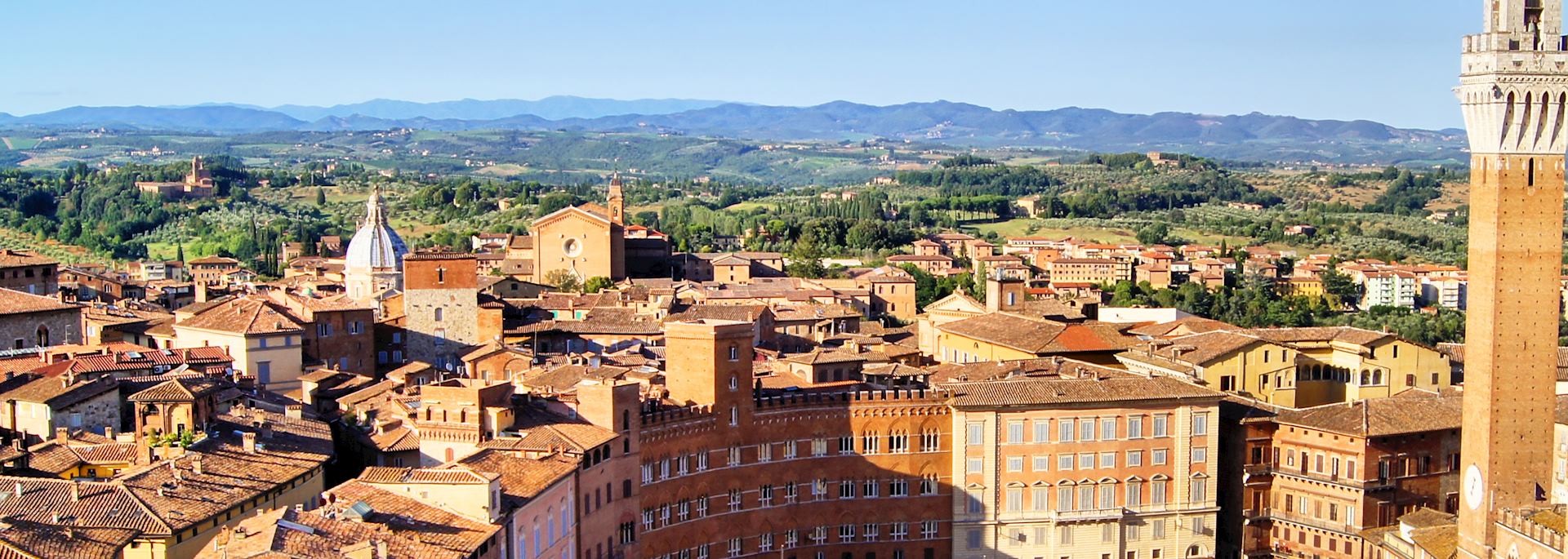
When is the best time to visit Tuscany?
- Month-by-month
The best time to visit Tuscany is during mid-to-late spring (April to May) and early autumn (September to October). The Tuscan landscape is at its most vibrant and the weather is particularly pleasant, with temperatures around 17°C-23°C in spring and 20°C-26°C in autumn.
In the summer months (June to August), the fields are full of sunflowers and the fruit trees come into season, offering beautiful vistas and plenty of fresh produce to enjoy during the long, hot days. Temperatures sit at a warm 25°C-31°C, with plenty of sunshine.
The crowds thin out during the cooler winter months (November to March), with temperatures dropping to 9°C-15°C. Seasonal markets and festivals still provide entertainment for off-season visitors on day trips from Florence. However, hotels in the smaller towns and countryside can shut.
- Make an enquiry
- Request a brochure
Month-by-month guide for travelling in Tuscany
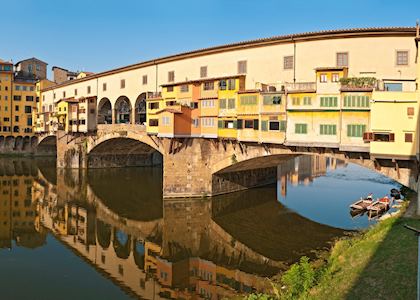
Visiting Tuscany in November - February
The Tuscan winter can be cold, but it’s a pleasant time to visit Florence as the city is much quieter than at other times of the year. During the festive season, Christmas markets in the city sell handicraft gifts and regional food and wine. While it’s possible to venture on day trips out into the Tuscan countryside from Florence, most hotels outside the city tend to shut down for the winter.
Events & Festivals
- October and November is truffle season and the delicacy features at fairs, markets and gastronomic events across northern Italy.
- During December, Christmas markets pop up in Florence and the surrounding towns.
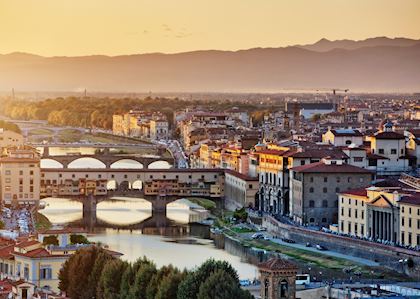
Visiting Tuscany in March
While still cold, March sees the first vestiges of spring and hotels in Tuscany tend to re-open from Easter onward. The weather can vary between wet and cold and sunny and bright, with locals referring to the climate at this time of year as ‘pazzarello,’ meaning ‘somewhat crazy’.
- Depending on when Easter falls, most towns and cities host a range of Holy Week celebrations including many dramatic processions and religious services.

Visiting Tuscany in April
April is one of the best times to visit Tuscany, with the beginning of spring, gorgeous weather, and the re-opening of many hotels that close for the winter. The region plays host to several flower festivals, including a camellia festival in Pisa and an azalea festival in Lucca.
- Flower festivals (April/May): Between April and May, there are different festivals all over Tuscany dedicated to different kinds of flowers and gardens.
- Liberation Day, a national holiday held on 25th April, commemorates the Allied overthrow of the Nazis and the end of Mussolini’s rule.
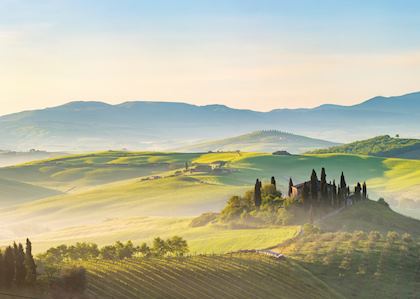
Visiting Tuscany in May
May in Tuscany is usually pleasantly warm, with temperatures not yet at their peak. The fields and hillsides are beautifully green and it’s a gorgeous time to visit. Consequently, visitor numbers also start to pick up. May is also the beginning of the season of sagre, village festivals dedicated to each place’s local goods or heritage. Visitors can meander through the strawberry and cream festival in Florence, or indulge in some pici pasta during Siena’s celebration.
- Florence’s Iris Garden opens to the public for just a few weeks this month.
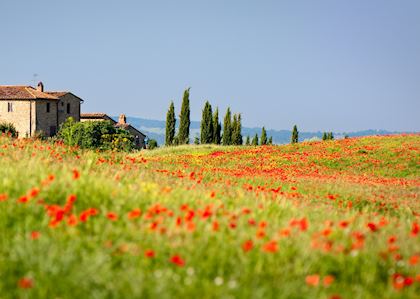
Visiting Tuscany in June
June marks the beginning of summer in Tuscany, as the temperatures start to rise in earnest. Pisa is especially attractive in June, with the month referred to as ‘Giugno Pisano,’ or ‘Pisan June’. A multitude of festivals and activities take place to celebrate the city, including the beautiful Luminara ceremony and dramatic regatta.
- Giugno Pisano (June): Pisa celebrates itself all June long, with festivals, pageants and concerts throughout the month.
- The Luminara ceremony takes place on 16th June in Pisa with candles lit in windows all along the banks of the River Arno and bonfires lit to illuminate the city.
- Medieval Harvest Festival (June): During the third weekend in June, San Gimignano hosts the Ferie delle Messi, or Medieval Harvest Festival, featuring performances and markets with traditional medieval fare.
- Republic Day on 2nd June is a national holiday, celebrating the foundation of the modern republic of Italy.
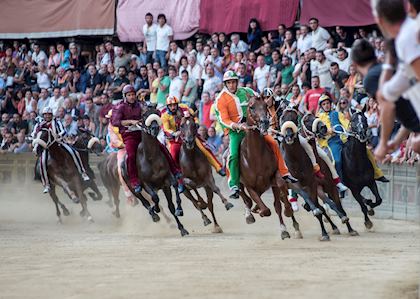
Visiting Tuscany in July - August
July to August is peak season in Tuscany and sees an exodus of Tuscans and a rise in foreign visitors. Ripening under the hot temperatures, a great variety of fresh fruits and vegetables is in season, from apricots and peaches, to green peppers and tomatoes. August’s clear skies also make it an excellent time to lie back in the countryside and witness magnificent shooting stars.
- Lucca Summer Festival (July): Every July, Lucca holds an enormous music festival. Past acts have included Michael Bublé, Lionel Richie, Elton John, and the Dave Matthews Band.
- Siena Palio (2nd July/16th August): Each year, Siena hosts massive horse races and spectacles, once in July and once in August, with the whole city coming out to watch.
- The Night of San Lorenzo (10th August): Cities around Tuscany plan celebrations to commemorate the martyrdom of San Lorenzo (Saint Lawrence), and the night is usually spent watching for shooting stars to remember him.

Visiting Tuscany in September
September is the best month to visit Tuscany and take advantage of its many wineries, which are particularly busy with the Vendemmia (grape harvest) this month. The weather begins to cool while still remaining enjoyably warm, making it a great time of year to explore the countryside and vineyards.
- La Vendemmia, the grape harvest, begins toward the end of September.
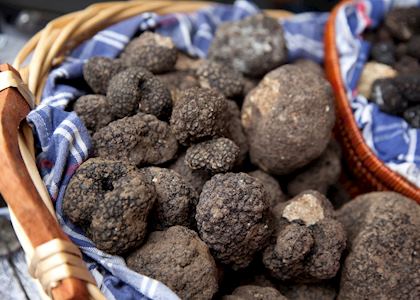
Visiting Tuscany in October
As the temperatures start to decline and autumn rolls in, Tuscany is still a great area to visit. Florence is very pleasant at this time of year, and in the countryside it’s the season of one of the area’s most treasured goods: truffles. October’s weather is comfortable for going on a truffle hunt through the woods. Roasted chestnuts also start to appear on streetside stalls.
Tuscany Climate Guide
Why travel with audley.
- 100% tailor-made tours
- Fully protected travel
- Established for over 25 years
- 98% of our clients would recommend us

Travel advice
Practical tips for travelling to Tuscany, from social protocols to guidance on money matters, with a link to the latest FCDO travel advice.

Request our brochure
Covering all seven continents, The World Your Way shows you how you can see the world with us. It features trip ideas from our specialists alongside hand-picked stays and experiences, and introduces our approach to creating meaningful travel experiences.
Trip ideas and travel guides for exploring Tuscany

Italy outdoors
10 days from £6,675pp

Grand tour of Italy
21 days from £14,865pp
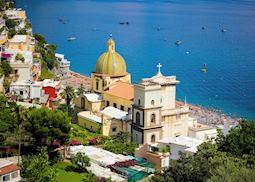
Our expert guide to exploring the Amalfi Coast & Capri
10 min read
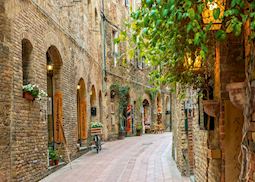
Hidden highlights of Tuscany
11 min read

The Best Time to Visit Tuscany (and a bunch of other useful tips!)
Introduction.

1. "Tuscany"'s Meaning
2. when to visit tuscany.

What to pack
3.1 clothing, 3.2 camera gear, 3.2.1 camera, 3.2.2 lenses, 3.2.3 tripod, 3.2.4 filters, 3.2.5 other accessories, interested in more siena travel ideas kayak has the answer for you, 4. other useful tips, 4.1 language, 4.2 money/currency, 4.3 wifi/internet.

The smart tuscany tour
- LOW-SEASON ONLY
- 5/6 PARTICIPANTS
THE HIGHLIGHTS OF TUSCANY TOUR
- ALL-YEAR ROUND
- 2 NIGHTS | 3 DAYS
THE HIGHLIGHTS *PLUS* OF TUSCANY TOUR
- ALL YEAR ROUND
- 3 NIGHTS/ 4 DAYS
THE CLASSIC TUSCANY TOUR
- 6 NIGHTS/ 7 DAYS
YOUR NEXT WORKSHOP STARTS HERE.
Ask us anything, subscribe to our newsletter.

- Joanne Herd
Discovering the Best Time to Visit Tuscany
March 8, 2024
Imagine wandering through a sun-kissed Tuscan vineyard, a glass of Chianti Classico in hand, or meandering through historic piazzas past spectacular Renaissance architecture.
The Tuscany region of central Italy isn't just a destination. It's a feast for the senses and a destination that so many people dream of visiting.
It offers a tapestry of landscapes, from the rolling hills of the Val dOrcia to the terraced towns of Cinque terre.
Cities like Florence and Siena offer a wealth of museums, like Florence's Uffizi Gallery, one of Italy's most popular museums. Outside the cities you'll find the beautiful Tuscan countryside, perfect for a road trip on a sunny day.
But along with the beauty comes the inevitable question. When is the best time to visit Tuscany?
Trying to balance the best Tuscany weather with the fewest crowds is a challenge. It's about finding a sweet spot, with pleasant weather, and avoiding the overcrowding that high season brings to the cities and popular day trip towns like San Gimignano.
Note: In 2023 Tuscany, and Europe overall, experienced a surge of visitors making up for lost time. The normal lines between high season, shoulder season and low season were much more blurred than they have been in the past. As the travel world recalibrates, the normal ebb and flow of seasonal visitors is expected to return, although prices remain higher than they were in 2019.
Understanding Tuscany's seasons: The best time to visit Tuscany
Understanding Tuscany's seasons, both the weather and the traditions central to each season, is key to choosing the best time to visit Tuscany.
Spring (March to May): As the Tuscany countryside awakens with the lengthening days, spring brings gentle warmth and comfortably mild temperatures.
Vineyards begin to come to life, the weather begins to warm, and Holy Week and Easter bring festivals to many towns and cities. In the countryside you'll see wildflowers starting to appear, and calves and lambs in the fields.
Summer (June to August): Summers in Tuscany get very warm, and many locals head for the coast for their annual vacations. It's not unusual for small, family-run businesses to close for a summer month-long vacation as the owners head to the beaches of southern Italy.
If you're looking for the best beaches in Tuscany, summer is when they're open and overflowing with people. The countryside is full of life, with fields of sunflowers.
Al fresco dining under the stars on warm evenings is a nightly ritual, and the cities, with their iconic architecture, can get uncomfortably hot and crowded. The summer months are the height of tourist season.
Autumn (September to November): As the heat of summer subsides, autumn in Tuscany is all about warm days and cool evenings. If I had to pick the best month to visit Tuscany, I'd choose October. Weather is still good, but many of the crowds are gone.
The season is all about the harvest. Vineyards are busy harvesting grapes, and you'll see nets spread under olive trees ready to catch the fruit as it's raked from the branches. Cooler temperatures but long days make the cities pleasant to visit again.
Winter (December to February): The Tuscan winter is fairly mild, but can definitely get cold, especially in the hillier areas. While snow isn't an every season even like it is in northern Italy, you can find a soft blanket of snow falling from time to time.
While the weather can be wetter, there are far fewer visitors so you can access the best places, like the popular museums, without the crowds.
Experiencing Spring in Tuscany

Spring is one of Tuscany's two “shoulder seasons," when both weather and crowds are moderate. You can expect more rainy days and a cooler temperature than in summer, but it's also not a quiet as the winter low season.
Spring festivals in Tuscany
Italy is full of spring festivals, from birthday celebrations in Rome to the Procession of The Mysteries in Sicily, off the south Italy coast. But Tuscany has more than its share of great festivals.
One famous spring festival, well worth planning a trip around, is the Scoppio del Carro in Florence. Literally translated as “the explosion of the cart,” a wagon pulled by white oxen is driven through the streets, accompanied by musicians and crowds dressed in 15th-century costumes.
The wagon procession ends at the cathedral, between the main doors and the Baptistry of St John, where a wire is connected from the main altar of the Duomo to the cart. A mechanical dove is lit, flies through the cathedral on the wire, and ignites the fireworks outside.
Delights of a Tuscan Summer

Summer in Tuscany is full of sun-kissed vineyards, bustling piazzas, and lively beaches. Days are long, full of sun and good weather, and evenings are perfect for leisurely outdoor al fresco dinners.
While summer in the cities is peak season for tourism and can be very crowded, and some of the best things to do are in the smaller towns and countryside. Summer can be the perfect time for an overall Tuscany tour that takes you to less crowded areas off the normal tourist path.
Seasonal resorts and countryside agrotourismos are all open, and many book up months in advance. If you're planning a Tuscany trip in the summer, make sure to plan well in advance.
Summer festivals in Tuscany
Tuscan summers are full of fascinating festivals worth planning a full Tuscany itinerary around. For one of the worlds best-known horse races, head to Siena in June/July and in August for the Palio, run twice each summer.
In Florence, the Piazza Santa Croce is covered in sand for the yearly Calcio Storico. While calcio is also what soccer (or football in Europe) is called, Calcio Storico is a completely different game.
With players dressed in historic costumes, the game is a cross between football and rugby. It can get quite violent, since the players from the city's historic districts are fighting for the honor and valor of their district. The final is always held on June 24, the Feast of St John, who is the patron saint of Florence.
Opera lovers will want to make their way to Lucca for the annual summer Puccini festival in the city where the composer was born. Throughout the summer you'll find performances of his works being held in a specially constructed, outdoor arena.
Peaceful Autumn in Tuscany

My favorite time to visit Tuscany is Autumn, specifically late September through October. It's when the crowds disperse and the landscape is painted with the soft, warm hues of amber, gold and crimson.
Autumn also marks the beginning of the grape harvest and wine making season. This is the perfect time for a wine tour, where you can observe or participate in the harvest and wine making process.
It's also the best time for fresh olive oil. You haven't tasted olive oil until you've tased a fresh-pressed oil in Tuscany. The grassy, peppery flavor is unlike anything I've had elsewhere, and both the flavor and bright green color fade quickly, making it almos impossible to experience anywhere else.
Truffle lovers will want to spend some time hunting for Tuscany's famous white truffles, which can only be found from September through December. Joining a truffle hunt, led by local experts and their keen-nosed dogs (pigs aren't usually used anymore because they ate too many of the truffles), is a unique adventure through the San Miniato hills and forests.
Fall festivals in Tuscany
At their heart, Tuscany's fall festivals are centered around the harvest and the abundance of the season.
I was surprised how many festivals there are in the fall. There were several days when I lived in Florence that I'd make my way to the center of the city, just to find a parade of costumed locals in procession to a festival.
The most surprising was the time I came across two giant white oxen pulling a wagon with a wine barrel on it. I'm still not sure what festival it was, but it was definitely interesting to watch!
Another fun and unusual festival is the cheese-rolling competition that happens every September in Pienza, the home of pecorino cheese. Representatives from each of the town's six districts roll three wheels of pecorino cheese and a wooden stake in the center of the main piazza. The one that gets the closest wins the glory for their district!
Quiet Winter in Tuscany

Tuscany in the winter can be much quieter than other seasons, but there is still plenty to see and do. Two of Italy's main holidays, Christmas and Epiphany (January 6), are highlights of the holiday season.
Discover Italy's unique Christmas traditions
The days get shorter, vineyards are coated in frost, and crowds are at their lowest during most of the winter. Christmas markets in the towns and cities, with the scents of roasting chestnuts and mulled wine filling the air, and bountiful seasonal foods and gifts, are delightful.
Winter festivals in Tuscany
Consider celebrating Epiphany, which marks the end of the Christmas season, in Florence. The yearly Cavalcata dei Magi, or Procession of the Magi, makes its way through the streets with the three Magi riding through the streets on horseback, and 700 costumed participants following them.
February is Carnevale season. While the Carnevale in Venice is the most well know, the Tuscany city of Viareggio has the most famous Carnevale celebrations in Tuscany, where you can party the day (and night) away.
Travel tips: The best time to visit Tuscany
While my main recommendation is to avoid the crowds of high season, there really isn't a bad time to visit Tuscany as long as you know what to expect.
If you're planning to travel during the high season, consider a trip through the less touristed areas of southern Tuscany. It can still be busy, but you'll be surrounded by Italians enjoying the long days and warm evenings, giving you an authentic taste of Tuscany the way the Italians experience it.
For the main cities, like Florence and Siena, as well as popular day trip locations and hilltop towns, the shoulder season in spring and fall can be the perfect time to visit.
The bottom line: The best time to visit Tuscany Italy
Tuscany is a timeless destination, and there really isn't a bad time to visit. But if you have the flexibility to choose when you travel, I always recommend late September and early October.
It's my favorite time to experience this beautiful region of Italy.
If you enjoyed this post, discover more on our Italy travel blog and start planning your trip to Italy .
Related Posts
6 Luxury Tuscany Hotels You'll Never Want to Leave
A Journey through Tuscany: The 10 Best Towns in Tuscany You Can't Miss
Daydreaming in Tuscany: The 7 Best Day Trips from Florence
Comentários
An Italian Mama's Guide to Italy
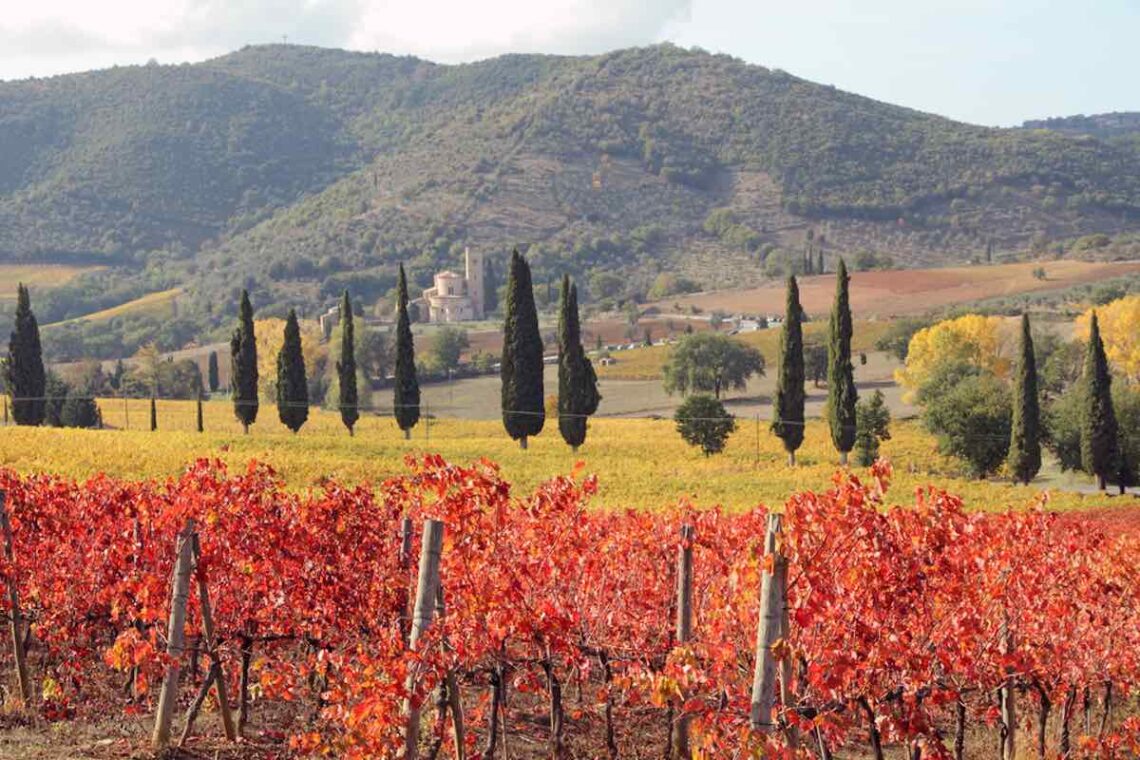
Tuscany in the fall: all you need to know for a perfect autumn trip
Visitors’ guide to Tuscany in the fall: things to do, autumn festivals, accommodations and tips to plan a perfect stay.
Tuscany is beautiful in the fall.
During this season, the famous rolling hills of this picture-perfect region of Italy acquire the golden colors that make them look like a Renaissance painting.
The weather is usually mild and bright, providing perfect conditions for sightseeing and discovering Tuscany’s art cities and villages.
The harvest season fills the Tuscany tables with mushrooms, pumpkins and freshly pressed olive oil and the award-winning wineries of this region are busy turning their glorious grapes into delicious wine.
If you are into art, food, or road-tripping, Tuscany in the fall will take your breath away.
In this guide, I am going to share some of the best places to visit in Tuscany in autumn, foods you should try, and some practical travel tips to make the most of your trip.
Please note: this post contains affiliate links. Should you make a purchase, we might make a small commission.
Weather in Tuscany in the Fall: what to expect
The fall season in Italy starts on the 21st of September and ends on the 21st of December when the country enters the astronomical winter.
Between September and December, temperatures will slowly but consistently fall and the hours of daylight will diminish.
Late September still largely feels like a summer month, only requiring a light jacket in the coldest hours of the day.
October will make you want to reach for a warmer jacket but will still allow you to enjoy the outdoors.
November is the rainiest month in Tuscany and you will want to have a plan for wet days.
December in Tuscany is a time when you want to be well wrapped up and mix sightseeing with indoor attractions such as museums or restaurants.
December is also the month when Christmas decorations start coming up and when you can see living cribs and Christmas markets, especially after the 8th of December, the start of the Christmas season in Italy .
Rain is possible in this season and having a waterproof layer with your and a travel umbrella is a good idea.
What to pack to visit Tuscany in the fall
Autumn is a season of transition in Tuscany, with summer slowly but surely turning into winter.
Layers are your best friend at this time and you also want to have some proper jackets and scarves for the later part of the season, especially if planning on staying in the countryside.
While the temperatures in Tuscany in autumn are not those of a very rigid winter, the country and even Florence can get very cold because of altitude and humidity.
Things I recommend you pack for Tuscany in the fall are:
Comfortable walking shoes , ideally waterproof. Fashion sneakers/trainers work well and so do ankle boots. You can find here >>> my list of recommended shoes for Italy travel
Long pants/ trousers : you are unlikely to find shorts weather in this season
Short and long sleeve tops , for layering
Cardigan / sweater
Midseason jacket, ideally waterproof
A light scarf
Flip flops/ house socks for the hotel/ agriturismo: those floors get very cold!
Swimsuit + water shoes for Tuscany hot springs , wonderful in this season (see below)
Travel umbrella
If traveling with small kids , I highly recommend a rain cover for the stroller and a good blanket.
All your electronics and travel documents . Please find official info about the required documents for traveling into and around Italy here .
You can find my complete packing list for Italy here .
The best things to do in Tuscany in the Fall
Discover val d’orcia by car.
Val d’Orcia is the beautiful area in the South of Tuscany famous for rolling hills and cypress trees.

It is the area you most commonly see on travel brochures that want to portray the quintessential Tuscan landscapes and it is as breathtaking as the photos suggest.
The area is blessed with hilltop villages, a historical town, scenic roads and a rolling landscape of vineyards and olive groves.
It is so unique and iconic of the Tuscany Countryside, it is Unesco World Heritage Site.
The best way to explore Val d’Orcia is by car.
You can opt for a road trip, changing accommodation every night, or you can take it easy by picking a place as a base and explore from there.
I highly recommend this last option: Val d’Orcia is one of those places best explored slowly and, if you find a nice agriturismo to call home for a few days, even just sitting and enjoying the views from there will make your trip one to remember.
Find here >>> our complete travel guide to the best places to see in Val d’Orcia .
Enjoy Tuscany’s hot springs
Autumn is the best time to enjoy Tuscany’s hot spring.
As the weather starts to cool down, the hot waters of Tuscany’s spas and free hot springs welcome you like a comforting cocoon and relaxation is guaranteed.
You can choose between organized and elegant thermal baths such as those in Chianciano or Bagno Vignoni or opt for free springs such as those in Saturnia or Bagni San Filippo.
Find here >>> our guide to hot springs in Tuscany .
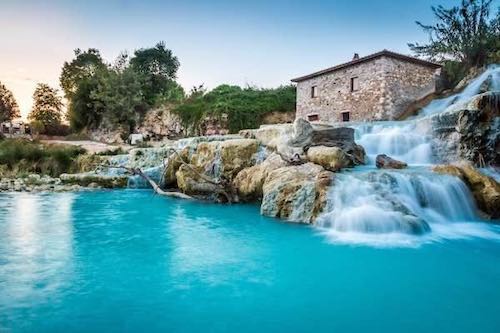
Explore Tuscany’s hilltop villages
The fall is also the perfect season for visiting Tuscany’s famous hilltop villages.
At this time, they will offer not just the beautiful alleys, churches and charming corners that make them so famous but also beautiful views over the countryside and its colors.
From their bastions and piazzas, you will be able to spot forests, olive groves and vineyards, painting a picture with hues of gold and dark green.
Find here >>> our favorite hilltop villages in Tuscany
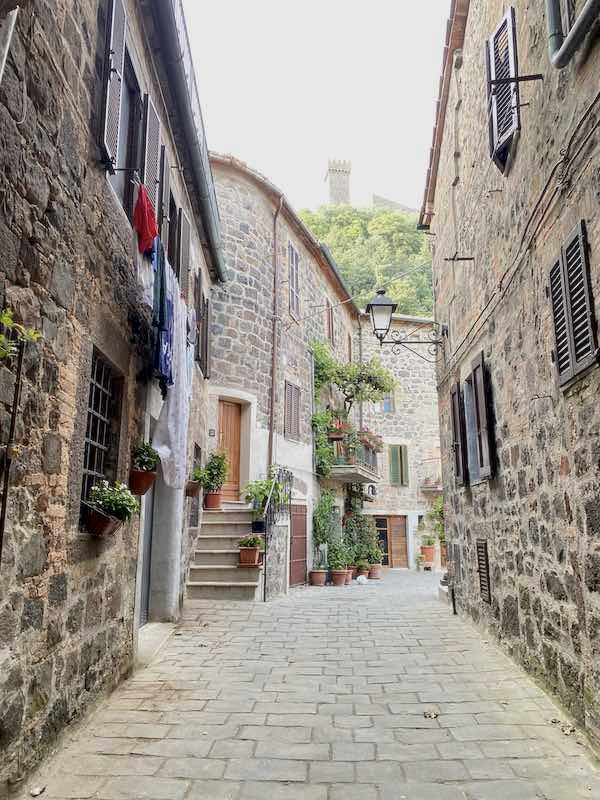
Experience Tuscany’s Autumn Festivals and events
Harvest season is fantastic in Tuscany.
The region has a strong rural vocation and several festivals and markets take place in Tuscany in the fall that are an ode to local food and produce!
As well as food, Tuscany in the fall hosts several traditional festivals with vintage markets and games.
Autumn festivals in Tuscany you may want to experience are:
Events are subject to date change and cancellations; always double-check before going!
Food : Festa d’Autunno (Fall festival), Abbadia San Salvatore (SI)- 2nd and 3rd weekend in October
Food (grapes) : Festa dell’Uva, Cinigiano (GR), 4-6 October
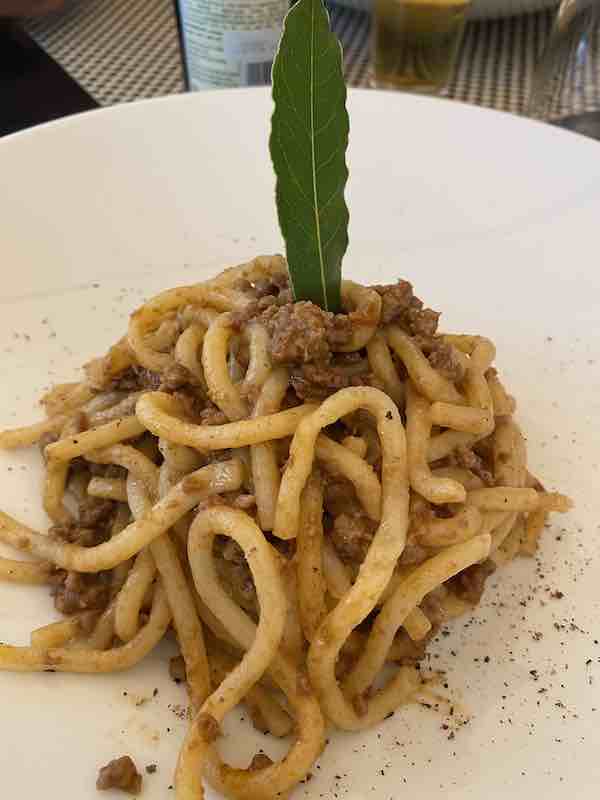
Food (White truffle) : Fiera del tartufo Bianco, Corrazzano (PI) – 1st weekend in October, also in Volterra, 26-27 October and 1-3 November, San Miniato (PI), weekends in November.
Food : Toscanan Gustando, Montepulciano (SI), 9-10 November
Food : Festa del vino doc (wine festival), Montescudaio (PI) – 1st weekend in October
Antiques : Fiera Antiquaria, Arezzo (AR) – 5th and 6th October
Antiques and Vintage : Aprilante, Panzano in Chianti (FI) -1st Sunday in October
Antiques : Mercatino Antiquariato, Barga (LU) – 2nd weekend in October
Food and traditional games : Tiro della Druzzola & Sagra del Galletto, Camigliano (LU) – 1st Sunday in October
Food (chestnuts) : La castagna in festa , Arcidosso (GR) – 2nd and last weekend in October ALSO In Monticello Amiata (GR), 2nd weekend in October, Caprese Michelangelo (AR), 3rd and 4th weekend in October, Campiglia d’Orcia (SI), last weekend in October, Bagno Vignoni (SI), 27 October,
Food (cheese) : Palio dei Caci, Volterra (PI), a traditional festival with cheese rolling competition!
Market : Mercatino Internazionale, Arezzo (AR), 11-13 October
Food (oil) : festa dell’olio nuovo (festival of the new oil)., Traquanda (SI), 20 October
Festa di San Martino , Anghiari (AR), 2nd weekend in November
Food : Gustatus, Orbetello (GR), 30 Oct – 3 November
Food (wine and oil) : Santi Vinai, 8-10 November, Pitigliano (GR)
Christmas markets : several Christmas markets take place in Tuscany in December, the latest stretch of Autumns. Florence, Mugello Montepulciano, Lucca and Pisa have nice ones – you can find here >>> our favorite Christmas markets in Italy .
Visit Florence
No visit to Tuscany could be complete without at least a brief stay in Florence.
The city is beautiful at this time but can get busy so advance booking of accommodation and main attractions (mainly: Uffizi and Accademia Gallery) is a must.
Tickets /Tours with good cancellation options are at the following links:
Uffizi Gallery Timed Entrance Tickets
Uffizi Gallery Small Group Tour
Accademia Fast Track Ticket

Visit Siena
Siena is a delight in the fall, when the beautiful green surroundings of this hilltop town dress up in golden and green.
This is a fantastic place to visit with the whole family >>> find our guide to a day in Siena here
See the leaning tower of Pisa
Pisa gets very busy but the fall, especially mid-week, is a pleasant time to visit.
You can find here >>> our guide to one day in Pisa .
Cycle around Lucca
Lucca is a delight no matter the season but cycling along its historical walls in the fall is just magical!
Find here >>> our guide to Lucca
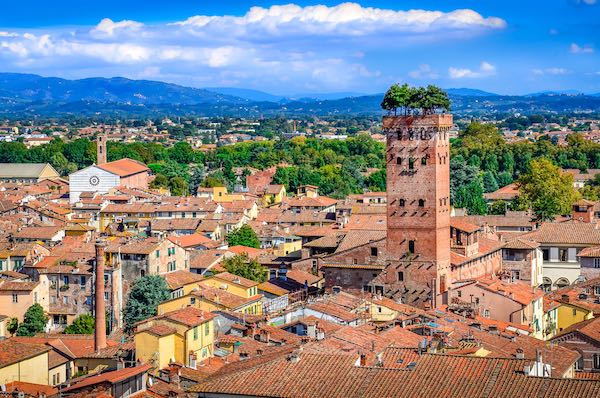
Go on a wine tasting tour
Harvest time is a tricky moment to visit wineries as they are busy with agricultural work however, some do offer tours!
The best way is to book via a reliable provider who will be able to bring you where there are spare hands to welcome visitors. Have a look at this one in Chianti to see what they include.
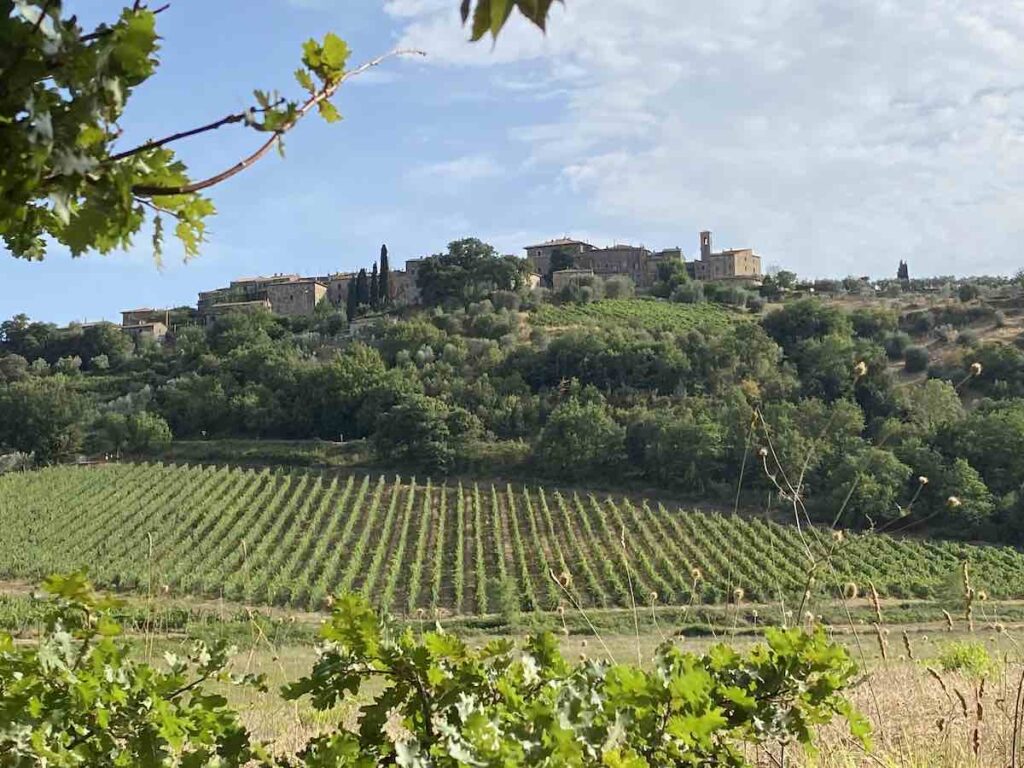
Where to stay in Tuscany in the fall
I love staying in agriturismo when visiting Tuscany.
They are the perfect place to enjoy the scenery, food and wine of the area and they are perfect to wind down.
Some you may enjoy are:
Il Falconiere (Relaix et Chateaux) : stunning property offering high-end accommodation and services in Cortona
Fattoria di Maiano , fantastic country accommodation with restaurants in Fiesole, just above Florence
La Lupaia , wonderful country retreat above Montepulciano
Fattoria la Palagina , family-friendly option in
Agriturismo Vernianiello , Poggibonsi, great for families with kids
Agriturismo La Bruciata , nice family-friendly options with services for adults and kids
Tuscany in the fall with kids
The great advantage of visiting Tuscany with kids in the fall is that they will not be melting in the scorching heat that engulfs Tuscany in summer .
The disadvantage is that they are unlikely to be able to enjoy outdoor swimming pools and the seaside, closed / too cold for swimming in this season.
Overall, this is a lovely time for visiting Tuscany: local festivals, garden visits (Giardino dei Tarocchi is magical), cycling paths, hot springs and local playground will keep them busy and you will also be able to get them to enjoy adventure and parks and ziplining courses, excellent in this season.
You can find here >>> our tips for visiting Tuscany with kids
I hope you enjoyed this quick guide to Tuscany in the fall and it helped you plan your visit. Safe travels!
Marta Correale
Marta Correale is an Italian mama of two. Born and raised in Rome, Marta has a passion for travel and especially enjoys showing off Italy to her kids, who are growing up to love it as much as she does! A classics graduate, teacher of Italian as a second language and family travel blogger, Marta launched Mama Loves Italy as a way to inspire, support and help curious visitors to make the most of a trip to Italy and learn about Italian culture on the way.

You May Also Like

Procida travel guide: how to visit Italy’s island capital of culture 2022
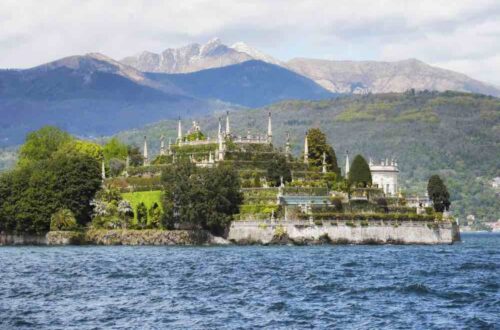
9 fantastic lakes in Northern Italy you will love
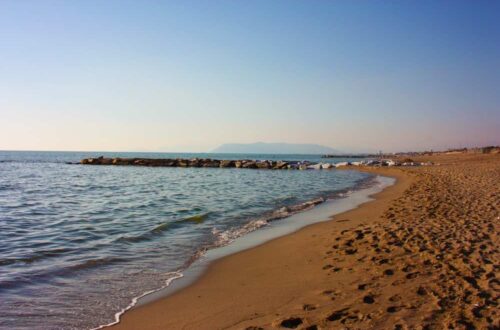
The best beaches near Florence Italy + map and tips
Privacy overview.

Best Time to Visit Tuscany

Climate Overview

Geographical location
Climate in tuscany.
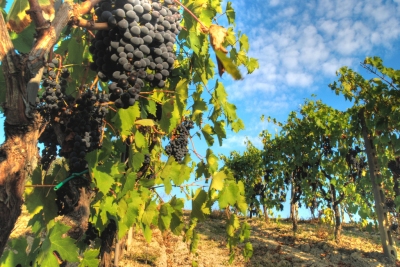
Beach Vacation in February

Best Time to Visit Tuscany: Overview
When to travel to tuscany, climate chart tuscany.
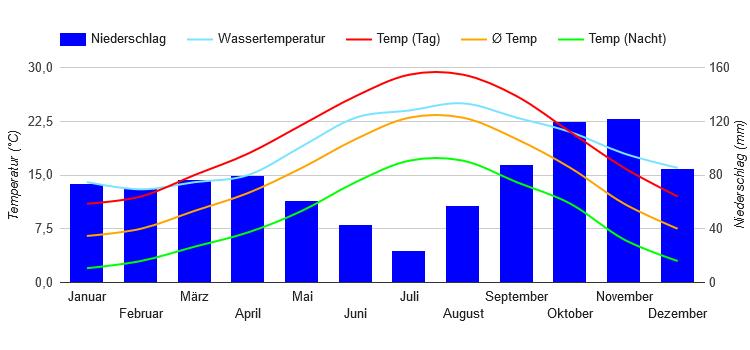
Source of Data: German Weather Service (Offenbach) and Wikipedia
Climate Table Tuscany
Temperatures, precipitation in livorno (tuscany), highlights and attractions, popular activities, more attractions, current weather and forecast.
Italy: Regions
Best time to travel for the regions.
Livorno: June , July , August , and September

Activities and Attractions
Distances to tuscany, where’s tuscany, continent: europe, tuscany: experiences of our visitors.

sunny, from time to time cloudy, not too hot simply fantastic!
Weather Rating: 5 stars – Excellent

of a week there were 3 days when there was an afternoon or evening thunderstorm and rain. It was very warm!
Weather Rating: 4 stars – Good

The weather was pleasantly warm, swimming in the sea, during the day some wind
Share your Experience and Win
Summer in Tuscany
Destinations in the vicinity ….
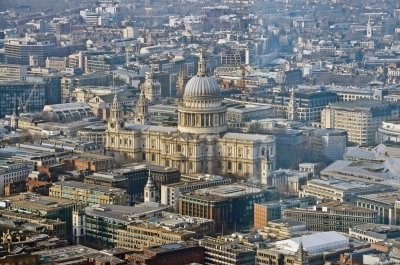
- Imprint / Privacy
- Image Sources
- United Kingdom
- Curated Stays
- Wine Travel
- About Isabelle
- Work with Us
11 Enchanting Towns in Tuscany for Your Bucket List
- Isabelle Hoyne
- January 24, 2024
** Disclosure: some of the links on this site are affiliate links and should you make a purchase through these, I may receive a small commission at no extra cost to you. Thank you for your support!**
I’ve been there before – overwhelmed by the sheer volume of beautiful Tuscan towns there are and trying to figure out what the best towns to visit in Tuscany really are….and how are you ever going to fit them into your itinerary? There are many beautiful towns in Tuscany, ranging from hill top hamlets to coastal delights. This guide walks you through the best towns in Tuscany Italy , helping you to make your itinerary planning that little bit easier.
As regions go, Tuscany is quite a perfect one. Famous as the home of Florence , birthplace of the Renaissance and its iconic Duomo, the impact that the glory days of Florence had on the wider region of Tuscany can be felt everywhere you go.
The Tuscan landscape inspired many a great masterpiece by Florentine artists and in turn, the city of Florence and to a lesser extent, Siena , provided alliances and wealth to many of the towns that are dotted around the region.
Many of these former strong-holdings are now well-known as the hill towns of Tuscany, having been placed more often than not on elevated, rocky outcrops that guard the countryside below. Many, to this day, retain a distinct medieval aesthetic and thus carry with them a very unique character and charm.
The history of some towns in Tuscany stretch back even further than that – to the Romans and the Etruscans – and some, even, to the Bronze Age. For lovers of history, the region of Tuscany and its small towns is a fascinating one.
History aside, what else is there to this abundant region that makes it so perfect? Well, there’s the fact that mountain lovers can both ski and in winter and hike in summer in Tuscany’s mountain ranges.
And let us not forget either the god-given tapestry that are the softly undulating hills and cyprus trees of the Val d’Orcia that Tuscany has become so synonymous with.
RELATED READING | Tuscany Guide – How To Have A Very Memorable Tuscan Road Trip
Should you wish to dip your toes in the ocean, then you can have that too – via the Tyrrhenian sea along the Maremma coast. And, quite possibly the cherry on top, is the rich, bountiful food and wine culture of the region.
Tuscan dishes are hearty and filling and local dishes vary from area to area. Tuscany also produces world-renowned wine, amongst its most famous being Chianti and the high-end Brunello di Montalcino.
If you’re a lover of wine, then it makes total sense to come to the source! Consider enhancing your experience with winery tours from Siena .
It can thus be said that discovering these small towns in Tuscany presents an intoxicating proposition. But what are the best towns in Tuscany to visit? The term ‘best’ is a very subjective one, meaning different things to different people.
So I’ve asked some fellow travel bloggers, each lovers of the Tuscan region too, to contribute some of their must see towns in Tuscany to give you a more holistic view.
These best towns in Tuscany to see I have split out as follows:
- The most beautiful small town in Tuscany to visit
- The best wine towns in Tuscany
- The best medieval towns in Tuscany, Italy
- The best hilltop towns in Tuscany
- Best coastal town in Tuscany
You’ll find that even the above categorisation is a bit imperfect, as it’s very difficult to corral towns into one distinct category – for example, the town of Montepulcianio is all of the above, except for a coastal town (hint: make sure to include it on your itinerary).
But I’ve provided enough information below for you to decide if a town is for you or not! Happy planning!
Essential links for your Tuscany Trip Planning
Book your flights to Tuscany using Kiwi Book your Tuscany car rental via Rentalcars Top-rated Tuscan tours and experiences ☆ Greve in Chianti Wine Tasting and Winery Tour (for Chianti Classico lovers) ☆ Private Truffle Hunting Experience with Wine and Lunch ☆ Lunch and Cooking with a view in a Brunello Winery (Tuscan cuisine & Brunello – a win win!) ☆ Siena Vespa Tour Including Lunch at a Chianti Winery ☆ Tuscany Hot Air Balloon Flight (if you’re looking for something really special) Top places to stay in Tuscany: AdAstra Suites (quirky Florence boutique hotel) // Borgo Pignano (ultimate luxury) // Villa Poggiano (refined villa hotel) // Plum Guide (dreamy vacation rentals with pools – read my roundup of Tuscany’s best villas with private pools ) Don’t forget to pack : Tuscany, Italy: Small-town Itineraries for the Foodie Traveler // Universal travel adapter // these **fantastic** compression packing cubes // Under the Tuscan Sun , by Frances Mayes
In this article Hide
Hiring a car – the most convenient way to visit the best towns in tuscany italy, best towns in tuscany to stay in, best wine towns in tuscany, most beautiful small town to visit in tuscany, best tuscany medieval towns, best hill top towns in tuscany, best coastal town in tuscany italy, map of tuscany towns, getting to tuscany by plane, getting to tuscany by train, getting to tuscany by bus, best ways to visit the tuscany villages, best time to visit the tuscany villages, how big is tuscany, what are the best towns near florence italy, what are some non touristy towns in tuscany, where is a good home base in tuscany, how many days do you need in tuscany italy, what is the best month to visit tuscany, where is the most beautiful countryside in tuscany, what are the major towns of tuscany, what town is the heart of tuscany, essential related reading if you are travelling to tuscany, like this post please share or pin for later, some practical matters before choosing the best tuscan towns for you.
Before you decide on what Tuscan towns you’re going to visit, you should first figure our how you’re going to get around and then choose your towns accordingly.
While you can get around to the larger towns in Tuscany relatively easily via the train network, if you are to reply on public transport to get around Tuscany, you will find it difficult to reach the most small towns in Tuscany as you will be reliant on regional buses that often have sparse and infrequent timetables.
For that reason, I would highly recommend that you rent a car in Tuscany.
I always use rentalcars.com when hiring a car abroad and our road trip to Tuscany was no different. I like them for the following reasons:
- You can compare all car rental companies in a given destination. They also have superior filtering options too, so you really can drill down to what you’re looking for – even to the deposit amount and payment type.
- All the info you need for your relevant booking can subsequently be found in their convenient app – no print outs necessary.
- You can often amend/cancel your booking with no additional charges.
If you don’t fancy driving, then I would instead recommend that you base yourself in some of the larger towns in Tuscany and see more of the best little towns in Tuscany via guided tours and day trips. You can learn more in the section directly below.
This is a tough question to answer, and the answer to what the best towns to stay in Tuscany Italy are is dependent firstly on how much time you have to spend in Tuscany, and secondly, which must-see towns in Tuscany pique your interest the most, and where they are located.
If you are visiting Tuscany for a shorter period of time, then staying in Florence and doing day trips from there might make more sense. You can see and book day trips from Florence here .
However if you do have 5 or more days in Tuscany then great! Make sure that you allocate plenty of time within your Tuscany itinerary to discover a smattering of the more famous towns in Tuscany, together with some of the more under the radar, beautiful small towns in Tuscany.
I’d highly recommend booking accommodation at a Tuscan villa when in the countryside, whether that be one operating as a hotel or as a vacation rental. It’s truly the best way to get that rustic, Tuscan experience.
If you are concerned about being close to a town, exploring the best small towns in Tuscany to stay can be a great idea.
What are the best Tuscany towns to stay in?
- Chianti : some of the best Tuscany towns to stay in to access the Chianti region include Greve-in-Chianti , San Gimignano and Volterra .
- North Tuscany : one of the best small towns to stay in Tuscany’s north is the famous walled town of Lucca .
- Val d’Orcia : I’d highly recommend positioning yourself close to Montepulciano if you’re visiting the glorious Val d’Orcia – it’s one of my favourites and also one of the best Tuscan towns to stay in due to how fabulous the town is itself, together with how well positioned it is for exploring the area.
Booking a luxury villa in Tuscany
If you’ve decided (or need some convincing) that booking a luxury villa in Tuscany is the way to go, then I’ve pulled together a curated list of the best villas in Tuscany , all with pools, that are split out by region to help you find one in a location that’s perfect for your needs.
RELATED READING | 19 Beautiful Villas In Tuscany With Private Pools [2024]
Booking a hotel in Tuscany
If you’d prefer to be waited on hand and foot, you can discover some great villas operating as hotels in Tuscany to stay in by using the below interactive map. I’ve also included VRBOs in Tuscany too in case you want to search for a villa that way. Just enter your dates and away you go!
The best towns in Tuscany to visit
Montepulciano .
By Isabelle, from Cultured Voyages
Situated high on a rocky outcrop, hewn into the bedrock sits the ancient town of Montepulciano, which presides regally above the expansive plains and hills of the Val d’Orcia below.
This medieval hill town is a very special one, carrying a distinct air of uniqueness, spectacular views from its town walls and an ancient and interesting history.
Montepulciano is perfect both as a base from which to explore the other Tuscan villages and historic towns of this beautiful region, or indeed to just pop into for a day trip to take a wander around its ancient streets, admire its beautiful buildings and bask in the panoramic views of the rolling hills.
Follow the cobbled streets upward to the historic town center and the marvelously medieval Piazza Grande, where you can still see the Medici insignia emblazoned in the square.
This imposing walled town is also home to a number of excellent restaurants – two that I can highly recommend.
First, is Osteria del Borgo , a traditional restaurant located just inside one of the main gates of the old city walls and offers hearty Tuscan dishes and stunning views of the beautiful countryside from its outdoor terrace.
Second, is La Bottega del Nobile , a special winebar-restaurant with tables deep down in the wine cellar, glorious food and an extensive wine list.
Situated in the heart of a wine region, Montepulciano is famed for its very special wine, Vino Nobile di Montepulciano. There are lots of great local wineries nearby, so this is the perfect place to undertake some wine tasting if you wish to include it on your Tuscan itinerary.
RELATED READING | 11 Best Wine Tours in Montepulciano: 2024 Curated Picks
By Chris from Amateur Traveler
Montalcino is one of those beautiful hill towns that Tuscany is known for. The history in the area goes back to the Etruscans, but the town today is protected by its five sided Fortezza which dates back to the 1300s.
These days the town is known for the Brunello wine produced from the vineyards that cover the slopes of the hill. Brunello is one of the most popular of the Italian red wines and there is no better place to sample Brunello than in the Tuscan town which it hails from.
You can walk all the streets of the town in 15 minutes and still have time left over to find a glass of wine. There are a number of small enotecas in town where you can stop for a glass or a bottle of wine, including one in the Fortezza.
Take your time as you walk through town and peek into the small private courtyards of this charming town.
Start at the Fortezza where you can climb up to the walls to get the best view in the town. The Main Street runs from the Fortezza across the hill to the humble Sant’Agostino gothic-style church.
Across the street from the church is the small Riuniti Museum which has a collection of art from the 14th to the 20th century. The museum is run by the city and the Catholic diocese and its best pieces are religious art.
After the hustle of Florence or Siena, Montalcino is a quiet interlude. The best way to experience Montalcino is to rent one of the villas near town and make it a base for operations in Tuscany. You can easily do day trips from Montalcino.
Without shadow of a doubt, one of the most beautiful towns in Tuscany is the renaissance town of Pienza.
Pienza is located close to Montepulciano, meaning that it is extremely easy to combine a visit to both of these towns in one day, or to visit one while based in the other. On the route between Montepulciano and Siena also, it’s extremely easy to stop off in Pienza if you are transiting between the two.
Pienza is often regarded as the most beautiful town in Tuscany, with its well-preserved Renaissance architecture and charming atmosphere that transports visitors back in time.
Upon entering the old historical center of Pienza, it feels like you have stepped into a time warp, as much of the town’s major features date from the Renaissance. In the 15th century, Pienza (then known as Corsignano), struck gold when a citizen from this formerly humble village was elected Pope Pius II.
He set about making Pienza the ideal Renaissance town, enlisting the help of famous architect Leon Battista Alberti to remodel the town based on humanist urban planning principles.
Upon Pius’ death, the redevelopment halted and what remains today has been virtually untouched since that time. Its beautiful architecture from this period makes it one of the most prettiest towns in Tuscany.
A UNESCO World Heritage town, Pienza is also home to Pecorino Di Pienza, a sheep’s milk cheese that is added to many of Tuscany’s most delicious dishes and cheese shops are smattered amongst the historic buildings of Pienza’s winding streets.
With its incredibly well-preserved Renaissance buildings and its position as the capital of pecorino cheese, Pienza is an extremely compelling day trip proposition on a Tuscan road trip.
It offers astounding views of the surrounding fields and cypress trees of the Val d’Orcia, making it by far and away one of the top small towns in Tuscany Italy to visit.
San Gimignano
By Or from My Path in the World
Also known as the Town of Fine Towers or Medieval Manhattan, San Gimignano is a walled hilltop town you don’t want to miss in Tuscany . Just by driving towards it, its unique skyline makes it easy to understand why it is one of the most picturesque towns in the region.
Thanks to its iconic well-preserved tower houses and stunning medieval architecture, its historic center was declared a UNESCO World Heritage Site, and indeed, strolling through San Gimignano feels like stepping back time.
Some of the main points of interest of this enchanting town include the Palazzo Comunale (the highest of the towers and an art museum), Porta San Giovanni, and Duomo di San Gimignano (Collegiate Church of the Assumption of Mary), but you’ll find plenty of beauty in each and every corner.
Plus, there’s no shortage of panoramic lookout points.
Although it’s a small place, this town is also known for its fantastic food, saffron production, and white wine (Vernaccia di San Gimignano), so you’ll also find many amazing restaurants, wine bars, and wine shops here.
A few to check out are Le Vecchie Mura, Il Ceppo Toscano, and La Vecchia Nicchia. San Gimignano is among the charming Tuscany small towns, offering a delightful culinary experience alongside its historical attractions.
Last but not least – located in the central Piazza della Cisterna, don’t miss Gelateria Dondoli, which was the Gelato World Champion more than once.
It is especially known for a few unique flavors you have to try, like Crema di Santa Fina (cream with saffron and pine nuts), Dolceamaro (cream with aromatic herbs), and Champelmo (pink grapefruit and sparkling wine).
By Karen from Bewitched By Italy
Lucca is one of the most popular medieval towns in Tuscany, with Etruscan and Roman origins. In the Middle Ages it was an important city-state, and the architecture and historic centre that are the main attraction for tourists date from this period.
The number one must-do activity here is to walk along the top of the Lucca city walls . These form a complete circuit of around 4 km, built in the 16 th century but incorporating earlier sections.
The walls are not just of historic interest: they are wide and form an extensive area of parkland, with trees, cafés and children’s play areas. Lucca is considered the best city in Tuscany to visit, offering a unique and enjoyable experience for tourists.
Elsewhere in the city, look out for the remarkable Piazza Anfiteatro, built on the site of the old Roman amphitheatre. Unlike most piazze this one is round, and shops and restaurants have been built into the spaces where the arches once were.
At the centre of Lucca is the Cattedrale di San Martino, notable for its 13 th century black wooden figure of Christ and a painting of the Last Supper by Tintoretto.
You can also visit the Palazzo Pfanner (a palace and garden that is now an art museum) and the Puccini Museum, in the house where the composer was born. Or climb to the top of the Torre Guinigi, a 14 th century bell tower, for views across the city.
There are several places to eat around the Cathedral area. I enjoyed a meal at the Aria Café Restaurant in one of the nicest towns in Tuscany.
Monteriggioni
Martina – PlacesofJuma
A really amazing tip for a stop on a road trip is the wonderful medieval village of Monteriggioni in Tuscany . The historic fortress, which is located on the hill Monte Ala, is especially beautiful and due to its location, it offers a fantastic view over the Tuscan countryside.
In the center of the complex enchants a picturesque old town, which can be explored via a short easy walk. Among the most important attractions are the well-preserved defense towers and the city wall, which you can even climb up.
Monteriggioni is a gem among the Tuscany cities, showcasing the region’s rich history and captivating landscapes.
The medieval flair of Monteriggioni is unique in Tuscany, and that is why a large medieval festival is held here once a year in the summer. Absolutely worth seeing is also the Piazza Romana directly in the center.
This picturesque square is the main square of Monteriggioni and with a coffee or a glass of wine in one of the good local restaurants there you can watch the hustle and bustle.
If you love wine, don`t miss to try the regional red wine “Chianti Colli Senesi Monteriggioni”, whose vines grow in the vineyards around the castle.
Another interesting place to visit is the church of Santa Maria Assunta, which dates back to the 13th century and is one of the oldest buildings in the old town.
If you want to learn more about history, it is best to check out the museum “Monteriggioni in Arms”, where you can learn more about the rich past of Monteriggioni.
These attractions add to the allure of Tuscan cities, providing a glimpse into their fascinating heritage and cultural significance.
All in all, Monteriggioni is a real highlight in Italy and among the best towns to visit in Tuscany should not be missed on any perfect Tuscany Road Trip!
READ NEXT | 30+ Of The Best Gifts For History Buffs In 2024
By Chrysoula, from Travel Passionate
One of the top towns to visit in Tuscany, the Tuscan hilltop town of Volterra lies conveniently close to Florence. The town has a rich history dating from Etruscan times (5th century BC) when it was one of 12 powerful centers.
Remnants of its ancient defensive walls, gateways, and its strange layout are all credited to the Etruscans!
Enjoy a break from driving and slip on comfortable shoes as there is much to see in this pretty town. The center of the town has medieval streets and squares. The Palazzo dei Priori is the oldest town hall in Tuscany.
The 12th century Duomo – Cathedral of Santa Maria Assunta- is beautiful. Much of it was renovated in the Renaissance style and it has a richly decorated ceiling and numerous paintings including a famous fresco by Benozzo Gozzoli (1479).
If you enjoy history there is the Guamacci Etruscan Museum and numerous Roman monuments to see including Roman baths, a forum, and an amphitheater. The magnificent Medici Fortress sadly cannot be explored inside as it is used as a top security prison.
Volterra is world-famous for its alabaster carving, so is perfect for souvenir shopping. During mid-March, late October, and early November there are celebrations showcasing local products that include white truffles, cheeses, olive oil, and chocolate.
Volterra stands out as one of the Tuscany best towns, offering not only unique craftsmanship but also delightful culinary experiences during these festive seasons.
By Kathryn from Wandering Byrd
Cortona is built on the top of a hill, with breathtaking views across the surrounding countryside. The town is quintessentially Italian- think beautiful plazas, cute streets and lots of history.
In fact, the villa used in the movie ‘Under the Tuscan Sun’ is located just outside Cortona (you can even rent it for a week’s holiday!)
Cortona is over 2000 years old and its history is full of Greek and Roman stories. One of the biggest attractions in the town is the Accademia Etrusca- a museum full of artefacts and things found in the area.
It’s spread over 5 floors in a 13th century building and is well worth a visit. There are several other museums and historic places in the town to visit, including the Cathedral and the main square.
If you’re more interested in Italian food and drink than history, head to La Bucaccia- set in a medieval stables and famous for its beef and pasta dishes. For wine, you can’t beat Taverna Pane e Vino, where you can enjoy Tuscan and Italian wines along with bruschetta and cheese.
If you’re campervanning in Italy , there are some wonderful campsites to stay at within walking distance of the town, but if you’re road tripping by car, there are plenty of hotels and BnBs to choose from.
Exploring the top Tuscany towns becomes even more convenient with a range of accommodations available to suit different preferences and travel styles.
Cortona is also famous for its jazz festival, which usually happens over several days around the end of April and is definitely worth arranging your travel to be there for the festival atmosphere which spreads through the town.
By Isabelle from Issy’s Escapades
Pitigliano is one of Tuscany’s famous ‘Tufa’ towns, which are towns that have been carved from volcanic (or ‘tufaceous’) rock.
Pitigliano is the most recognisable Tufa town in Tuscany, in part due to the dramatic setting it occupies atop a particularly elevated and prominent rocky outcrop. It is undeniably one of the Tuscany must-see town for its remarkable geological features and rich historical heritage.
South of Montepulciano and close too to the thermal mineral waters of Bagno San Filippo, its relative proximity to other popular Tuscan towns, together with its fascinating historical and cultural heritage, make Pitigliano one of the best small towns in Tuscany to visit.
Pitigliano’s earliest signs of inhabitance are rather ancient, dating back to Neolithic times.
There are also signs to suggest that there was an Etruscan community here in the 6th century, followed by the Romans, before the Medicis left their mark on this historic town in the 16th century, with the construction of an aqueduct that can still be seen to this day in the town center.
Extremely interesting too, is the fact that Pitigliano is also known as “Little Jerusalem”, due to the role it played as an important refuge to the Jewish community who fled persecution from other areas of Italy from the 14th century onwards.
They played an important role of shaping the culture of this interesting Tuscan town and it is possible today to visit the former Ghetto area of the town.
As one of the best hill towns in Tuscany worth visiting, there is a lot to fit in during a visit to Pitigliano. Make your way to the north-western part of the town to discover ancient Etruscan walls and the Porta Sovana , an entrance to the town hewn from the tuff that leads to the vie cave and the necropolis of Sovana .
The vie cave (meaning, simply “excavated roads”) are a bewildering set of tunnels – as no one knows for certain why they exist – which you can explore with or without a tour guide. Look out too for the “ Tempietto “, which is a small temple that may lead back to Etruscan times.
As such a historic town in Tuscany, it is a given that Pitigliano is home to some museums, should you wish to learn more about its heritage.
These include the Alberto Manzi Outdoor Archaeological Museum, which brings Pitigliano’s history to life, the Civic Archaeological Museum of Pitigliano, which includes a range of artefacts from the Bronze Age to the Etruscans , and the Palazzo Orsini and Museum of Sacred Art.
The lovely town of Barga is one of the most important hilltop towns in Tuscany, known also as the Gem of the Garfagnana .
The Garfagnana is an area within the province of Lucca, in Tuscany’s north-west, that is famous for its sprawling and varied landscape. Barga is one of the top towns in Tuscany to visit or base yourself if you love the great outdoors and all the activities that go with it!
The town itself is contained within a marvelous mountain setting and is around an hour from the best Tuscan town to visit, Lucca. It is a wonderful location in which to wander narrow streets and discover the pastel-hued Renaissance buildings housed within Barga’s centre.
Historically, the town of Barga was linked to the powerful Renaissance city of Florence for centuries and reaped the rewards that this strategic alliance offered.
In this regards, it is therefore thoroughly unsurprising that you will the Medici coat of arms of the columns of the Florentine Marzocco (the lion symbol of Florence’s political strength) beside the Loggia dei Mercanti . This was the town’s medieval marketplace located in the town’s main square, Piazza Salvi.
Barga is also home to one of the most important Romanesque churches in Tuscany, the Cathedral of San Cristofano. The church sits high above the town, on a vantage point called the “Arringo”, where citizens used to meet to discuss important matters and also, for executions.
Rather interestingly, the Arringo has earned itself the nickname of “ Prataccio “, or “nasty lawn” as a result of the latter!
Portoferraio
By Emma from Emma’s Roadmap
One of the cutest towns in Tuscany is definitely the small harbour city Portoferraio on the island of Elba. If you’d like to get away from mainland Italy and explore more of its coast, this is definitely the place to be!
The name Portoferraio actually means iron harbour in English and refers to the history of this city in Tuscany as the place to trade iron. However, this is not the main reason why Portoferraio is mostly known.
In 1814, the one and only Napoleon Bonaparte was banned to the island of Elba and lived in Portoferraio for almost a year. Because of this, Portoferraio also attracts many tourists.
One of the top attractions in this harbour town is one of Napoleon’s houses, Villa dei Mulini. Here, you can experience how the emperor used to live in exile and learn more about his history!
Another great activity in this city is Martello Tower. This tower used to be a prison and is located right at the harbour with an amazing view of the bay of Portoferraio. Originally, it was built as part of a defense infrastructure for the island, but right now you can visit it together with its museum. It is definitely worth exploring while visiting one of the best Tuscan towns.
Of course, you can’t visit the island Elba or Portoferraio without trying the local cuisine! Very popular dishes you should try on the island are Rio-style rockfish, stuffed sardines and boiled octopus. Also, don’t forget to try one of the local wines while visiting Portoferraio, one of the best coastal towns in Tuscany!
To aid you in your trip planning, I’ve included the above best Tuscany towns to visit on a map.
Unless you have at least 10 days, it is highly unlikely that you will be able to visit all of these towns in Tuscany Italy in one visit, so choose a handful that pique your interest and combine them other visits to the best cities in Tuscany like Florence and Siena.
How to use the map : Use the toggle on the left on the header bar to open/close map contents. You can also zoom in and out and interact with the saved items on this map. To save the map to your own Google account, click on the star sign beside the map title on the header.
How to get to Tuscany
Tuscany is home to two airports; one in Florence and another larger airport in Pisa. You may find more extensive flight schedules to Pisa so as a result, prepare to be flexible on which you fly in and/or out of.
Both airports are well connected to other cities and larger towns in Tuscany via the train network. It’s also completely possible and not too taxing to fly to Rome and either drive or get a train to Tuscany.
Having used the train network in Italy throughout various regions of the country, I can confirm that it’s an extremely reliable and efficient way to travel. Major cities are well connected, with smaller towns in turn being well connected to a larger hub.
Trains from Rome to Florence, for example are frequent (running at over 50 a day) and take only around 1 and a half hours.
| TICKETS: Buy train tickets from ItaliaRail , or plan a route and purchase tickets via Omio .
If you’d prefer to take a bus (I’d recommend a train, however, if budget is not a concern) then there are also numerous companies that operate bus routes within Italy.
| TICKETS: Plan your route and purchase tickets here .
To fully experience the charming Tuscany villages, there are various options available to suit different preferences.
One of the best ways is to hire a car , as it offers the flexibility to explore at your own pace and venture off the beaten path. Driving through the picturesque countryside allows you to immerse yourself in the breathtaking landscapes and stop at multiple villages along the way.
If you prefer not to drive, public transport is another viable option. Trains and buses connect many of the villages, making it convenient to hop from one to another. However, do note that the frequency of public transport can be limited in some rural areas.
Alternatively, hiring a private driver provides a more personalised experience, with the convenience of door-to-door service and local insights. This option is ideal for those who prefer a guided experience or have limited time.
Lastly, joining a group tour can be a great way to discover the Tuscany villages with a knowledgeable guide. Group tours often cover popular destinations and offer the opportunity to meet fellow travellers.
Consider your preferences and priorities when choosing the best way to explore the Tuscany villages, ensuring you make the most of your visit.
When it comes to visiting the picturesque Tuscany villages, timing is everything. Each season offers a unique charm, so it ultimately depends on your preferences.
Springtime, from April to June, is a delightful period to explore the villages. The weather is mild, the countryside is blooming with colourful flowers, and the vineyards are alive with activity. It’s the perfect time for leisurely walks and outdoor activities.
Summer, from July to August, is undeniably the busiest season, with warmer temperatures and a lively atmosphere. If you don’t mind the crowds, you can enjoy vibrant festivals, open-air markets, and alfresco dining.
Autumn, from September to October, is a magical time when the landscapes transform into a breathtaking tapestry of golden hues. It’s the harvest season, and you can witness the vineyards and olive groves in full swing.
The weather is pleasant, and the villages are less crowded, making it ideal for immersing yourself in the local culture.
Winter, from November to February, brings a tranquil ambience to the villages. While some attractions and restaurants may have reduced hours, you can still experience the authentic Tuscan life and indulge in cosy evenings by the fireplace.
Overall, Tuscany is a year-round destination, and the best time to visit depends on your preferences, whether it’s vibrant festivals, blooming nature, or peaceful solitude.
Tuscan towns to visit – FAQ
Tuscany is a region in central Italy that covers an area of approximately 23,000 square kilometres (8,900 square miles). It consists of several provinces, including Florence, Siena, Pisa, Lucca, and more.
From the list of Tuscan towns included in this list, the best towns near Florence to visit are Volterra, San Gimignano, Monteriggioni and Lucca.
Tuscany is quite heavily visited, so in order to find some less-frequented places, you’ll need to head a little off the beaten track. Some non touristy towns in Tuscany to visit would include the likes of Barga, Pitigliani (it’s well known but often gets overlooked) Collodi, Montefioralle and Certaldo Alto.
The truth is, that while you see the same names thrown about a lot, there are almost endless amounts of small towns in Tuscany to visit. The best thing to do is to decide on one smaller area within Tuscany and then head off in your rental car to discover some of them serendipitously.
A good home base in Tuscany will depend on a number of factors, such as how long you plan on staying in Tuscany for and what areas of Tuscany you’d like to see.
Personally, I think the Siena region of Tuscany makes a fantastic base, as it’s fairly central; you’ll be able to easily access cities like Florence, Siena and Arezzo as well as be placed somewhat in the middle of the region, which means you’ll have a whole host of beautiful Tuscan towns within reach.
I discuss where to base yourself further in the relevant section above .
In order to get any sort of feel for the region, I’d plan to spend at least three days in Tuscany (not including Florence).
It’s the perfect region to explore deeply, however, so you can easily spend a week or more in Tuscany – in fact I’d highly recommend doing so. Read my Tuscany itinerary post to discover how to pass your time.
The absolute best months to visit Tuscany are May and September. In May, temperatures are warm but not unpleasantly hot. The countryside is also quite lush, so if you want to see the rolling green hills that Tuscany is known for it’s the ideal time to do so.
September will be a bit hotter than May, but again, nothing unbearable which makes it a great time to go for some early-Autumn sun. The countryside starts to turn golden and the grape harvest also takes place, which will be particularly appealing to wine lovers.
While Tuscany is renowned for its scenic countryside, the Val d’Orcia region is often considered the epitome of Tuscan beauty. Located south of Siena, it features rolling hills, cypress-lined roads, vineyards, and picturesque villages like Montalcino and Pienza.
Tuscany is home to several major towns that showcase its rich history and culture. Some notable ones include Florence, Siena, Pisa, Lucca, Arezzo, and Cortona. Each town has its own unique charm and attractions worth exploring.
While Tuscany has many captivating towns, Florence is often considered the heart of the region. Known for its Renaissance art and architecture, Florence boasts iconic landmarks such as the Duomo, Uffizi Gallery, and Ponte Vecchio. It offers a perfect blend of history, culture, and culinary delights.
- TUSCANY ITINERARY | Tuscany Guide – How To Have A Very Memorable Tuscan Road Trip
- TUSCAN VILLAS WITH POOLS | 19 Beautiful Villas In Tuscany With Private Pools [2024]
- BEST TUSCAN TOWNS TO VISIT | 11 Best Towns In Tuscany That You Need To Visit At Least Once
- IS FLORENCE WORTH VISITING | Is Florence Worth Visiting? 19 Pros + 6 Cons to Help You Decide
- FLORENCE ITINERARY | How To Spend 2 Days In Florence – A Comprehensive Guide
- BEST CHIANTI WINE TOURS FROM FLORENCE | 15 Best Chianti Wine Tours From Florence: 2024 Curated Picks
- BEST BRUNELLO WINE TOURS | Best 15 Brunello Wine Tours: Curated Picks & Essential Tips
- LUXE FLORENCE VACATION RENTALS | Ultimate List Of The Best 17 Airbnbs In Florence Italy For Luxury Lovers
- LUXE SIENA VACATION RENTALS | The Best Airbnb Siena Italy – A Luxury List Of Siena’s Loveliest Listings
- BEST WINE TOURS IN SIENA | 10 Best Wine Tours in Siena [2024 Picks] + Tips to Maximise Your Experience
- SIENA CITY GUIDE | The Perfect Way To Spend A Day In Siena, Italy
- BEST WINE TOURS IN MONTEPULCIANO | 11 Best Wine Tours in Montepulciano: 2024 Curated Picks
- BEST WINE TOURS IN TUSCANY | 15 Best Wine Tours in Tuscany (+ Tips For Choosing)
- ROME GUIDE | The Perfect 4-Day Rome Itinerary – Food, Culture & A Little Luxury
Related Topics
- Inspiration
Hi there! I'm Isabelle, aficionado of immersive travel experiences and unique, luxurious hotels. You'll most likely find me camera in hand, or nerding out on research in advance of my next trip. A major foodie, history and scenery lover, nothing makes me happier than soaking in the atmosphere and culture of the destination I'm visiting.
You May Also Like
20 best sri lanka safari hotels across 6 national parks.
- April 26, 2024
- Lisbon & Tagus
Is Sintra Worth Visiting? 12 Pros, 5 Challenges + Top Tips
- March 5, 2024
- French Riviera
Where to Stay on the French Riviera: 11 Best Locations (& Hotels)
- February 29, 2024
Input your search keywords and press Enter.

Campiglia Marittima- Discover the Top 4 Must-Visit Sights
Castel del piano – tuscany’s enchanting escapes revealed, what is rome famous for – 28 things that make rome…, coffee shop in florence – 14 choices for your caffeine fix, northern vs southern italian food – 14 rich culinary delights, sorrento food – cuisine with rich history and tradition, amalfi coast food – 13 typical dishes to taste, tuscan food – a wealth of pasta sauces, soups, and sweets, tuscan desserts – sweets, cookies, cakes, and wines, what to wear in rome – where fashion meets history, rome to tuscany – navigating the best travel route, italy in january – your winter guide for 10 things to…, rome in january – visiting the eternal city in winter, rome to amalfi coast day trip- everything you need to know.
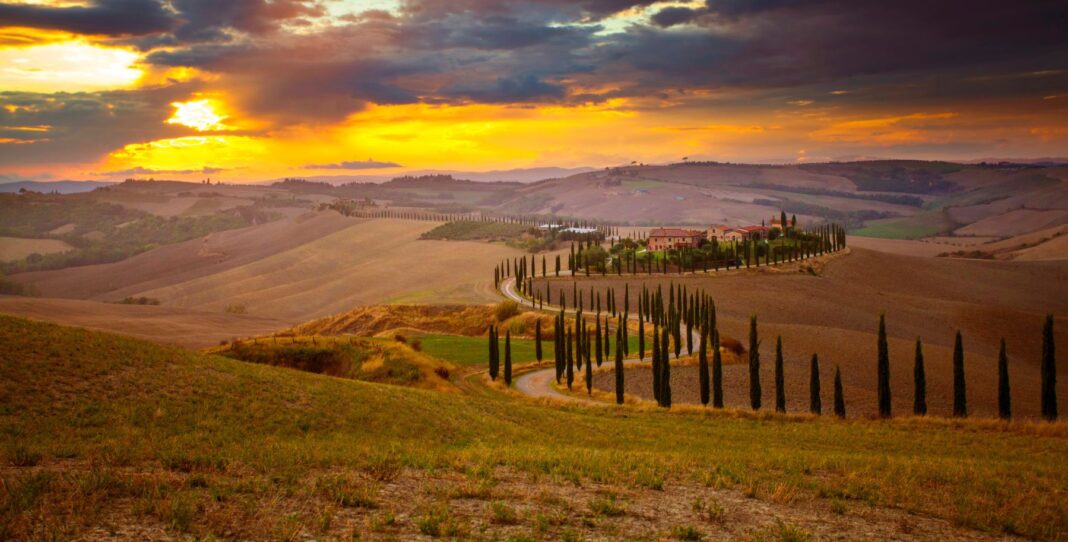
Tuscany In November – Weather, Things to Do, and What to Pack
Are you preparing for your very first trip to Tuscany? If so, you might be wondering whether or not a trip to Tuscany in November is a good idea.
Many people say that one of the best times to visit Tuscany is in November, as you’ll get to take advantage o discounted prices, smaller crowds, and exceptional culinary experiences. Plus, the region’s festivities during November revolve around the delightful appreciation of local truffles and chestnuts, accompanied by wine tastings, grape harvests, and more.
In this guide, we’re going to dive in and explore all of the reasons why you might consider a trip to Tuscany in late autumn. Let’s dive in!
Weather in Tuscany in November
As November arrives, the sunny and dry early autumn weather begins to fade away. Central Tuscany, particularly around Florence, experiences cooler temperatures with averages ranging from 41 to 59°F (5 to 15°C). In the mountainous eastern and northwestern areas, temperatures drop further, nearing freezing point.
It’s also worth noting that Tuscany experiences its highest rainfall in November, so we advise packing a waterproof jacket and warmer clothing layers.
Is Tuscany Crowded in November?
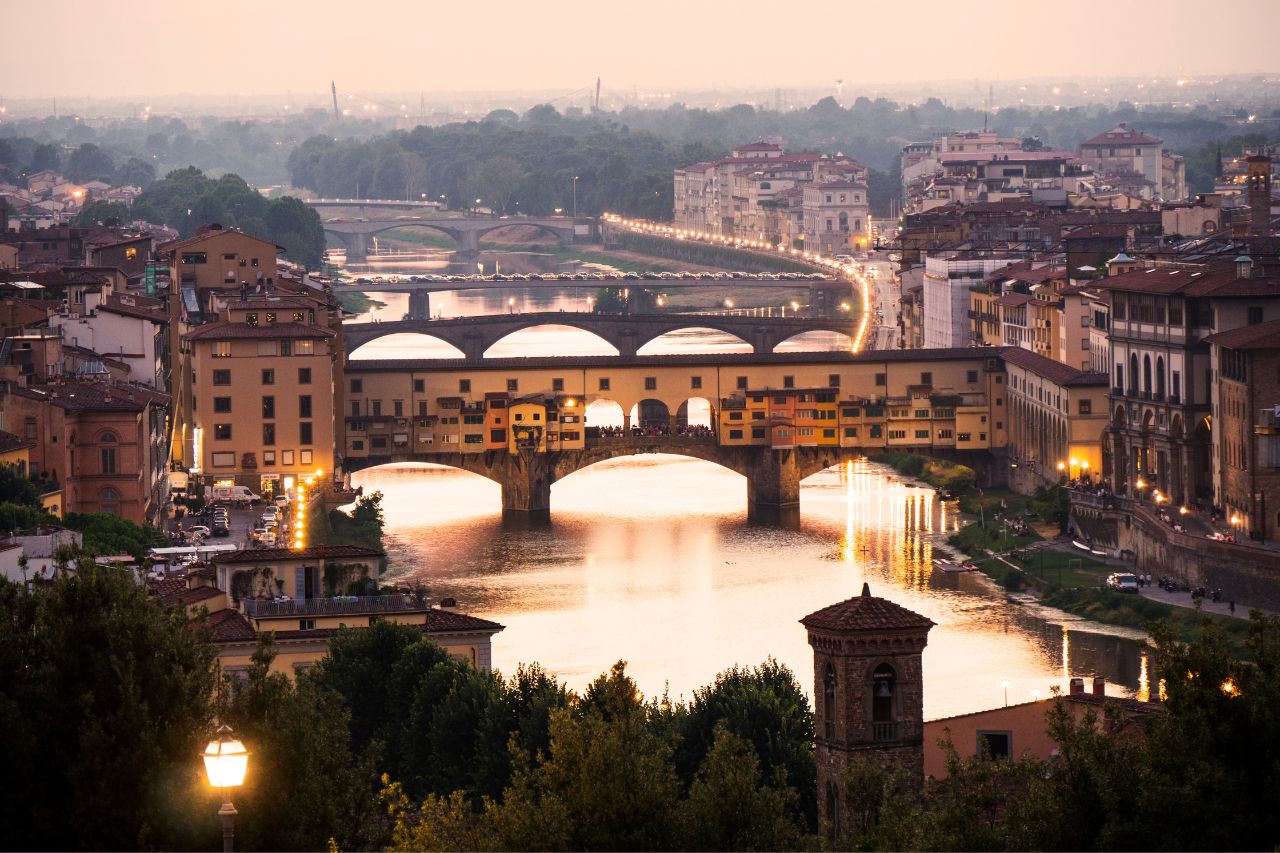
November is the off-season for tourism in Tuscany, making it a great time to visit. With far fewer tourists than in the summer months , you’ll enjoy less crowded hotels, restaurants, and attractions.
What are the Best Things to Do in Tuscany in November?
Here are the best things to do if you want to visit Tuscany in this period.
1. White Truffle Festival of San Miniato
Each year, the town of San Miniato , which lies midway between Florence and Pisa, hosts the renowned National Festival of the White Truffle . This extraordinary event entices numerous truffle enthusiasts and gastronomes from around the globe, drawing in thousands of visitors to partake in the festivities. It’s one of the best opportunities you can find to indulge in the unique and exquisite flavors of the highly sought-after white truffle.
The charming streets of San Miniato transform into a bustling marketplace, where local vendors proudly display their products, each telling a story of Tuscan heritage and culinary craftsmanship. Visitors can also enjoy cooking demonstrations, truffle hunting exhibitions, and live folk music, making it a truly immersive cultural experience. Whether you’re a food lover or a culture enthusiast, the White Truffle Festival of San Miniato promises an unforgettable journey into the heart of Tuscany’s gastronomy and traditions.
2. Explore the Autumn-Colored Countryside
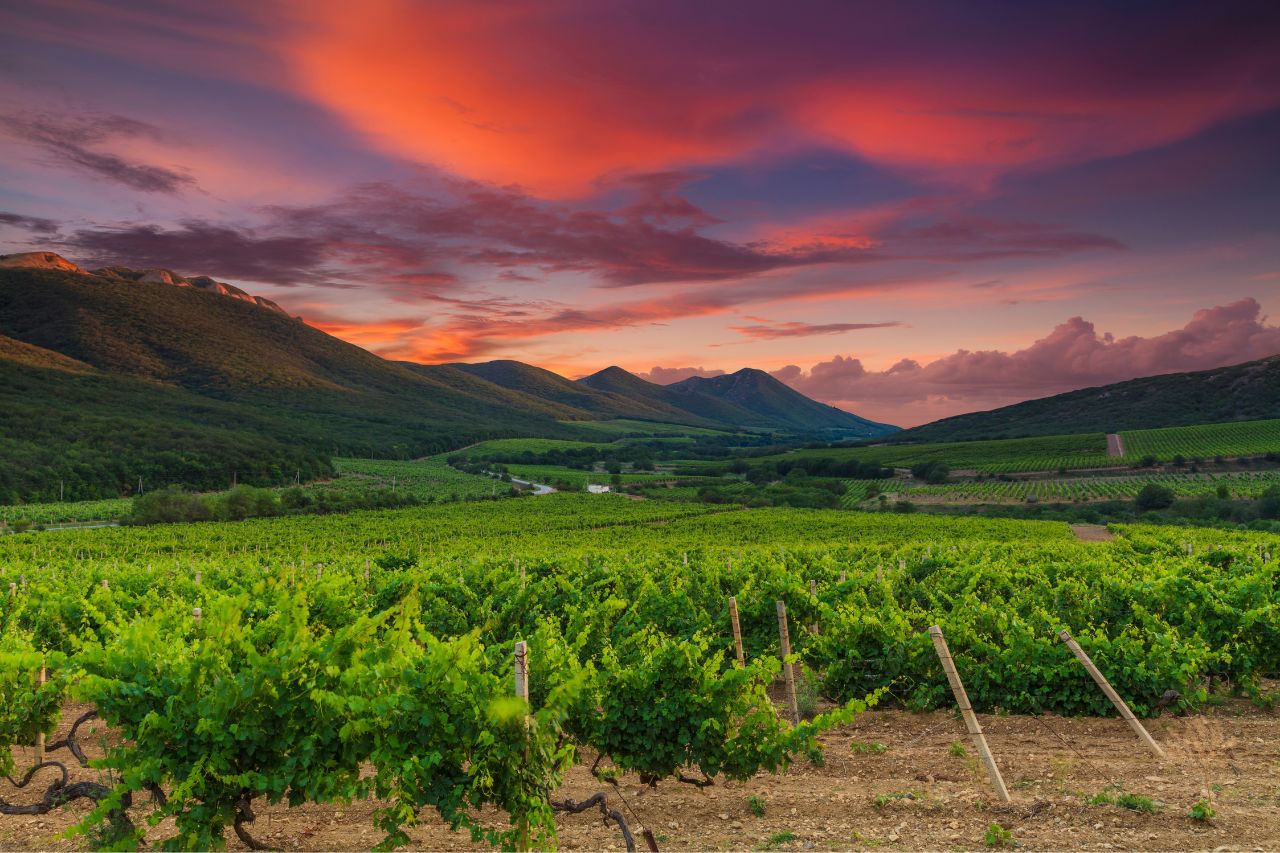
When November rolls around, there’s nothing quite like exploring the Tuscan countryside , adorned with vibrant autumn colors. From exploring the natural parks, such as the Chianti or Casentino forests, to taking scenic drives with a rental car, getting outdoors during this time is a must, especially if you live somewhere without true seasons. The Tuscan landscape, draped in shades of gold, amber, and crimson, offers a breathtaking backdrop for outdoor activities. Hiking through the rolling hills and vineyards becomes a visual feast, with each step unveiling stunning views of ancient villages and historic estates nestled in the countryside .
For photographers and nature lovers, this season provides endless opportunities to capture the essence of Tuscany’s natural beauty. Cycling tours are also a popular way to experience the region, allowing visitors to meander through quaint towns, stop at local wineries, and immerse themselves in the serene beauty of the autumnal countryside. Whether on foot, by bike, or in a car, the Tuscan countryside in November is a treasure trove of picturesque landscapes and memorable experiences, perfect for those seeking both relaxation and adventure.
Italy Travel Secret
Visit the street where the scene from the movie “Gladiator” was filmed to witness the same hill adorned with entirely different colors.
Read more: Bolgheri – Exploring the Charm of Tuscany’s Wine Country
3. San Martino Fair
The San Martino Fair is a vibrant fusion of history, culture, and gastronomy, epitomizing the richness of Italian traditions. In the heart of Tuscany, the streets come alive with colorful stalls, showcasing an array of local crafts and produce. It’s a paradise for foodies and wine connoisseurs, with stalls overflowing with local cheeses, olives, and, of course, the star of the show – the new season’s wine. The air is filled with the aroma of roasted chestnuts, a traditional treat associated with Saint Martin’s Day. As you wander through the fair, you’ll be serenaded by traditional folk music, creating an atmosphere that’s both lively and nostalgically charming.
The workshops and wine tastings provide an interactive experience, offering insights into the art of winemaking and local culinary practices. Whether you’re a history buff, a gastronome, or simply in search of a unique cultural experience, the San Martino Fair is an event that truly captures the spirit of Tuscany in the fall.
4. Visit Local Wineries
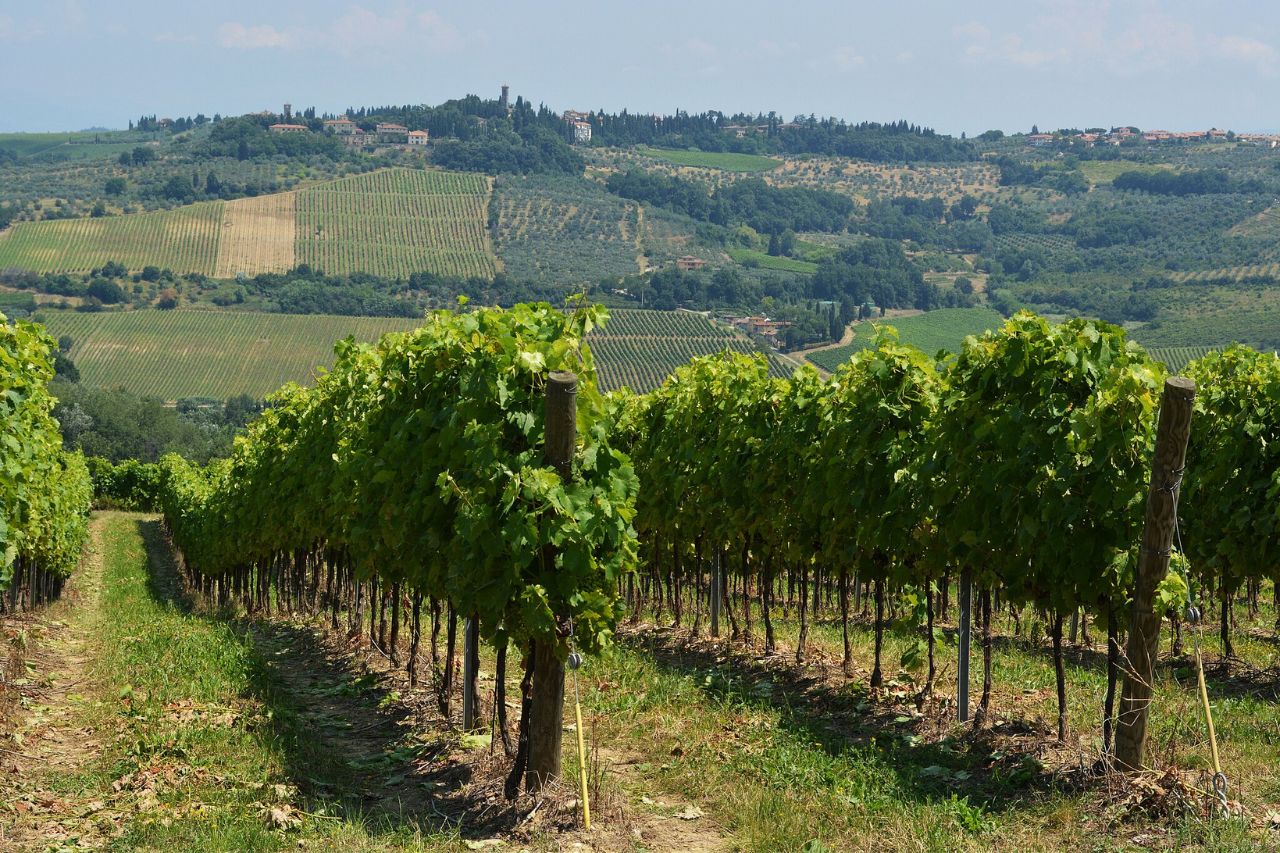
Exploring Tuscany’s wineries in November offers a truly intimate and cozy experience. As the vineyards display their autumnal hues, you’ll find yourself in the midst of Tuscany’s wine-making magic. This is the perfect time to visit local wineries, where you can taste world-famous wines like Chianti, Brunello di Montalcino, and Vino Nobile di Montepulciano right at the source.
Imagine sipping these rich wines as you chat with the winemakers themselves, learning about the love and labor that goes into each bottle. These wineries , often family-run, provide a warm, welcoming atmosphere, perfect for the cooler November weather. You’ll get to see the vineyards in a different light, post-harvest, which adds a unique charm to your visit. Tasting these exquisite wines in the crisp autumn air, possibly beside a crackling fire, is an experience that truly embodies the spirit of Tuscany in the fall.
5. Taste Local Products
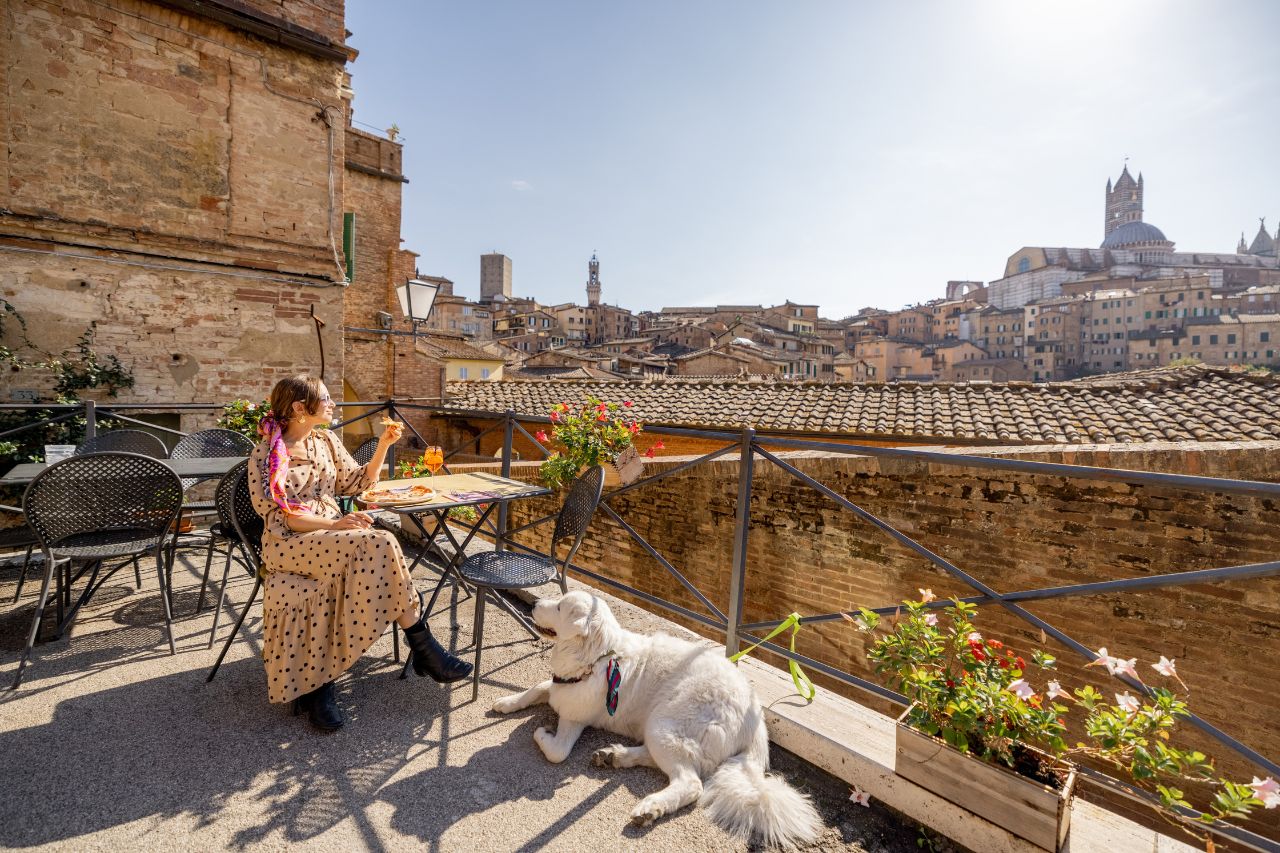
In addition to freshly harvested olive oil, Tuscany in November offers a cornucopia of seasonal delights that are sure to tantalize your taste buds. As you meander through the rustic olive groves and mills, you’ll get to experience the vibrant, peppery taste of the region’s new extra virgin olive oil – a flavor that’s as fresh as it gets.
Ribollita , the quintessential Tuscan comfort food, is a must-try during your visit. This traditional bean soup, brimming with local vegetables and enriched with day-old bread, encapsulates the essence of Tuscan culinary simplicity and heartiness. It’s a perfect dish to warm you up during the cool November days.
Don’t forget to delve into the sweet side of Tuscany with our curated list of must-try desserts . From the rich and nutty cantucci biscuits, often dipped in Vin Santo, to the decadent chestnut-based castagnaccio, these desserts offer a delightful end to any Tuscan meal.
During the autumn season in Tuscany, you can find roasted chestnuts at local markets and fairs: explore the main streets of cities to encounter street vendors.
6. Experience the Grape Harvest
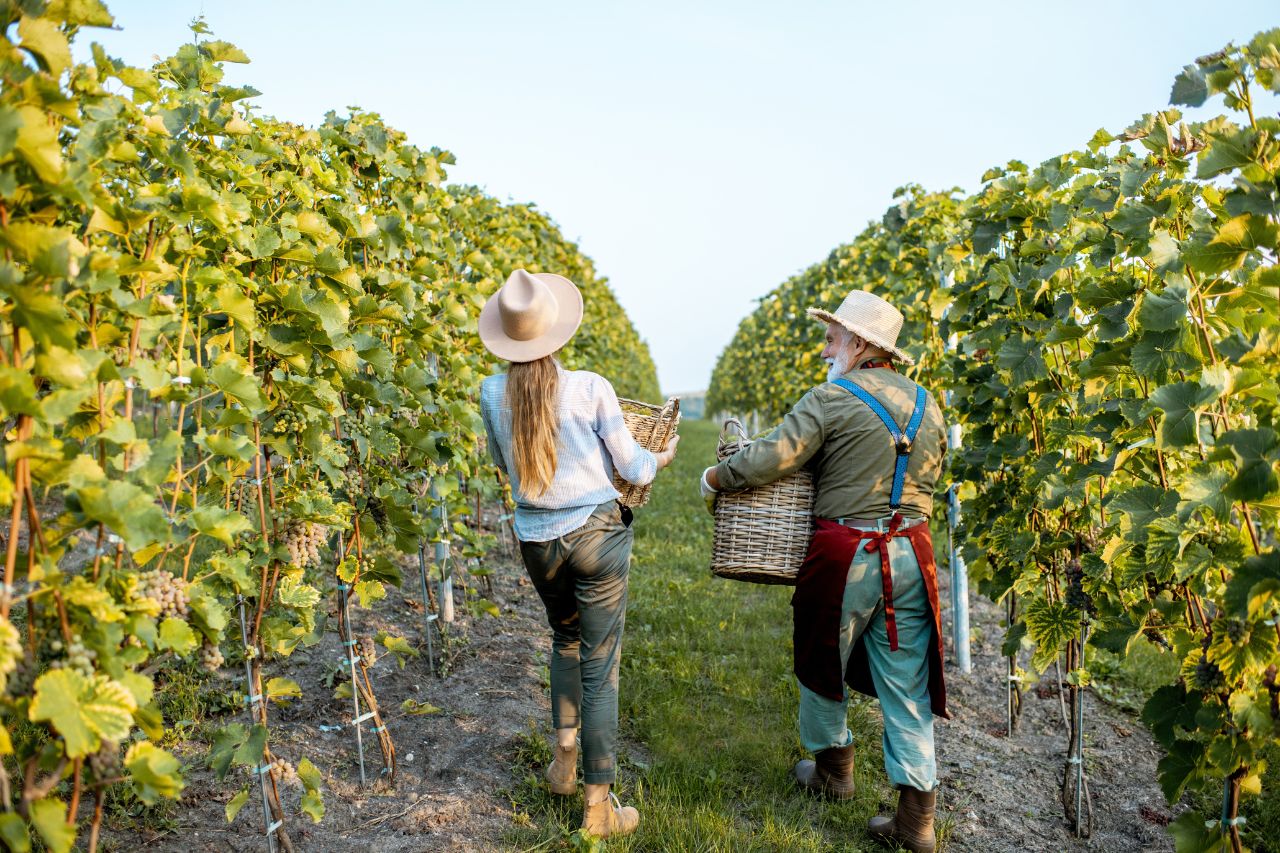
November in Tuscany, following the grape harvest season, is a time when the excitement and hard work of September and October give way to celebrations and the first tastings of the new wines. This period offers a unique perspective on Tuscany’s winemaking heritage. Visitors in this period can enjoy the tranquil post-harvest vineyards and partake in tours that delve into the entire winemaking process, from grape to glass. Many vineyards host events where you can learn about the significance of the harvest and the impact of the year’s climate on the wine’s flavor profile. It’s also a fantastic opportunity to participate in the last of the harvest festivals, celebrating the year’s hard work with local communities, enjoying traditional music, food, and, of course, the first sips of new vintages.
Grape stomping, a picturesque and fun activity, might still be available in some vineyards, offering a playful and authentic experience. As the vineyards embrace the calm of November, the focus shifts to the cellars where the magic of fermentation turns grapes into wine, a process that many vineyards are happy to share with visitors through guided tours . This time of year in Tuscany provides a more relaxed and intimate winery experience, perfect for wine lovers and those curious about its renowned viticulture.
7. Lucca Comics and Games
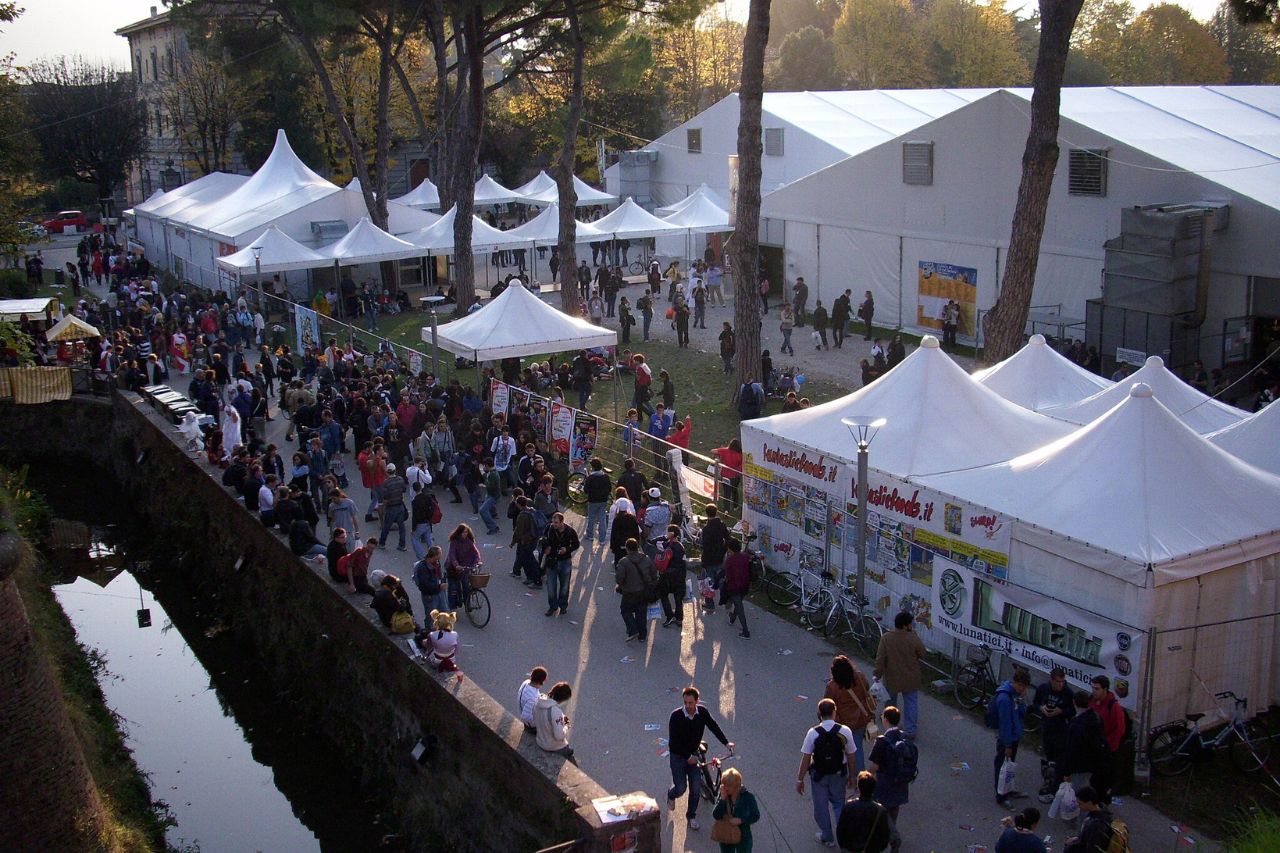
During Lucca Comics & Games , the historic city of Lucca transforms into a vibrant hub of pop culture, celebrating the artistry and creativity of comics, games, and fantasy. This festival, usually held at the end of October and spilling into early November, is a paradise for fans, where the medieval streets and squares become a colorful tapestry of costumes, art, and storytelling. As you wander through Lucca, you’ll be surrounded by an eclectic mix of cosplayers, each showcasing their passion and craftsmanship. The event’s schedule is packed with opportunities to meet renowned authors and illustrators, gain insights during panel discussions, and participate in hands-on workshops that delve into the art of comic creation and game design.
The contests, often a highlight of the festival, are not just for the participants but a spectacle for all, with imaginative costumes and performances. The marketplace is another must-visit spot, where you can find everything from rare comic editions to unique gaming paraphernalia and original artwork. Whether you’re an avid fan or just curious about this dynamic world, Lucca Comics & Games offers an unforgettable experience, brimming with creativity, community, and the celebration of the imaginative worlds that comics and games bring to life.
Best Hotel and SPAs in Tuscany in November
The best luxury hotels and SPAs that we have selected for a memorable experience in Tuscany.
Luxury Resort and Spa
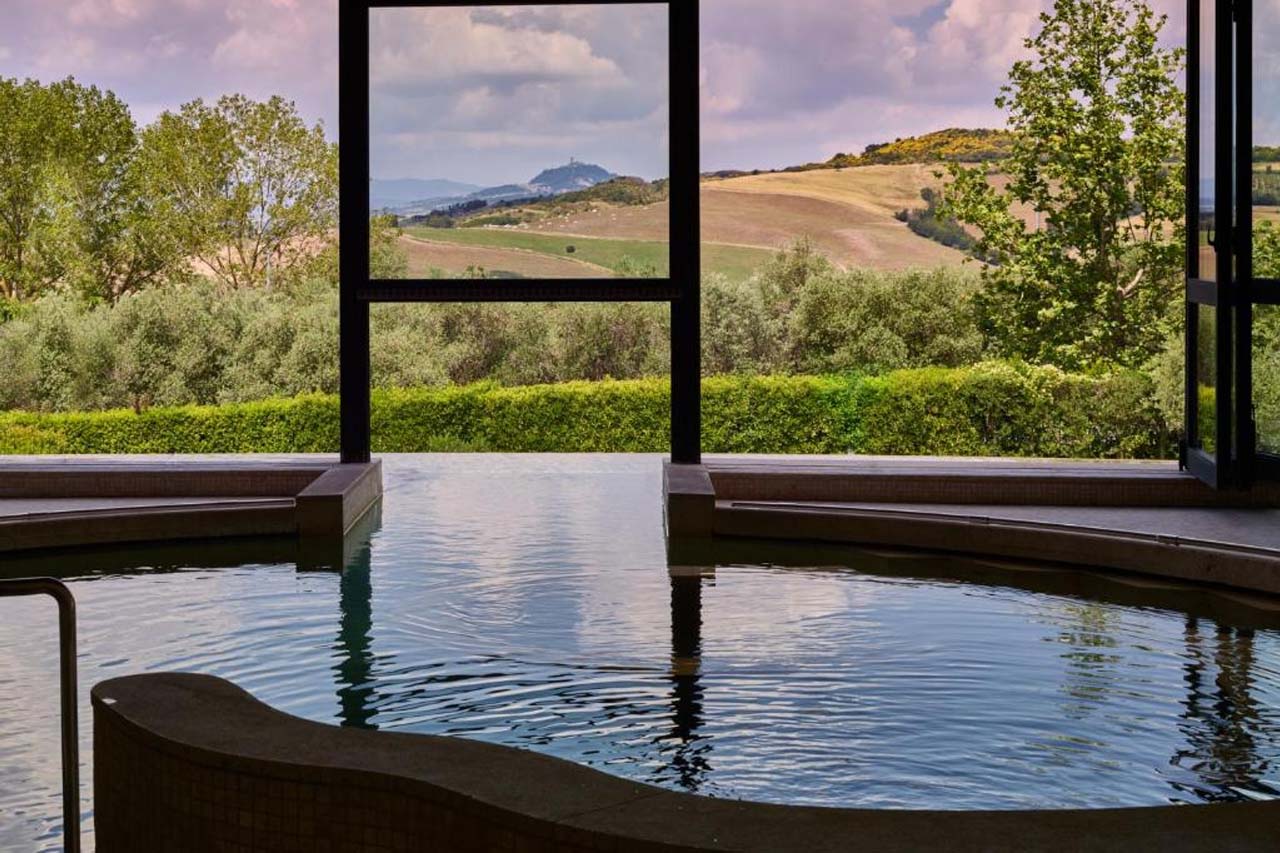
Fonteverde, San Casciano dei Bagni offers a renowned accommodation experience, complete with stunning views of the Tuscan countryside and proximity to natural hot springs .
Location : Località Terme 1, 53040 San Casciano dei Bagni, Italy
Features : 3 swimming pools, Spa, Balcony
Reviews : 8.9/10
Resort for Relaxing and Rejuvenation

If your ideal stay is one that provides total serenity, check out Adler Thermae Spa & Relax Resort in Bagno Vignoni , which is known for its thermal pools.
Location : Strada Di Bagno Vignoni 1, 53027 Bagno Vignoni, Italy
Features : 2 swimming pools, Spa, Restaurant
Reviews : 9.1/10
Golf Resort and Spa

In the heart of Tuscany’s Maremma region lies Terme di Saturnia Spa & Golf Resort , which boasts a championship golf course and a renowned natural spa.
Location : Via Della Follonata, Snc, 58014 Saturnia, Italy
Features : 2 swimming pools, Excellent Breakfast, Spa
Reviews : 8.8/10
Explore more: Saturnia Hot Springs – Cascading Waters in the Tuscan Countryside
What to Wear and Pack in Tuscany in November

If you’re planning on visiting Tuscany in November, it’s important to pack layered clothing, as the weather can vary throughout the day and change in an instant. Preparation is key.
Jackets and sweaters are great for cooler mornings and evenings, and comfortable jeans or pants that can easily be paired with different tops are perfect for versatility. During the day, when the sun comes out, you’ll want to have a hat and sunglasses.
Make sure to bring comfortable walking shoes for walking along the hilly terrain and cobblestone streets.
To deal with intermittent rain, pack rain gear, such as a waterproof jacket and an umbrella. Lastly, keep a camera, adapter, and converter on you at all times, so you can capture your time there!
Frequently Asked Questions About Tuscany In November
Here are the answers to the most frequently asked questions by travellers.
Is November a Good Time to Visit Tuscany, Italy?
November is a wonderful time to visit Tuscany if you don’t mind colder weather. The crowds are far smaller, and there are plenty of cultural and culinary experiences to indulge in.
Is Tuscany Pretty In November?
Tuscany is gorgeous in November. As the season shifts from summer to autumn, you’ll get to enjoy the vibrant colors of the Tuscany countryside, with growing vineyards, olive groves, and rolling hills.
What Is the Weather Like In Tuscany In November?
On average, temperatures in Tuscany during November range from around 41 to 59°F. It is also one of the rainiest months in Tuscany, so make sure to pack an umbrella and a waterproof jacket.
In conclusion, a trip to Tuscany in November offers a unique and enchanting experience for those willing to embrace the cooler weather and occasional rain. The off-season provides numerous advantages, including discounted prices, smaller crowds, and a chance to savor the region’s culinary delights, especially the celebrated white truffles. From exploring the autumn-colored countryside to partaking in the festivities of the White Truffle Festival and Saint Martino Fair, there are plenty of cultural and gastronomic experiences to enjoy. Tuscany’s beauty in November, with its vibrant landscapes and charming towns, coupled with the opportunity to indulge in freshly harvested olive oil and local dishes, makes it a compelling destination for those seeking a more intimate and authentic Italian experience.
RELATED ARTICLES MORE FROM AUTHOR
Italy in january – your winter guide for 10 things to do, popular articles, towns in tuscany – 15 jewels of italy’s rich culture, bolgheri – exploring the charm of tuscany’s wine country, val d’orcia – valley of castles, hot springs, and vineyards, popular posts, pitigliano – guide to southern tuscany’s best kept secret, sorano – guide to the ancient hill town in tuscany, giglio island, italy – 11 things to do and where to..., popular category.
- Campania 24
Skip Tuscany: Visit Italy's Most Underrated Region Instead
Forget Tuscany: opt for Umbria, Italy's quieter Green Heart with plenty to offer travelers.
- Umbria, known as the Green Heart of Italy, offers picturesque towns, waterfalls, and gourmet delights like truffles and Pecorino cheese.
- Tourists can explore charming towns like Montone, Assisi, and Perugia, as well as enjoy hiking trails in the region with stunning views.
- Consider visiting Umbria in April, May, or September to avoid the summer crowds and catch exciting festivals celebrating Italian culture and traditions.
The Italian region of Tuscany receives an influx of nearly 50 million tourists every year . Its crown jewel is Florence, an art capital that is brimming with Renaissance art, architecture, and monuments . As for popular towns like San Gimignano and Montepulciano , they are marked by rolling hills, picturesque vineyards, medieval architecture, and delicious food and wine.
It’s safe to state that Tuscany’s romantic charm is undeniable, but its neighboring region, Umbria , dubbed the Green Heart of Italy, is also worth exploring, and 31 of its towns and villages have been selected as Most Beautiful Villages of Italy . Here is why you should explore Umbria, Italy’s underrated region.
You Can Now Live In Italy On A Digital Nomad Visa
What to know about umbria, these are umbria's best places to visit.
Settled in the 6th century BCE by the Umbri tribe, Umbria was occupied by many forces through the centuries, including the Roman Empire, the Ostrogoths, the Byzantines, the Napoleonic Empire, and Nazi troops.
Today, it is a peaceful part of Italy that is home to the world’s tallest artificial waterfall (541 feet), the Cascata delle Marmore , created by the Romans in 271 BCE, and is mostly famous for its production of superior wine, tobacco, and olive oil.
Towns in Umbria like Montone, Spoleto, and Bevagna boast incredible natural scenery and a laid-back atmosphere you can’t find in larger Italian cities , while the biggest concentration of population is in Perugia, which features the country’s largest fortress, a Renaissance marvel called Rocca Paolina ; Terni, nestled in the plain of the River Nera; the egg-shaped Foligno and its intricate streets; and Città di Castello, surrounded by Renaissance walls and farmlands.
Tourists on a pilgrimage to Italy would do well to also check out the town of Assisi, perched on the western flank of Monte Subasio. It’s the birthplace of St Francis, one of the country’s patron saints, and its main attraction is the two-level, 13th-century Basilica , which welcomes visitors from 6 am to 9 pm.
And as far as the region's gourmet specialties are concerned, there are many items to indulge in, such as truffles, which grow abundantly there; the bold Pecorino and Caciotta cheeses; aged prosciutto, especially from the town of Norcia; Perugina chocolate; extra virgin olive oil; sausage lentil soup; and wine from Orvieto, Montefalco, Perugia, Spello, Todi, and Bevagna.
Consider a balloon ride over Assisi, Perugia, and Umbria !
10 Small Towns In Italy To Visit
What tourists think of umbria, favorite trails and restaurants make umbria worth visiting.
Some of the top hiking trails in Italy are in Gran Paradiso National Park and Tuscany’s Garfagnana Valleys, but Umbria also offers picturesque routes that have enchanted visiting backpackers, road trippers, and mountain bikers.
Here are the ones with the most enthusiastic reviews and the highest rating:
10 Ancient Roman Sites Worth Visiting In Italy
As for the best restaurants to enjoy the aforementioned specialties, here is a selection from Perugia, which not only boasts an incredibly well-preserved medieval center, but also stunning Gothic mansions, lively squares, and romantic pathways.
TripAdvisor's Travelers' Choice Restaurants
When to visit umbria, pick your favorite season based on your preferences.
As is the case in Tuscany and the whole of Italy, summer is the high season in Umbria. Therefore, April, May, and September are recommended for travelers wishing to enjoy pleasant weather and cheaper accommodation, but minus the scorching heat.
This stunning region comes alive with several exciting annual events and festivals that might help you choose the right time to book your trip, such as:
- Todi’s Italian Antiques show in mid-April, Gubbio’s Corsa dei Ceri (race) in mid-May
- Palio della Balestra (crossbow competition) on the last Sunday of May
- Orvieto’ Palio dell’Oca (medieval joust) toward the end May
- Perugia’s Umbria Jazz Summer in July
- Eurochocolate festival in October
- Fiume’s Crayfish Fair in mid-September
- Assisi’s Celebrations for St Francis of Assisi on October 4
- Torgiano’s Italian wine-judging competition at the end October
As for those wishing to snap colorful photos of Umbria's famous lentil, poppy, and daisy flowers, you'll want to visit in June, when the hills are particularly verdant, especially around the Sibillini Mountains and the town of Castelluccio di Norcia.
All in all, Umbria is as fascinating and romantic as Tuscany, with its lush landscapes, well-preserved historical towns and villages, and excellent food and wine, but minus the crowds and with better prices for lodging and restaurants.
Have you ever been? Are you willing to skip Tuscany in favor of Umbria? Tell us about your Italy trip in the comments!

IMAGES
VIDEO
COMMENTS
Tuscany's best travel months (also its busiest and most expensive) are April, May, June, September, and October. These months combine the convenience of peak season with pleasant weather. June is especially festive in the area, with parades, dances, and games in Florence for the feast of St. John the Baptist (June 24 each year).
Tuscany weather in January. January is the coldest month to visit with a typical daytime high of 10℃ (50℉) and a low of 3℃ (37℉) overnight. Snowfall and cold snaps are common towards the end of the month — Tuscans call these "giorni della merla" (blackbird days). An old tale recounts how January was outraged by the blackbirds ...
Summer is the season of sunflowers, medieval festivals, open air events and long days on the beach! If it's too hot you can also choose to take shelter in a museum like the Uffizi Gallery.Otherwise we suggest this 3 days itinerary in the Tuscan archipelago or - if you prefer the countryside atmosphere - one week in Tuscany with Cortona as home base.. If you like adventure and discovery you ...
For the best weather, visitors to Tuscany favor late spring, summer, and early fall. The months of April and May are increasingly warm and sunny without being too hot. June, and especially July and August, see hot weather, especially in inland cities. Tuscany's beach resorts are packed in July and August and they may remain crowded into the ...
JANUARY IN TUSCANY: GENNAIO Public Holidays in January to Watch Out For. January 1: Capodanno (New Year's Day) January 6: Befana (Epiphany) January in a Nutshell. The Christmas holiday season in Italy doesn't end until after the Epiphany, or Befana, on January 6.That means kids are still on winter vacation through the first week of the month.
The best times to visit Tuscany are between late September and October and between April and May. ... This is Tuscany's low season when average temperatures drop into the 30s at worst and the ...
Spring is one of the best times to visit Tuscany. Spring is a perfect season to visit Tuscany. By the end of March days are starting to get longer and the temperature is mild and pleasant (18°- 20ºC max), with the occasional shower. The trees are in blossom and the countryside is alive with birds and activity.
Tuscany is a fantastic destination throughout the calendar year. But there are advantages to visiting in spring and fall: you'll encounter fewer crowds, avoid high peak-season pricing on hotel rooms, and enjoy comfortable, sunny weather that's ideal for hiking, sightseeing, and the beach. Read on for more details on the best times to visit Tuscany—and the top events you won't want to miss ...
April is a real shoulder season for travel in Tuscany because as the spring weather brings warmers climes, more tourists are starting to arrive. ... Wine Tours: Take advantage of the lovely weather and visit Tuscany's best wineries in the countryside. JUNE. June is the start of the summer high season across Europe, as temperatures rise as ...
It is important to remember that the tourism season in Tuscany stretches from mid-April to the end of September with July and August being peak months.The best time to visit Tuscany is really in the quieter part of the season, from April to June and from September to October when weather is usually good, prices a bit lower (often called the mid season) and there are "fewer" tourists to crowd ...
A typical Tuscan village surrounded by nature. The summer season in Tuscany brings an average temperature of 86 degrees Fahrenheit (30 degrees Celsius), but they can soar to 104 degrees Fahrenheit (40 degrees Celsius) at worst. You may especially encounter the higher summer temperatures in areas like Florence, and during this time, you won't see much rain.
Siena, Tuscany. The best time to visit Tuscany is in mid-to-late spring (April to May) or early fall (September to October). The Tuscan landscape is at its most vibrant during these times and the weather is particularly pleasant, with temperatures around 63°F to 79°F. The fields are full of sunflowers during the summer months (June to August ...
Tuscany Travel Seasons. High Season (June through mid-September): Summer is the high season in Tuscany, a time when the weather is the warmest of the year with temperatures reaching 30°C and above. Attractions will be crowded and lines long, while accommodation rates are at their highest.
But when is the best time to visit Tuscany? Whether you want to avoid the peak season crowds, bask in the summer heat, or discover the local culture, planning your Tuscan trip in the right season is key. Let's explore the weather, travel tips, and must-see events that will make your trip to Tuscany unforgettable.
The best time to visit Tuscany is during mid-to-late spring (April to May) and early autumn (September to October). The Tuscan landscape is at its most vibrant and the weather is particularly pleasant, with temperatures around 17°C-23°C in spring and 20°C-26°C in autumn. In the summer months (June to August), the fields are full of ...
Enjoy a peaceful sunset from the Pienza balcony, looking over the "Gladiator's House" and all the rolling hills of Val d'Orcia. Sip a glass of red wine through the streets of Montepulciano, while taking an afternoon break to wait for the best light to come. Drive on the winding roads of Montalcino, stopping after every corner to take a few pictures, because.. "wow": that is going ...
Trying to balance the best Tuscany weather with the fewest crowds is a challenge. It's about finding a sweet spot, with pleasant weather, and avoiding the overcrowding that high season brings to the cities and popular day trip towns like San Gimignano.
Weather in Tuscany in the Fall: what to expect. The fall season in Italy starts on the 21st of September and ends on the 21st of December when the country enters the astronomical winter. Between September and December, temperatures will slowly but consistently fall and the hours of daylight will diminish. Name of the month.
Summer is therefore undoubtedly the best time to travel in Tuscany, but the transition months such as May and October are also impressive with mild temperatures and sunshine. They are therefore perfect for extensive explorations of the surroundings, visits to cultural cities and sights. During the autumn travel season you can observe the ...
For sunny skies and balmy beaches without sky-high heat indices, the best times to visit Italy are the late spring and early fall. Months like May and September offer temperatures in the 70s and ...
Pienza. By Isabelle, from Cultured Voyages. Without shadow of a doubt, one of the most beautiful towns in Tuscany is the renaissance town of Pienza. Pienza is located close to Montepulciano, meaning that it is extremely easy to combine a visit to both of these towns in one day, or to visit one while based in the other.
6. Experience the Grape Harvest. The harvest is one of the most beautiful moments in the wine production process. November in Tuscany, following the grape harvest season, is a time when the excitement and hard work of September and October give way to celebrations and the first tastings of the new wines.
The Aurelia is one of Italy's most storied roads, a thoroughfare since Roman times, bringing pilgrims and travelers up and down the coast from Rome into France. It remains one of the country's ...
Located in Terricciola, the winery is an architectural masterpiece surrounded by the Tuscan countryside. The one million-year-old soil is rich in limestone, sand, and clay. The winery offers ...
One-Way Flight to Perugia From the US. Price. LAX. $786. JFK. $551. All in all, Umbria is as fascinating and romantic as Tuscany, with its lush landscapes, well-preserved historical towns and villages, and excellent food and wine, but minus the crowds and with better prices for lodging and restaurants.
15 Best Tuscany Destinations To Visit Tuscany, Italy, is a region blessed with stunning landscapes, historic cities, and charming hilltop towns. Tuscany offers a wealth of attractions for visitors ...
Where To Stay In The Best Places To Go In July: Paros: Andronis Minois; Avant Mar; Parīlio. Luberon: Coquillade Provence; La Bastide; Villa Yolanda. Ogunquit: The Dunes on The Waterfront ...
One of the lower cost areas for retirement in Italy, Puglia is also home to historic cities, beautiful architecture, and UNESCO World Heritage sites, like the hilltop Castel del Monte. Using Bari ...
Get ready for a wine-filled adventure! With its rolling vineyards and charming wineries, Tuscany is a paradise for wine lovers. Picture yourself strolling through sun-drenched vineyards, tasting ...
Hurricane season runs from June 1 to November 30. Experts predict an 85 percent chance of an above-normal season, a 10 percent chance of a near-normal season and a 5 percent chance of a below ...